















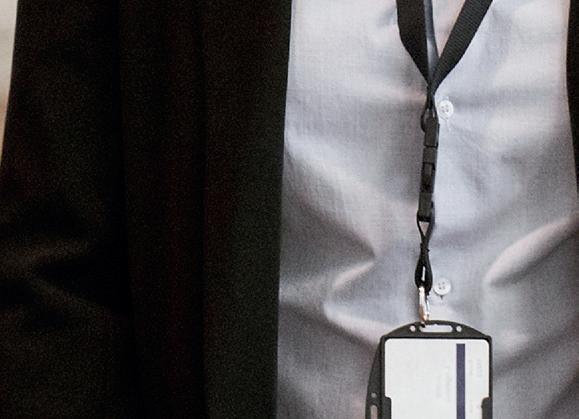










Elevate your sustainable hygiene management with our high quality, effective hand hygiene solutions. Depend on our broad, proven assortment of effective soaps, sanitisers and dispensers to meet the new hygiene expectations. Our specially formulated products and award-winning dispensers pair with industry-leading Tork paper products to promote hand hygiene. Learn mor e at:
tork.co.uk/skincare

tork.ie/skincare







kpm media Unit 1 Mill Place, Platt Business Estate, Maidstone Road, Sevenoaks, Kent TN15 8TB Tel: 01322 662289
Editor Sara Bean sara.bean@kpmmedia.co.uk
Assistant Editor & Social Media Development
Sarah O’Beirne sarah.obeirne@kpmmedia.co.uk Tel: 01322 476815
Director & Designer Warren Knight warren.knight@kpmmedia.co.uk Mob: 0780 1947757
Sales Director Danny Grange danny.grange@kpmmedia.co.uk Mob: 07867 418994
Business Administrator Maxine Howell maxine@kpmmedia.co.uk
Welcome to the Facilities Show edition of FMJ. The annual gathering of FMs at London’s ExCeL from 1618 May o ers FMs the chance to meet with leading suppliers, network with their peers and hear some inspiring presentations.
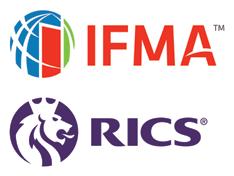
To give you a flavour of the three days, on page 34 we’ve gathered together a group of leading exhibitors on their plans for the show and what they’re most looking forward to seeing and doing during the event.
Editorial steering committee
Alan Hutchinson, Facilities Director, Howard Kennedy LLP
Charles Siddons, Head of Operations, NHS Property Services
Darren Miller, NBCUniversal, VP for International Workplace, Facilities & Real Estate
Ian Wade, Head of UK Estates, British Medical Association
Lucy Hind, Senior FM Lecturer, Leeds Beckett University
Marie Johnson, Head of Workplace & Wellbeing, Nominet

Russell Wood, Facilities Manager at Dentsu Aegis Network
Russell Burnaby, Head of FM, Regeneration and Environment, Brent Council
Simon Francis, Director of Estates and Facilities, The Institute of Cancer Research
Simone Fenton-Jarvis, Group Director of Workplace Consultancy and Transformation, Vpod Solutions
Stephen Bursi, Facilities Lead, BAE Systems
Wayne Young, Facilities Manager - Chair People Management SIG,IWFM
Total Average Net Circulation
SUPPORTED BY
10,682 July 2021 to June 2022
Accounts Diane Jarvis accounts@kpmmedia.co.uk Group CEO Nigel Copp nigel.copp@kpmgroup.co.uk kpm
© Copyright 2023 kpm media
The publisher does not necessarily agree with the views and opinions expressed by contributors. No material may be reproduced in part or whole without written permission from the editor. Editorial contributions are accepted on an all-rights basis only. Letters to the editor may be published in their entirety or in edited form and remain the property of kpm media. While due care is taken to ensure the accuracy of information contained in this magazine, the publishers cannot be held responsible for any errors in editorial articles or advertisements. Subscriptions are available to non-qualifying and overseas readers at £120 p.a. (UK), £160 p.a. (EU countries) and £240 p.a. (overseas-other).
Like all of us, the FM sector has undergone enormous disruption over the past few years and the Facilities Show will reflect that altered landscape. Technology, from data gathering to automation is now a vital part of the FM remit, which is why the exhibition floor now features a plethora of FM tech specialists, along with a dedicated Smart Building theatre covering a range of technical topics.
The FM theatre seminar programme however, also devotes a number of sessions to the human factors involved in supporting the workplace. There are a range of talks available which celebrate FMs contribution to society, from supporting local suppliers to paying the Living Wage, and how all of this can tie into meeting ESG goals.
We’ve flagged up some key ESG issues this month. This includes valuable insights (page 50) into demonstrating Social Value by measuring and reporting its progress.; and how the CUBE competition is encouraging building users to reduce energy wastage in commercial buildings which helps improve their ESG credentials.
Finally, in this edition, we present the results of the 2023 FMJ/Grundon waste management survey (page 30) which found transparency and commitment to environmental issues are now among the top requirements of a waste management provider. To discuss this or any other topics, visit FMJ on stand FM3220 during the show.
As always, we’d welcome your feedback about any aspect of the magazine, together with your insight into what’s happening in the FM sector.
sara.bean@kpmmedia.co.uk



We work with you to create value


One supplier for all your waste streams Earn thousands of pounds from your recycling

Engaging education programmes
Innovative waste technologies

NEWS & ANALYSIS
FMJ NEWS
06
This month’s summary of everything that has hit the headlines in the FM sector.
ASSOCIATION NEWS


08
The latest news and views from RICS and IWFM.
EVENT REPORT
some of the leading exhibitors on their plans for the show and the benefits of the seminar sessions.

42 Rachel Houghton of Business Moves Group has advice on keeping track of all your assets and maintaining up-to-date information on their condition and value.
10
A roundup of the Workplace Trends Research Summit which took place in April at the Cavendish Conference Centre, London and online.
ADVICE AND OPINION
14
COMMENT
12 Planned maintenance can help to prolong a building’s lifespan and avoid disrepair says James Fiske, CEO of the BCIS (Building Cost Information Service).


COMPLIANCE
14
All firefighter and evacuation li s in highrise residential buildings are now subject to an additional new monthly check. Lee Dean looks at the implications.
FAST FACTS
16
With the rapid growth of ChatGPT, it’s time to look at how facilities management can benefit from AI integration says Tom Shrive.
BLOG & SOCIAL MEDIA


18
The decarbonisation of our public property estates has to be people centric says Craig McGilvray, Amey’s Managing Director FM Business.
FM CLINIC
20

What initiatives and innovations can the built environment take to support a more strategic approach to asset management and promote a whole-life cost approach to property strategies and investment decisions?
26
The CUBE Competition leverages gamification to rally building users to reduce energy wastage in commercial buildings. Mark Bruno, Chief Ambassador for the CUBE Competition describes the benefits it brings
WASTE MANAGEMENT
44 Richard Sabin of Biotecture explains why FM providers and developers are introducing living walls into their developments.
46 Rob Legge, Group CEO at OCS explains how bringing Atalian Servest and OCS together is creating a fresh and transformed OCS brand.
30
The 2023 survey by FMJ in partnership with Grundon Waste Management reveals transparency and commitment to environmental issues are among the top requirements looked for in a waste management provider.
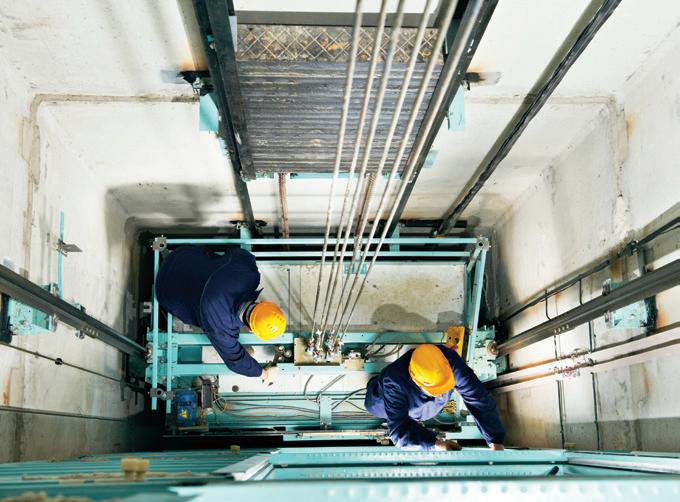
34
With the biggest event in the facilities calendar returning this month we hear from
64
PEOPLE
63 Find out who’s moving where in the facilities management profession.
RECRUITMENT
64 James Deeley of Boden Group says employers and recruitment experts need to act together to address an FM talent shortage to help secure the future of the sector
TRAINING

65 New styles of work demand fresh skills, so upskilling or reskilling will be essential in 2023 says Kelly Mansfield of International Workplace.
CAREERS NEWS
66
A brief roundup of the latest careers news in the facilities management sector.

50
As an intrinsic part of ESG there are increasing demands for Social Value in contracts. Guy Battle, CEO, Social Value Portal explains what a successful tender should look like.

52 Waste provider Axil is working with CBRE to meet ESG goals set by their client Cummins.



54 Changes to wayfinding signage regulations are a step towards taking H&S signage more seriously.
MIFM
55
New product and service launches and company news from the FM industry.









With the rise of hybrid working, ensuring colleagues are easily connected, whether they’re working in the o ice or remotely is becoming more and more significant; which is why technology and data are key. In HVAC, we learn how air purifiers can help improve the comfort of occupants, and in fire safety, consider how the latest government consultation on BS 9991 could a ect smoke control design. We report from Clerkenwell Design Week which showcases thousands of cutting-edge products, all designed to enhance the modern workplace. In our parking focus we’ve a guide to managing car parking facilities which ensure safety and accessibility for sta and visitors. And discover why retrofitting existing buildings has a critical role to play in reducing carbon emissions.
sara.bean@kpmmedia.co.uk
To register for your free copy of FMJ visit fmj.co.uk
The consequences of an accident at work can result in pain and suffering and potentially a loss of income for a worker. It can also cost an employer in terms of loss of working time from that employee, increased work from the investigation of accidents, dealing with insurers and solicitors in preparing statements or attending court for civil or criminal actions. For this reason, it is beneficial both to employers and their employees to comply with the relevant legislation and for every business owner and manager to take the proper precautions to make sure that their employees are safe while completing their work duties. Where an employer has failed to meet those duties, it may be that an employee or contractor will be able to bring a claim for injuries resulting from any breach.
Slips and trips
Whether working in a shop, factory or office, the prospect of injuring oneself from a slip or a trip is a risk. Employers must ensure that floors are kept free from substances or objects which may cause people to slip or trip. This will include ensuring that any spillages are clearly marked with the appropriate signage and that any potential trip hazards are fixed as soon as possible and coned off until they are fixed. It will also include having a policy and risk assessment to deal with checking for potential hazards.
Falling objects
There are many instances of workers being struck by falling items, and this issue is not limited to settings like warehouses. When objects fall off shelves or out of cabinets, it can result in some nasty injuries. This risk can be significantly decreased by providing sufficient storage cages and instructing staff on how to store things safely. On construction sites for example, netting or toe boards should be installed.
Repetitive strain injury
Repetitive strain injuries (RSI) can develop from any repeated motion of the joints, meaning it is not just an issue for those who frequently use heavy machinery, as it can even affect those who regularly use keyboards at work. The impact of RSI can be severe and long-standing, so it’s vital those in charge take preventative measures.

Muscle strains
Anyone who frequently lifts heavy objects at work are susceptible to strainrelated injuries, in particular back and neck strains. Employers have a duty to complete a manual handling risk assessment for routine tasks and to reduce manual handling so far as possible, by introducing mechanical means of handling. Employers should be providing safety briefings to their employees detailing the safest way to lift heavy items.
Lacerations
Any number of workplace tools can cause their user to suffer a painful cut. Employers can aid in preventing such incidents by setting up the proper procedures (including training) and supplying sufficient safety equipment. Equipment should have emergency stops and guards fitted to prevent access to machines when they are operating. Personal protective equipment (PPE) may include items such as gloves, safety glasses and shoes, earplugs or muffs, hard hats, respirators, or coveralls, vests and full body suits. Wearing such items can massively decrease the chances of being injured in an accident.



Industrial deafness is a common issue for those who are working in factory settings or other workplaces where loud noises are prevalent. Constant loud noises can lead to issues such as tinnitus. Employers have been aware since 1963 that exposure to noise can cause long-term hearing loss, and since 1989, workers have been protected under the Noise at Work Regulations. These regulations tell employers what they must do to keep their employees safe from noisy environments. Employers need to ensure that the level of noise in the workplace does not exceed 80-85 decibels and provide the proper equipment to protect employees from loud noises and industrial deafness.
Employers have a legal duty to keep employees safe while at work by taking certain steps to ensure the risks of accidents is reduced as much as possible. To ensure that falls from a height are avoided, employers should conduct thorough risk assessments of ladders, scaffolds, etc., and provide proficient supervision when performing high-risk work tasks. Employers should provide necessary training for those working at a height, supply PPE such as harnesses, nets and fall protection devices and develop and enforce a safe system of work.
Hybrid working with a collaborative central space is the preferred postpandemic working style, according to a new workplace trends report published by Mace. The Mace Operate Workplace Survey looked at the enduring role of a central o ice for businesses and considered what an o ice space needs to o er in an era of hybrid working.
The majority of respondents (87 per cent) said that interaction with people and workplace culture are the main benefits of going to the o ice with employees and employers seeing eye-to-eye on the need for collaboration for motivation, resilience and e ective hybrid working.
Some 60 per cent of respondents ranked o ice redesign, to support activity-based and collaborative working, as the most or second-most e ective way to encourage a return to the o ice showing that corporate real estate leaders have listened to what building users want.
Most businesses had already made, or plan to make, changes to their workplace to o er greater flexibility to encourage employees back to the o ice. Thirty-nine per cent of respondents said o ice design had been updated already, with 27 per cent planning to make changes.
The survey found that hybrid working is here to stay, with 78 per cent of respondents wanting one or more o ice days each week – the most popular choice being more than two days a week in the o ice (44 per cent).
The adoption of technology was highlighted as an area of opportunity to further improve the workplace experience, with 43 per cent of those surveyed wanting to see a workplace experience app implemented, with 17 per cent saying one has been implemented in their workplace in the past six months. To read the Survey Report visit https://bit.ly/4231jl7








The NABERS UK Energy for o ices rating scheme has been expanded by the Building Research Establishment (BRE) and will now include Whole Building and Tenancy ratings.
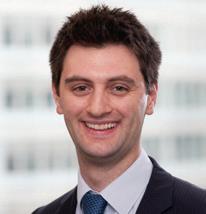
These two additional ratings have joined the NABERS UK Base Buildings rating and complete the NABERS UK Energy for O ices suite, meaning that both owners and occupiers can rate their spaces.

NABERS UK Energy for O ices rates the actual energy performance of commercial o ices based on metered energy consumption. Building owners can now undertake assessments and verify the energy performance of their whole building, which is especially relevant for owners who have single occupancy or for buildings where the metering configuration does not facilitate a base building rating (which covers owners central services, heating and cooling systems and shared services).
O ice occupiers can also now use NABERS UK to assess the energy used by their tenanted space, which will typically include lighting and power, special tenancy requirements or local air conditioning.
All of these ratings provide a vital measure of the energy performance of o ice buildings, allowing owners and occupiers to understand their current performance using a star rating of one to six and to target and drive improvements in energy e iciency.
New analysis has found that on average hybrid working employees deliver nearly two extra weeks of work a year for their employer as well as working harder and better in a hybrid environment.
The results of the analysis — which shows the benefits of hybrid working for organisations — are a combination of academic research and studies by global workplace consultancy Advanced Workplace Associates (AWA). They are included in AWA’s latest report, ‘Why Employers Benefit From Hybrid Working’, which also found that employees often work better when in a distractionfree environment, with more than half their time dedicated to working alone or focussed work.
The National Bureau of Economic Research, in the US, has found that workers not going into an office save on average 72 minutes a day from not having to commute. Of this time, they dedicate 28.8 minutes to additional work. AWA’s Hybrid Working Index, a global study of 220 offices in 33 countries, representing nearly 250,000 employees, during October and November 2022, revealed that employees are working from home an average of 3.5 days a week.
Bringing those studies together would suggest that employees with flexible arrangements work an additional 101 minutes, or 1.7 hours, a week. Over a typical working year of approximately 45 weeks, this would equate to 75.6 extra hours of work, or just over 9.5 days, assuming an eighthour day — that’s nearly two whole extra work weeks.
You can read the AWA report by visiting https:// www.advanced-workplace. com/report/why-employersbenefit-from-hybridworking-april-2023/
Thisis the warning from a new report ‘The Role of Retrofitting our Non-Domestic Buildings in the Race to Net Zero’ by Ridge and Partners LLP, a multi-discipline property and construction consultancy.

The report shows that fewer than one in four public or private sector organisations is attempting to make their non-domestic premises more environmentally sustainable and just one in 10 is assigning any kind of budget to retrofitting buildings to reduce their environmental impact.
According to the 101 property and facilities heads from leading UK organisations questioned for the report, the key problem is attitude of UK boards, both to their buildings and to those who manage them. For instance, despite 76 per cent of organisations working towards net zero, 55 per cent of facilities managers say their boards simply do not see retrofitting buildings as part of their net zero strategy. Indeed, 23 per cent of the heads of buildings in the largest companies haven’t been involved in any net zero planning at all. A further 47 per cent say even when they are involved, they are too removed from environmental discussions to be able to make a meaningful contribution.
The report also found that the vast majority (86 per cent) of organisations also underestimate the need to retrofit buildings to make them more energy e icient. Over a third mistakenly believe less than 39 per cent of the UK’s current building stock will still be in use by 2050. Whereas in reality, it will be nearer twice this level at 70 per cent. Beyond board attitudes, the report identifies four further things which need to be addressed to improve the situation:
How building estate’s budgets are set need to change. Over half (54 per cent) of organisations set their building budgets based on the past year’s costs. This approach will never accommodate a major retrofit programme.
The government needs to take steps to make retrofitting more attractive. Fi y-two per cent of facilities heads believe VAT on refurbishments should be removed. Almost half (49 per cent) say business rates discourage retrofit while over half call for financial incentives to encourage retrofitting of buildings.
Retrofit myths need exploding. For instance, 45 per cent of those in charge of buildings believe if the grid is carbon neutral, they don’t need to worry about getting their buildings to net zero. Twenty-four per cent feel that retrofitting won’t make a big enough di erence to their building’s carbon footprint.
Organisations also need expert support. Thirty-one per cent fear retrofitting’s disruption, 29 per cent lack the bandwidth for such a project and 25 per cent don’t know how to make a business case for it.
Read the report here https://ridge.co.uk/insights/the-uks-retrofit-crisis/
16-18 MAY 2023 www.facilitiesshow.com
06-08 JUNE 2023
FOOTPRINT+ Brighton Seafront www.footprintplus.com
13 JUNE 2023
The Sustainable Workplace Conference London and online www.workplacetrends.co
14 JUNE 2023
SMARTBUILDINGS 23 London https://bit.ly/3kPfoCu
03-04 JULY 2023
FM FORUM Deansgate Hotel, Manchester www.facilitiesmanagementforum.co.uk
07 SEPTEMBER 2023
Smart Buildings & Sustainability Leaders Forum The VOX Birmingham http://bit.ly/3Z8JmjX
13-14 SEPTEMBER 2023
RWM Letsrecycle Live NEC, Birmingham www.rwmexhibition.com
19 SEPTEMBER 2023
Healthcare Facilities Management The National Conference Centre, Birmingham www.healthcarefacilities.co.uk
22-26 SEPTEMBER 2023
International Security Expo Olympia, London www.internationalsecurityexpo.com
12 OCTOBER 2023
BESA Annual Conference Novotel London West www.thebesa.com
Irecently hosted a RICS webinar, Technology and cyber risk in buildings, which featured Dan Hughes, Director, Alpha Property Insight and Freya Yang, Lead SmartScore Building Technology. The main theme that ran through the session was how the FM profession can continue to deliver value while positioning itself at a more senior level.


This is particularly significant when it comes to the growing role of technology in facilities management. As Dan Hughes pointed out, buildings used to be about bricks and mortar but now there is a huge element of technology involved, no matter the size of the site. Whether it’s access control, the BMS or the WiFi; we’ve moved on from a world where buildings were o -line analogue environments to one where technology can help us deliver a better experience. There
are a lot of advantages to this but they bring new challenges.
The widespread adoption of technology means fresh responsibilities for FMs in managing cyber risk. As Hughes explains: “FM was all about the nuts and bolts of keeping buildings running, but as this has evolved over time, technology has become part of the solution; improving the services and the e iciencies, which is better for both occupiers and the environment, but comes with additional risks.
“Because facilities managers are usually responsible for the overall operation of a building this is now going to include the technology. That means they need to learn about technology and acquire new skills, but only to a point.
“FMs do not need to become IT experts and they don’t need to understand coding. All they have to do is understand who they have to talk to and who they need to ask the right questions of – and there are plenty of IT and technology people available who are able to answer those questions and support them. The important thing for FMs is an
understanding of the building and its assets.”



A recent RICS FM survey found that 16 per cent of respondents had experienced problems with cybersecurity, but far too o en, organisations are reluctant to invest in improving cyber protection up front which is a minuscule cost compared to the damage that can be caused by a cyber hack.
“This is why,” said Hughes, “as we move forwards the human skills are going to become more important from a facilities and property managers perspective as it is they who manage the buildings. This will include, making decisions on what data is collected, how it is used and how it is communicated, all of which requires interacting with stakeholders. As those human skills become more important data ethics is going to be a key role of FM’s roles by representing that ethical human element.”
FMs should begin by asking ‘what building assets have we got and what are the challenges we are facing?’ As a guide, the IBOS standard sets out the data that needs to be captured to measure building performance - addressing the same challenge but from a risk perspective.
n 2 May, we will publish our latest research into the performance of the workplace and FM sector. The publication is supported by a webinar on Wednesday 3 May, where we will discuss the key findings (if you miss it, the recording will be available on the Insight section of our website).

The IWFM Market Outlook Survey, which the Institute issues every year, puts the key questions direct to the professionals, providing our members with vital insights into the sector’s performance over the past year, its expectations for the coming year, the biggest challenges it’s facing, and, new for 2023, IWFM thinking on how best to navigate them.
Unsurprisingly, this year’s report reveals a dampened outlook for 2023, with higher costs, squeezed cash flows, and a stuttering economy among the challenges causing more than double the proportion of FMs to expect market conditions to worsen when compared to the results from 2022.
OIn 2022, 15 per cent predicted worse conditions, but in 2023 this figure stands at 31 per cent.
It isn’t all doom and gloom, however, because just over 40 per cent of respondents believed the market will either improve or improve significantly in the next year. With that said, it is notable that almost 60 per cent of respondents to the 2022 survey expected market conditions to improve, which renders this year’s results significantly more pessimistic by comparison.
A variety of factors were identified as having either a positive or significantly positive impact on the sector in this year’s research. A selection of these are changes in building safety legislation (58 per cent), opportunities to support climate change measures (55 per cent), and financial investment to mitigate climate change impacts (41 per cent).
Given it is IWFM’s ambition to foster improved EDI practices and better outcomes for all within our industry, it was very welcome to see its continued growth in importance. Almost seven in 10 respondents (69 per cent) indicated they had seen an increased demand for EDI measures within their organisation, while just over half (51 per cent)
believe this is true for the market as a whole.
There are many more findings, plus tips on navigating through some of the key challenges FMs are facing, in the full IWFM Market Outlook 2023 survey report. This will be available for download on iwfm.org.uk/insight. IWFM members can access it for free as a member benefit, but non-members can also purchase a copy.
There is no getting away from the fact that 2023 will be another tough year. Challenges both old and new will again test our industry and draw on the resilience and problem-solving abilities honed during the last few years.
But among the clouds shines a ray of light: the variety of opportunities for the sector to grow and make a real di erence, such as building safety, technology, and the sustainability agenda. Importantly, the report also provides a range of useful ideas to support our members in mitigating the worst impacts of the challenges they face. I believe a brighter future awaits, but we have a lot of work to do to get there.

Colt can save you money and time.
Streamline your smoke control and damper maintenance management, while eliminating the need for secondary contractors and call-out charges. Colt can take care of all your smoke control and damper servicing needs in one package.
The benefits of a service contract with Colt.


Colt is the UK’s leading and largest supplier of smoke control maintenance and as such, we have the largest team of engineers stationed up and down the country. Our team is dedicated to delivering quality service 365 days a year, 24 hours a day.



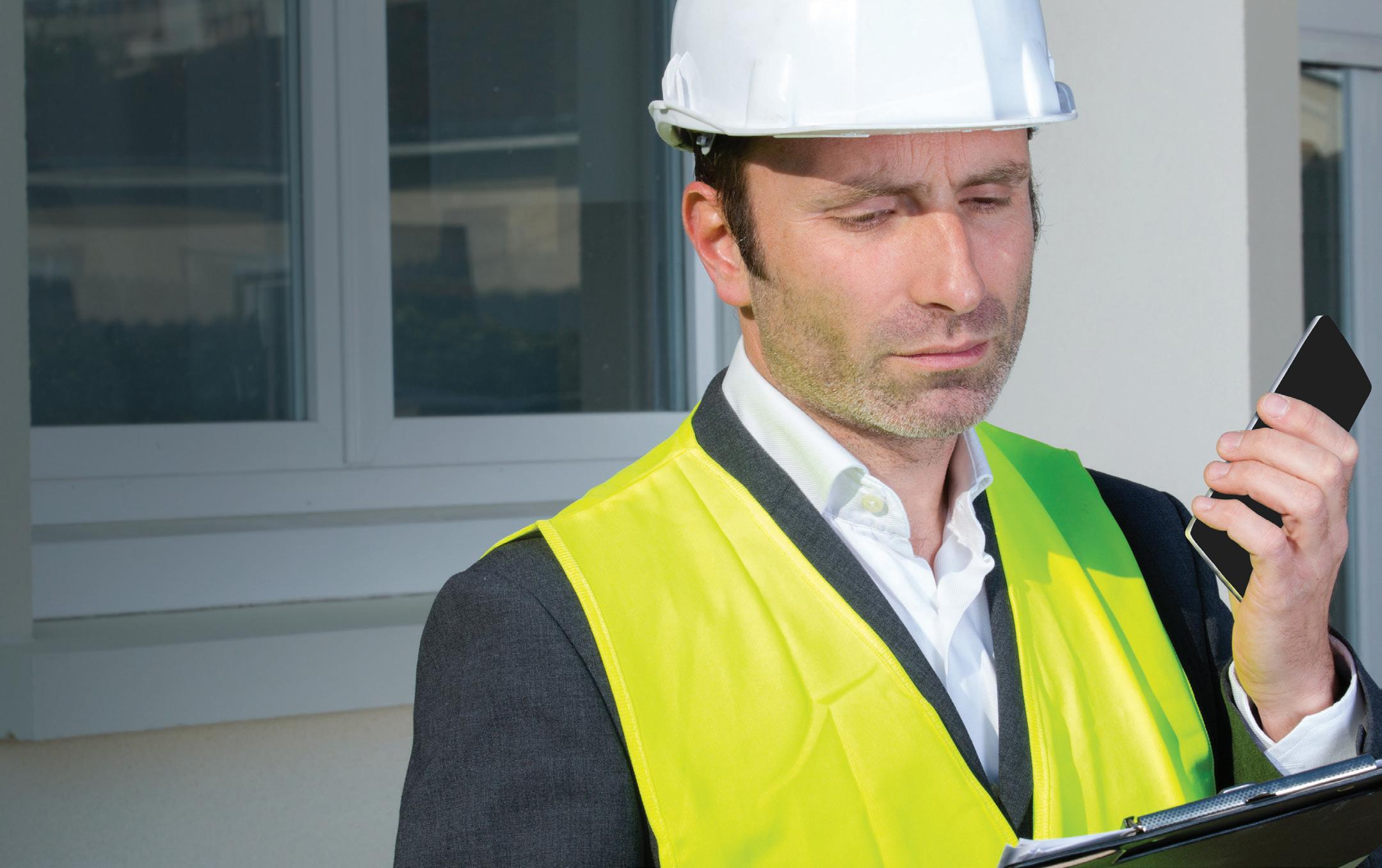
Your legal obligation.
Fire and smoke dampers play a very important role in a building’s fire safety system and under the Regulatory Reform (Fire Safety) Order 2005, it is the legal duty of the ‘Responsible Person’ in your company to oversee their maintenance and testing. It is imperative that your dampers are maintained properly by a competent company.
Colt is just such a company.
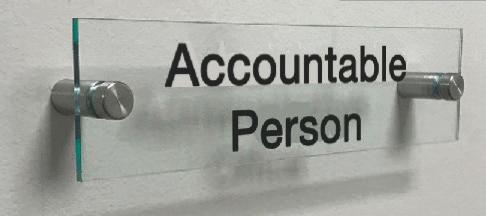
As well as getting you the UK’s most competent engineers, the Colt service contract comes with a whole host of other valuable benefits.
One call is all it takes to find out more. Call 02392 491735, visit coltinfo.co.uk/service-maintenance.html or email service@uk.coltgroup.com
You may already have your smoke control system maintained by Colt. And other dampers serviced elsewhere.
Don’t pay twice for your dampers servicing. Call Colt once.
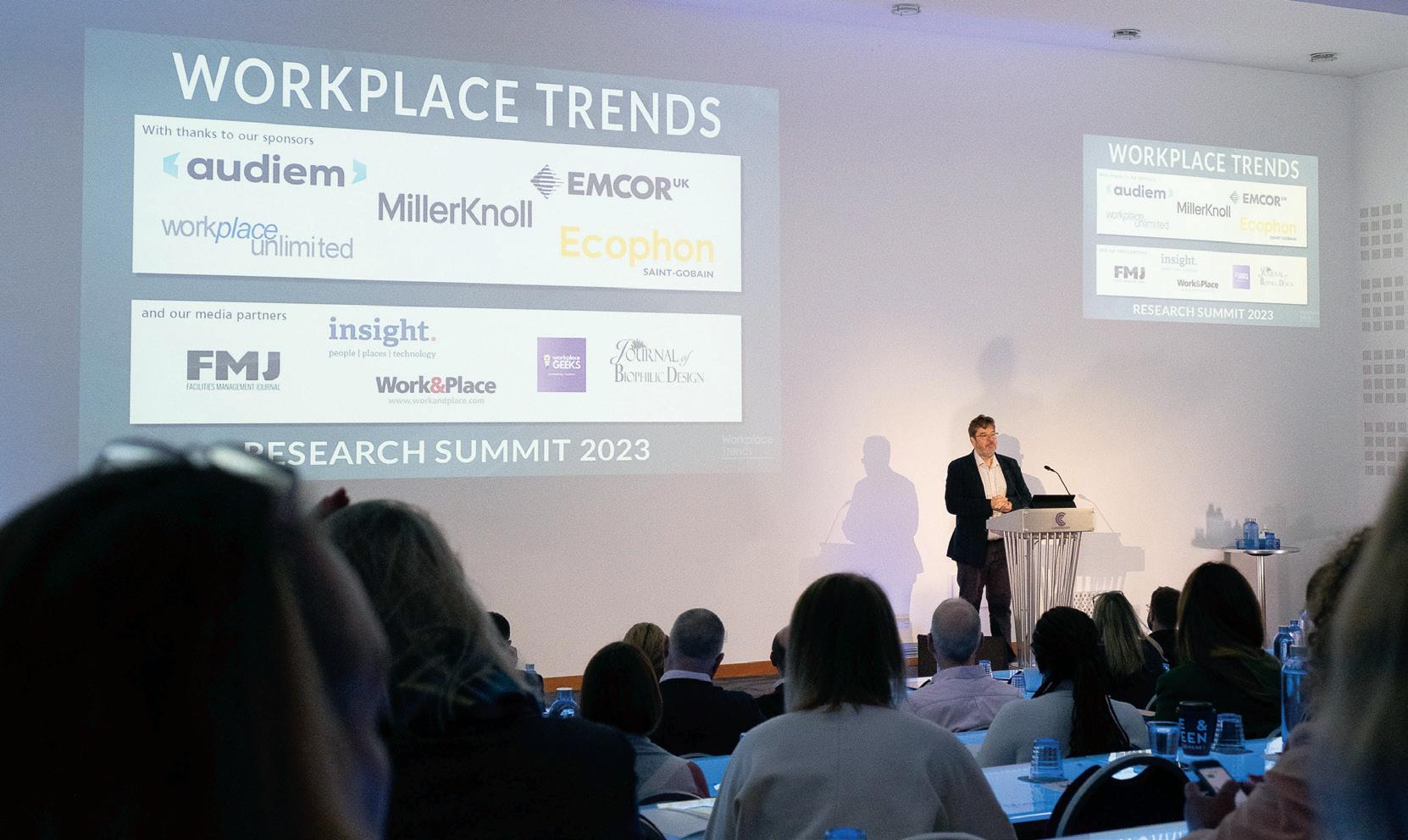
lonely’, want to feel connected but act disconnected and the creation of a den captures that need to alone together.”
Lene Becker of LAIKA Rumdesign echoed this sentiment in her look at mental wellbeing at work, where she said good design instils occupants with a feeling of connectedness but gives them the choice to opt for quieter areas. Reflecting this approach, Paige Hodsman of Brunel University and Saint-Gobain Ecophon put forward a strong argument for considering both acoustic perceptions and personality traits when assessing the causes and implications of burnout.
Research Summit which took place in April at the Cavendish Conference Centre, London and online, Nigel Oseland, co-curator and morning moderator reminded delegates that all the content is peer reviewed and it showed in the quality and depth of the presentations.
We’re all grappling with hybrid working said Bertie van Wyk of MillerKnoll Insight Group. His trends update revealed that 81 per cent of employees want flexibility on where they work and a staggering 93 per cent when they work. But people also need structure, and the research found employees who don’t believe their company is being very transparent about their post-pandemic remote working policies are 2.3 times more likely to look for a new position.
“Do we care whether we go into the o ice or not to do our jobs?” asked Lorna Landells and Darren Yates of Remit Consulting in their survey into how the pandemic had impacted o ice occupancy levels. The answer according to the research is yes. While productivity spiked at the beginning of lockdown there has been a steady downward
trend as feelings of isolation and lack of collaboration has increased. What happens when o ices are no longer an active asset to support employee connection, networks and relationships? Rachel Casanova and Sophie Schuller of Cushman & Wakefield consideration of these human factors found that high performance buildings don’t compensate for mediocre management. When expectations for a workplace are set at a higher threshold, they warned, the organisational culture needs to match up.
Taking a deeper dive into the behaviours of o ice workers, Dr Brett Pollard of Hassell study of associations between movement and o ice layout provided some illuminating insights into o ice habits. This included the more work-points people could see, the less they moved; while placing amenities further away to encourage movement resulted in ‘work arounds,’ such as stockpiling rubbish, utilising print storage functions and even drinking less water.
In his research on two institutions o ering activity-based working, Dan
Wakelin of HCG discovered that with less populated o ices, some occupants ‘claimed’ space ownership by simply showing up more regularly. An organisation which speaks of flexibility but manages by presence will struggle to introduce activity-based working, he said. “My challenge to you is to make sure your workplace is doing and saying the things you want it to say.”
Dr Harriet Shortt from the University of the West of England & Bibo Studios took us on a visual tour of the Bristol Business School building with the use of participant-led photography to illustrate how students and teaching sta were utilising a very transparent and open plan building. It emerged that many users had a sense of surveillance in the space, and that striving to put the ‘brand on show’ led occupants to create their own private den’s.
Buildings may encourage collaboration and being together but we also need privacy and space for ‘deep work’ explained Shortt. People may choose to go to the building to be near other people but also want their own space. She advised: “We need to develop a language for this evolving need to be ‘with and without’ or rather ‘alone together’. We’re ‘alone not
It’s important that workplaces are designed for inclusivity for all types of brains said David O’Coimim of Nook. He postured the idea of the open plan workplace being like a stage which can be a challenge for the neurodiverse in particular. Reflecting the creation of dens in the Bristol case study, he suggested ‘hackability’ in furniture and fitting design which o ers occupants the flexibility to create their own personalised spaces.
Rounding o the day, Kasia Maynard of the Gensler Research Institute presented more evidence of people’s needs to be together and apart; as it’s research shows the two main reasons people are going back to the o ice is to work in person with colleagues and focus on their work. Workplaces that have e ective spaces and deliver a great experience will become destinations of choice she added, which includes ensuring amenities – from co ee shops and food outlets to fitness and wellbeing facilities are available whether in the local area or on-site.
With the establishment of hybrid work patterns there is no better time to rethink work and how it sits in a new ecosystem, concluded Maynard. It seems this new workplace is where you can still feel connected but have the option of working alone.
The overriding theme of the Workplace Trends Research Summit was the challenge of creating workspaces where people can both collaborate and concentrate, work together but have the choice of being apart




















Tom attended a blind customer’s house where he found the customer’s dog had passed away. The customer was completely unaware.
Tom worked tirelessly to complete the job and then respectfully informed the customer, and provided comfort until his carer arrived.



Drainage, sewage pump, tanker and plumbing solutions. Find out more: www.metrorod.co.uk











Most people would run away, we’re not most people.
if funding isn’t awarded and the building fails because maintenance wasn’t carried out, the responsibility could lie with the organisation which grants funding, rather than the body responsible for maintenance.
A planned programme of repairs and maintenance encourages organisations to make better, informed decisions about the projects that need to be prioritised in their maintenance backlog and what they can and can’t a ord.
For example, it may be cheaper in the short term to patch up a roof each year but over a 10-year period it could be more cost-e ective to replace it.
It’s worth noting that many of these decisions will be based on what an individual or organisation considers to be a viable building – these tend to be subjective and based on a variety of di erent circumstances. Although, in some cases there are fears there could be dire consequences, if these decisions aren’t made – last year, the Department of Education admitted in its annual report that “‘there is a risk of collapse of blocks in some schools that are at, or approaching, the end of their designed life expectancy.”
With maintenance costs rising seven per cent (6.7 per cent) in 2022 and set to rise by five per cent (4.8 per cent) this year, it’s no surprise that the latest forecasts indicate repair and maintenance demand (as measured by construction output) is expected to fall by around 2.9 per cent.
However, although pressures on budgets may tempt organisations to cut costs in this area it’s always a false economy – here’s why repairs and maintenance should still be factored into any budget.

Over the past decade, several West End theatres have attracted publicity for all the wrong reasons due to their ceilings collapsing. The causes may vary – in the case of Apollo Theatre the factors that contributed to the incident were heavy rainfall and the deterioration of wadding ties.
But it's likely these incidences could have been avoided, or at least mitigated, with the help of a planned repairs and maintenance programme. Although budgeting for planned maintenance may be costly upfront, it will mitigate against loss of revenue and unforeseen large expenditures – Apollo Theatre remained closed for over three months.
The well-publicised case of two-year-old Awaab Ishak is a tragic example of what can happen when housing associations fail to act on health and safety issues raised by residents. The court’s verdict, which ruled that Awaab died from prolonged exposure to black mould, has prompted many councils and housing associations to review and address their maintenance schedules. In the past year, many have also faced a surge in legal disrepair claims.
And as the government looks set to toughen regulation on social housing, procedures to treat and prevent mould could become as mandatory as annual boiler servicing and electrical checks.
Ordinarily, once an organisation has surveyed its portfolio of properties, it will outline a planned schedule of maintenance. Sometimes – in the case of the public sector – they’ll need to identify revenue funding to ensure repairs and preventative measures can be carried out.
A robust cost plan can help with two things: it can provide justification for funding but also give some protection against legal claims – i.e.
The obligations of private landlords and local authorities tend to vary, due to lease-length. Local authorities o en have a longer-vested interest in maintaining public housing or buildings. In contrast, some private landlords don’t regard their property as a long-term investment, so they may not consider repairs and maintenance to be essential.
However, any technical standards or legislation that’s brought in for the public sector – such as the Homes (Fitness for Human Habitation) Act and, most recently, Awaab’s Law, a new amendment to the Social Housing Regulation Bill – tends to be replicated in the private sector. Therefore, private landlords may have to fulfil tighter regulations on disrepair too.

Any person or organisation who owns or maintains a building, has a responsibility to maintain it and ensure it conforms to a certain standard and level of regulatory requirements.
A planned maintenance programme helps to ensure that a building or property is fit for human habitation and lettable. It will also mitigate against unexpected expenditure and help an organisation avoid loss of income or litigation.
The Building Cost Information Service collects, analyses and interprets building cost information, from the design phase through to FM.
To maintain, or not to maintain? Repairs and maintenance are still the right answer says James Fiske, CEO of the BCIS
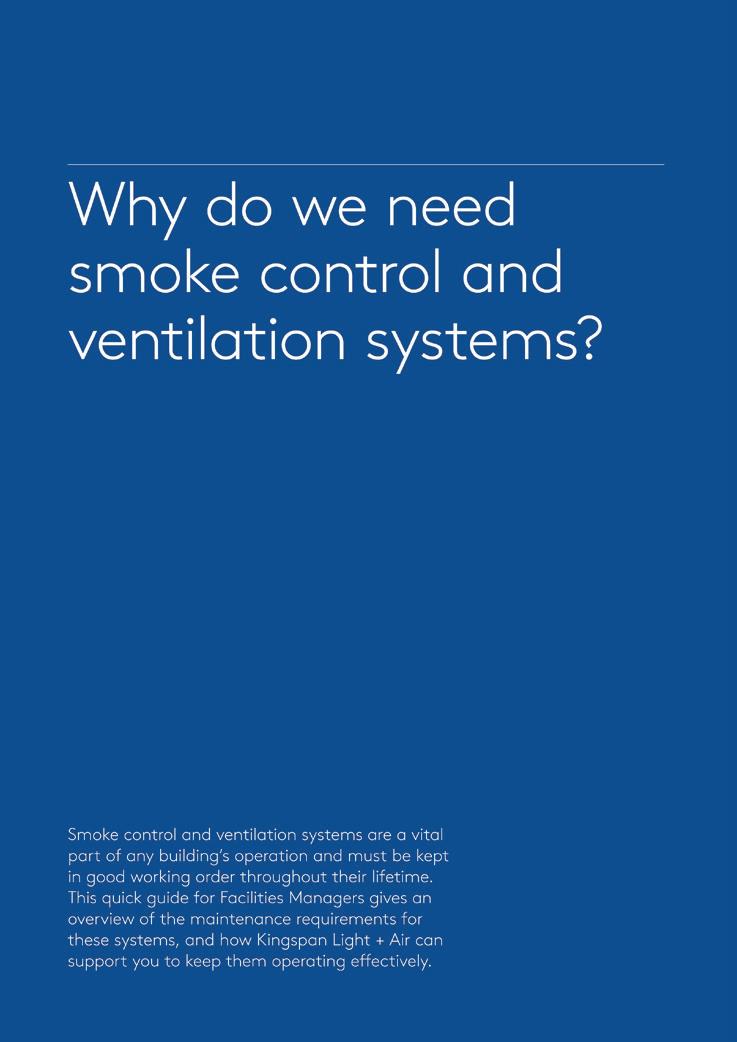
Keeping smoke control and ventilation systems in good working order is vital to the operation of any building. Failure of a single element can impact the effectiveness of your system, potentially resulting in complete breakdown and unsafe conditions in your building. Therefore, it should be regularly tested and maintained. This is a legal requirement and should be done by a competent technical professional.
Our useful guide for Facilities Managers gives an overview of the maintenance requirements for these systems, and how Kingspan Light + Air can support you to keep them operating effectively. Scan the QR code to download.
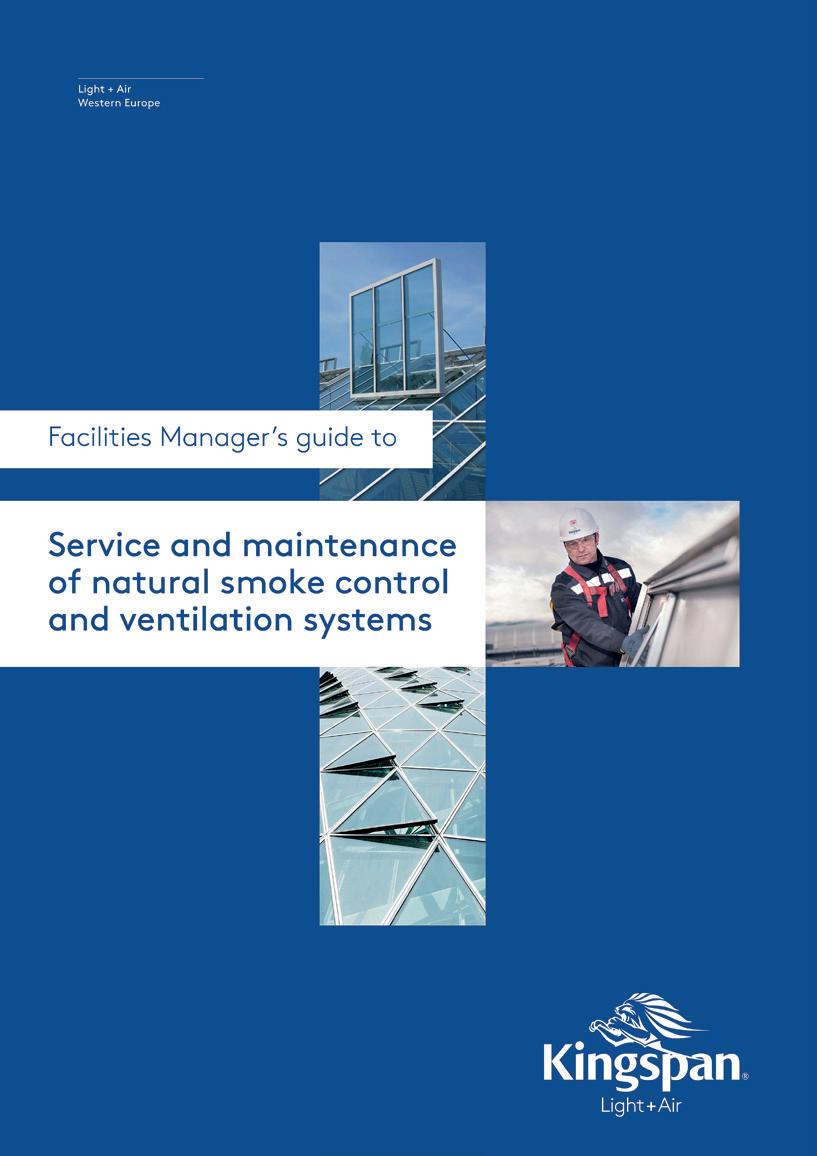

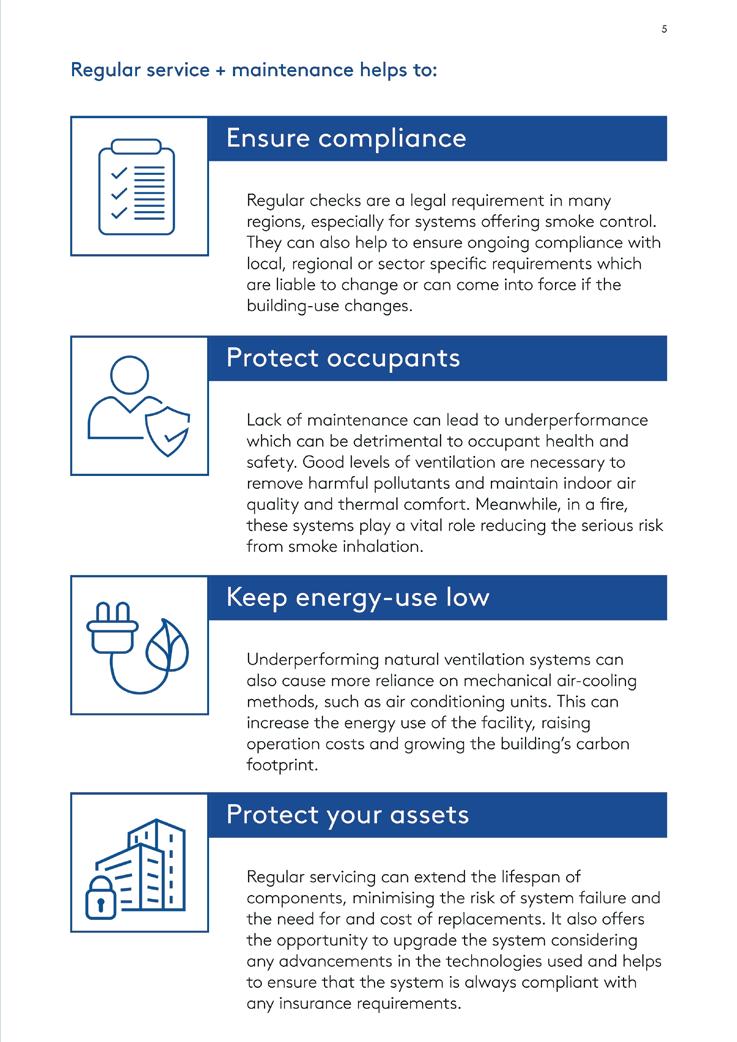
Smoke control systems play a critical role in a building’s fi re safety system, which is why it is imperative that they are maintained properly by a competent company. This is a requirement of the Regulatory Reform (Fire Safety) Order 2005 and BS9999 gives a best practice framework for damper maintenance and testing.
Our dedicated team of engineers work with clients to regularly inspect and test smoke ventilation
systems to ensure that they are working properly and are fully compliant with local regulations. We understand that each building is unique and that’s why we tailor our maintenance plans to meet your specifi c needs. We offer a range of packages to suit all building requirements including both annual and multi visit annual contracts for smoke ventilation system maintenance.




Our experts are available nationwide 24/7, 365 days a year to respond to system failures and call out requests. They are also equipped to perform remedial works and preventative refurbishment to replace older or broken equipment as they carry a comprehensive stock of spare parts.
www.kingspan.com/gb/en/services/smoke-control-system-maintenance/
From January 23, 2023 all firefighter and evacuation lifts in high-rise residential buildings are now subject to an additional new monthly check. Lee Dean Director of lift consulting engineers, LECS UK looks at the implications and the new responsibilities for building managers
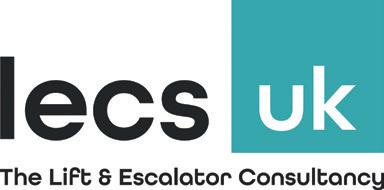

TheGrenfell Tower Inquiry noted in the Phase 1 report that: “When the firefighters attended the fire at Grenfell Tower, they were unable to operate the mechanism that should have allowed them to take control of the li s.”
The Inquiry recommended that the owner and manager of every high-rise residential building be required by law to carry out regular inspections of any li s that are designed to be used by firefighters and to report these results to the fire and rescue service at monthly intervals. They are also required to undertake tests of the mechanism that allows firefighters to take control of the li s and to inform the fire rescue service monthly that they have been undertaken.
For li s that fall under the Fire Safety (England) Regulations 2022 (FSER), these new regulations sit within the Fire Safety Order and make it a legal requirement for the ‘responsible person’ of a highrise residential building (HRRB) to carry out these monthly routine checks of firefighter and evacuation li s.
Where responsible persons identify, either through the monthly checks or via any other routine checks, that a relevant li or mechanism has a fault or is out of service, they must report it to the local fire and rescue service electronically.
The ‘responsible person’ will also be required to record the outcome of these monthly checks in an open and transparent way that is accessible to residents - e.g. by posting them on a notice board or
making them available to a resident’s association.
It is important to know that these Regulations add to a ‘responsible person’s’ existing duties under the Fire Safety Order in relation to mid- and high-rise apartment buildings, and also require them to provide information to the fire and rescue services so they can plan their operations and take additional safety precautions.
The monthly assessment is to check that firefighter and evacuation li s are in good repair and in e icient working order. Importantly, these checks can be carried out by the ‘responsible person’.
All li s, including secondary or back-up power supplies, as well as any other fire-fighting equipment are already subject to a suitable programme of maintenance and inspection. These checks are designed to be executed by a building owner or responsible person i.e. there is no legal requirement for a li -specialist to carry out these checks, and include:
Weekly & monthly routine check (functionality):
This is to check that the recall and alarm functions are working correctly.
It also tests the operation of the evacuation and firefighters lift switches.
Monthly routine checks (secondary power supplies):
This involves simulating a failure of primary power and changeover to a secondary power supply. If a generator provides the secondary power supply, it should energise the lift(s) for at least one hour.
Owners and managers of buildings with these types of lifts may not be aware of or prepared for this regulation change. Identifying the ‘responsible person’, the types of lifts and the methodology in carrying out checks can be confusing.
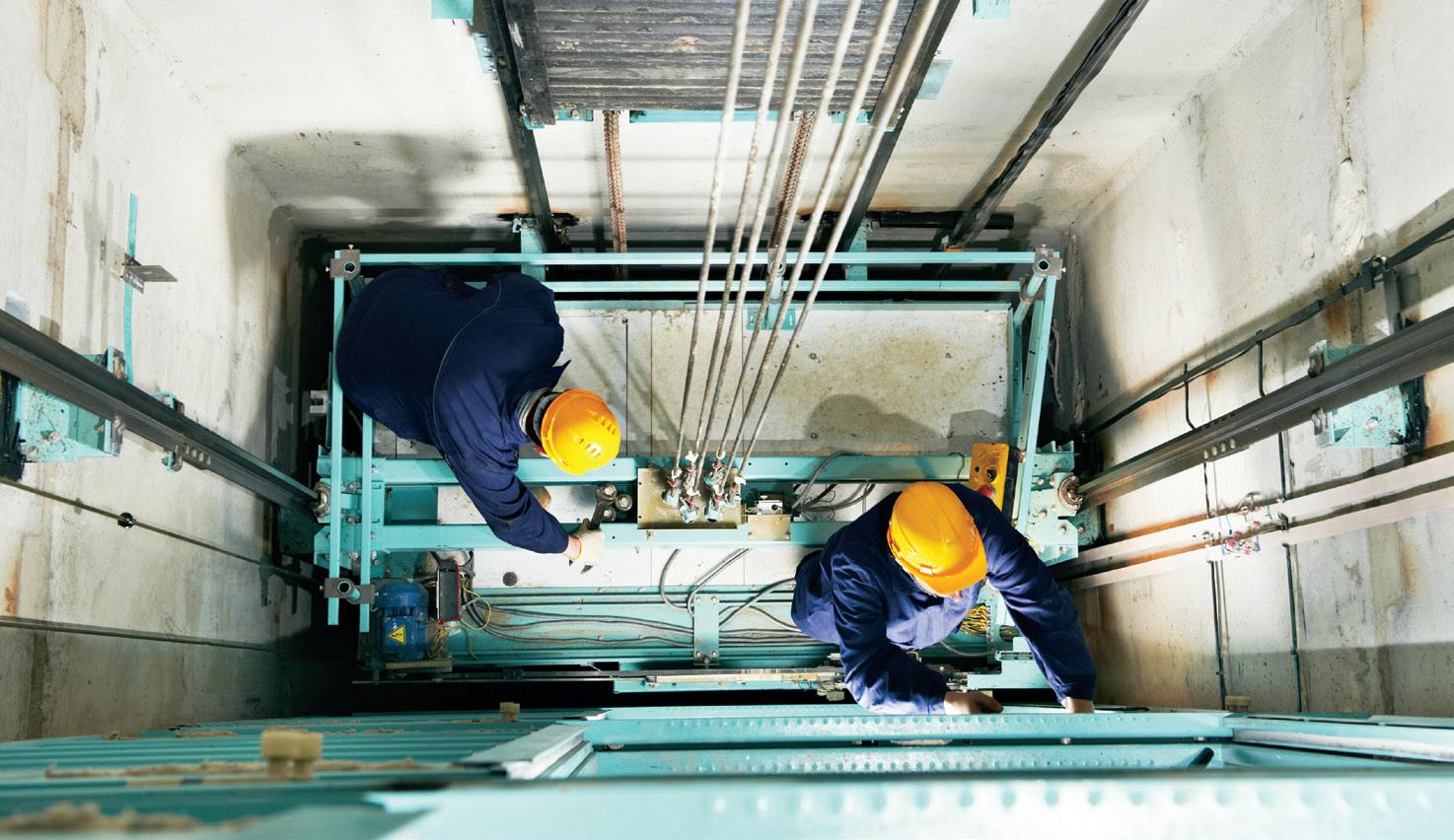
A building’s owners/managers or other ‘responsible person’ must be able to:
Identify evacuation and firefighter li (s)
Know how to carry out and record routine checks
Know how to check secondary power supplies. This may need attendance by an electrical engineer
Know how to activate building fire alarms / BMS system (This may need a fire engineer in attendance)
Carry out routine checks in accordance with BS 9999, Annex I / BS 8899 and FSER 2022
Provide notification of any fault
Provide documented evidence
It also helps sta understand why these checks are being carried out if the ‘responsible person’ can also provide guidance on the theory behind the checks. While these new regulatory requirements do not need a li specialist to carry out the checks it can be di icult, at least at first, for the ‘responsible person’ to know exactly how to discharge their responsibilities as required by the law. In this regard, our team is happy help with specially developed onsite training and advice.
The annual operational inspection check is slightly di erent, in that it is typically carried out by a competent person, or other person with specialist li and fire/evacuation related knowledge. For the annual operation inspection, a ‘competent person’ is required. These inspections involve an annual performance test of various items of fire-fighting plant, including evacuation and fire-fighting li s along with all the necessary documented evidence.
You wouldn’t hire a car without seats.
So why hire workspace without chairs? Or air-conditioning, fire safety equipment, white goods, furniture, WiFi and everything else you need?
Quite simply, when we say we can deliver everything to you, we mean it.
Algeco turnkey solutions deliver all the flexibility, convenience, peace of mind you need. In one package.

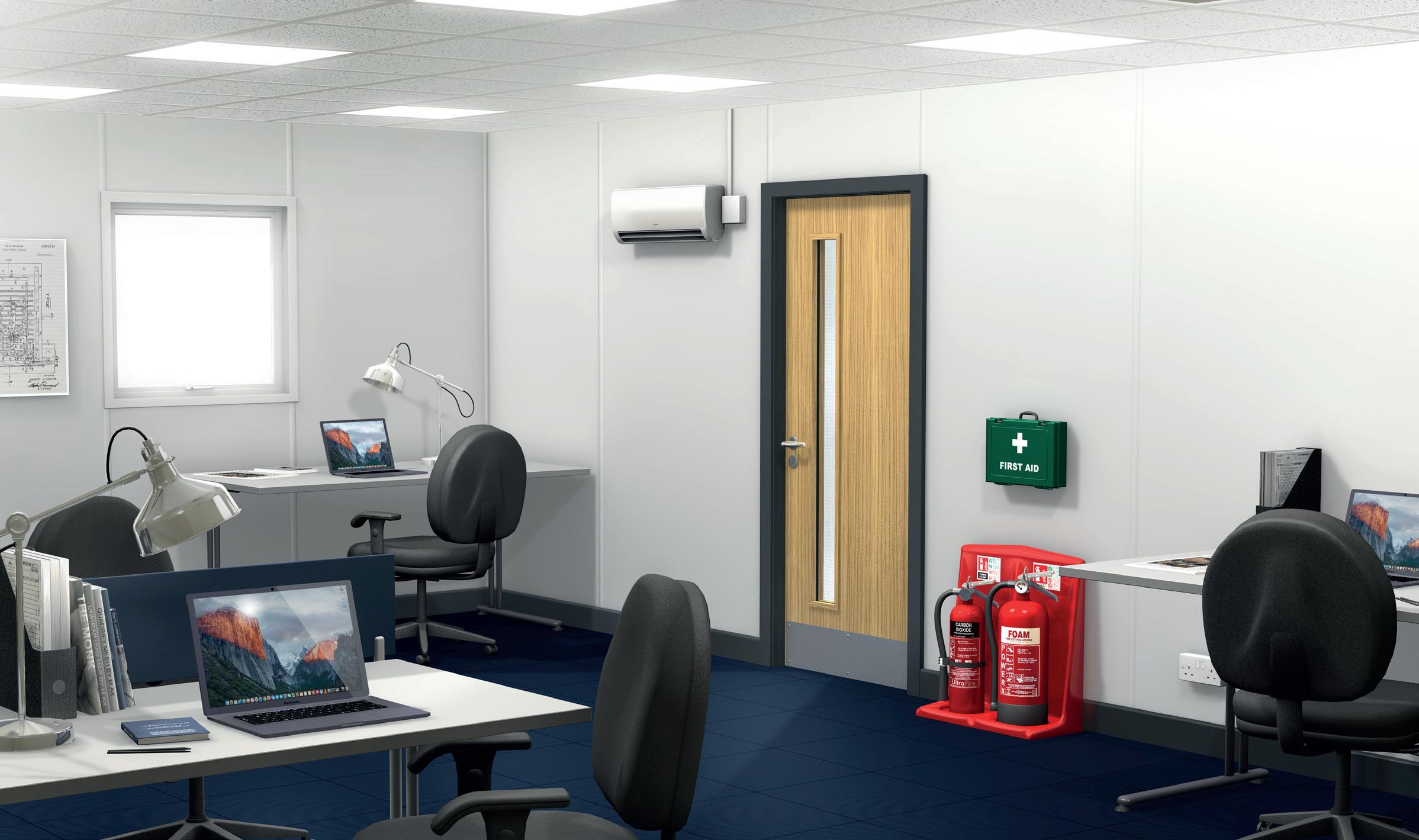
All available immediately with the largest hire fleet in the UK. All supported by ESG policies that reflect your priorities for better sustainability. And all backed by leading Health & Safety standards that mean fewer risks for you.
Why miss out when you can have it all?
Call us now on 0808 108 2222 or visit algeco.co.uk/missing-something
People working within FM have packed schedules every day: ranging from menial tasks, such as answering emails, to larger more complex tasks, like coordinating with vendors and suppliers to maintain security.
For facilities managers, AI can o er a variety of benefits. The use of AI reduces the potential for human error, increases cost savings, and provides invaluable information and data. Most importantly, it saves time on manual repetitive tasks.

For tenants and end users of assets, AI can vastly improve the customer experience. Nothing is worse than needing assistance with a maintenance issue in the middle of the night on a weekend, but with automated web assistant tools, tenants can get answers
Facilities managers are o en tied up in a variety of tasks, and by getting rid of the tedious parts of their job, tenants are given greater attention when they have a
related doomsdays.
These fears miss out on a critical potential of AI: utilising automation to free up our time from repetitive and menial tasks. This is especially true within facilities management.
Chatbots and AI are already being utilised by nearly every industry, individual and organisations to help lower workloads, improve productivity, and save time. AI integration does not mean machines will be taking away jobs; it just means people will have more time to spend on the tasks that really matter. The strategic, value-adding initiatives that cannot be done by a machine.
Managing residential and commercial assets is di icult, from providing suitable customer service to solving seamlessly endless operational issues. This is why the integration of artificial intelligence
The integration of artificial intelligence into facility management ignites the same fears that have been seen across a variety of industries. These worries o en include stress over the prospect of automation replacing jobs, a desire for data security, and general questions about the overall e ectiveness of the tools. A er the impact of automation in fields such as manufacturing, it’s no wonder facilities management professionals are beginning to wonder how AI will a ect their jobs.
However, although it is beneficial to be aware of the potential employment impacts of automation, AI only really stands to make jobs easier. AI’s primary use is in automating repetitive tasks, meaning it will take away the mindnumbing tasks that clog up your
user data. The data points gathered through artificial intelligence are incredibly valuable when used to predict potential issues, track patterns, and provide insights into potential weaknesses in the workflow.
Careful steps are therefore taken to ensure that all parties involved are given data safety. In the case of askporter, all incoming data is anonymised. Doing so does not compromise the value of the data received and ensures that users’ personal information is not jeopardised.
The reality is, the facilities management sector needs better AI integration as a crucial element in both commercial and non-commercial organisations.
It’s quite simple: time. By automating manual facility management tasks, AI integration can free up time to focus on value-adding initiatives, interpersonal engagement, long-term strategy, and new ideas. Many facility managers don’t have the bandwidth to handle day-to-day operations and execute larger strategic initiatives, AI can assist by managing tasks and allowing for increased organisation.
AI will make some tasks obsolete, but most jobs cannot be fully automated, meaning no one has to worry about a robot taking their job. Building managers are busy, and AI integration o ers a lowcost solution to free up their time.
Facilities management only stands to benefit from greater automation, and early integration means exponential returns. AI integration will ultimately lead to increased e iciency without extensive human involvement and related costs.
With the rapid growth of ChatGPT, it’s time to look at how facilities management can benefit from AI integration says Tom Shrive CEO of AskPorter, who explains the benefits artificial intelligence tools could bring to the sector
Ensure the integrity of your fuel tanks and pipework with non-destructive testing (NDT), which helps to protect your business against costly leaks and unplanned downtime.







NDT is an invaluable tool for fuel-reliant businesses. Expert technicians employ a range of techniques to accurately evaluate the health of your fuel tanks and safety-critical infrastructure, spotting issues before leaks can occur.
Crown Oil Environmental’s NDT service is accurate, non-disruptive and completely tailored to your business’ needs. NDT must be carried out every 5 years to meet COMAH requirements and every 10 years under HSE guidelines.



We’re ISO 9001 approved with over 70 years’ experience
All tests are carried out by EEMUA 159 qualified technicians
We can organise testing and issue solutions to suit your busy schedule






We’re fully trained and accredited to work at height and in confined spaces
All results supplied in an easy-to-use and comprehensive report

Scan here to find out more about NDT and the other services available from Crown Oil Environmental









@britishchambers We are committed to helping businesses rise to the climate challenge. Now is the time for your business to develop a clear action plan and help achieve the UK’s ambitious goal of reaching net zero by 2050. Find out more on our Green Innovation Hub http://ow.ly/fNkt50NCoPJ
Chris Kane @ChrisKane55 When it comes to how we use our offices, not only has the game changed but the entire stadium has also. The relationship btw people & place has changed irrevocably. Is this a threat or opportunity for #CRE? as I explore in a new edition of Where is my Office? https://bit.ly/41iK3Zk

Debra Ward linkedin.com/in/debra-wardmba-iwfm-frics-352468a Absolutely thrilled to be selected as one of the Top 50 Workplace Leaders for 2023 among so many talented and inspirational workplace professionals who have encouraged, challenged and supported me along the way.
@BritishCleaning The We Clean, We Care slogan reflects the pride and professionalism that the sector’s highly-trained, skilled personnel have in their crucial, frontline role keeping key workers and the public healthy, safe and well.


Kate Morris-Bates linkedin.com/in/ katemorrisbates Was in Manchester for a meeting today and walked past my old stomping ground 1 Angel Square. Working on this programme remains one of my top 3 professional achievements almost a decade later. We were trailblazers for the hybrid collaborative sustainable workspace. I know the internal use of the building has changed significantly from the original vision but the external and the NOMA public realm is still iconic.
Beth Goodyear https://www.linkedin.com/in/ bethgoodyear/ Here’s my annual reminder to anyone managing a UK building to be aware of the brilliant CIBSE Guide M free 6-page ‘statutory compliance legislation and guidance’ summary. https://lnkd.in/ef3cChnU
BritishSafetyCouncil @BritSafe Created in conjunction with our award-winning sister mental wellbeing charity Mates in Mind, our Wellbeing for Directors course provides an understanding of how to support the health and wellbeing of people in their organisation http://ow.ly/y0f050NHYNr


Successful decarbonisation of the UK’s building stock is central to meeting the nation’s goal to become a net zero carbon emitter by 2050. According to recent estimates by the National Infrastructure Commission, heat for residential, public sector, and commercial buildings is responsible for around 17 per cent of the UK’s carbon emissions – some 90 MtCO2e in 2019.
To meet this challenge, the property decarbonisation journey has to change. Currently we are simply too focused on the hope that technology will come to the rescue; instead success will require a renewed focus on people, organisational culture and a thorough understanding of user need to tackle the problems from bottom up.
The logical place to start when considering this problem must be to focus on large, publicly owned property estates such as those maintained by Amey on behalf of organisations such as the Ministry of Justice and Local Authorities. Large portfolios of property assets present a scale of opportunity needed to really move the dial in terms of carbon cutting outcomes.
We are certainly not short of technical solutions. Photo-voltaics, heat pumps, heat exchangers, hydrogen boilers all have the potential to accelerate the nation’s energy transition away from fossil fuels and towards zero carbon alternatives. Meanwhile modern building management systems have the capability to e ortlessly manage and maintain buildings with the minimum fuss, cost and carbon.
But one size does not fit every building or every occupier. True decarbonisation of public property estates therefore requires a change in operational model, not just on technology investment. It has to be managed through the whole lens of asset capability – and that starts with the people.
The questions to ask are more likely to be around do we really understand our buildings, how they are designed to work and how do people actually use them? Or whether we really understand the cost benefit relationships between the complex and radical process of say changing or abandoning a fuel compared to simply investing in insulation?
Innovation will of course be important. And clearly new standards and advice notes such as the recently updated PAS 2080 for managing carbon in building and infrastructure are a vital part of the puzzle. In many ways standards such as this hold the key to guiding built environment professionals towards a better understanding of how infrastructure of the future can be designed, built and operated more carbon e iciently.
The best, lowest carbon solution is to understand the estate and make bespoke solutions depending on the structure and usage. Why, for example, in the rush to design and install PVs on the roof as part of the retrofit for an old o ice building. Did we not first ask why the heating was still being le on at 4am in the morning? Or why the lights were all still on long a er everyone had le for home? We need to ask the simple human questions and look at the problem through the eyes of the building user. Decarbonising property estates in the future will require such thinking beyond the buildings to consider how occupiers will use them and what they will need to make that building work for them. The switch from petrol and diesel cars to EVs, for example, will require not only investment in technology for on-site charging to meet this need, but also a change in operating model for those estates to ensure that both the user and power demands on the charging systems are managed.
Buildings so o en look great but are hard for people to live in. And as our lives change, we need to give people in the buildings the local responsibility to ensure their buildings fit their lives. We need a people first approach to building management, giving control to those who can actually make a di erence.
In short, the decarbonisation of our public property estates has to be people centric. While investment in new technology and innovation will be crucial to accelerating our move towards a net zero carbon world, success will be down to the people using our buildings. That means ensuring that those people - and the businesses they drive - are properly informed, empowered and invested in the solutions that we need to embrace change.
LUQEL a mains-fed water dispenser with leading reverse osmosis filtration and hygiene. Dispensing 30 sommelier designed water tastes across a range of temperatures from 4 – 95o C. Comes with dispense payment options, volume tracking and remote diagnostics.




Removes micro-impurities such as bacteria, heavy-metals, and nano-plastics. Removes the need to buy mineral water and transport it around the world. Removes the storage, chilling, merchandising, and recycling of packaging within a business.
Help remove packaging waste from our planet.
luqel-water.com




sales.uk@luqel-water.com


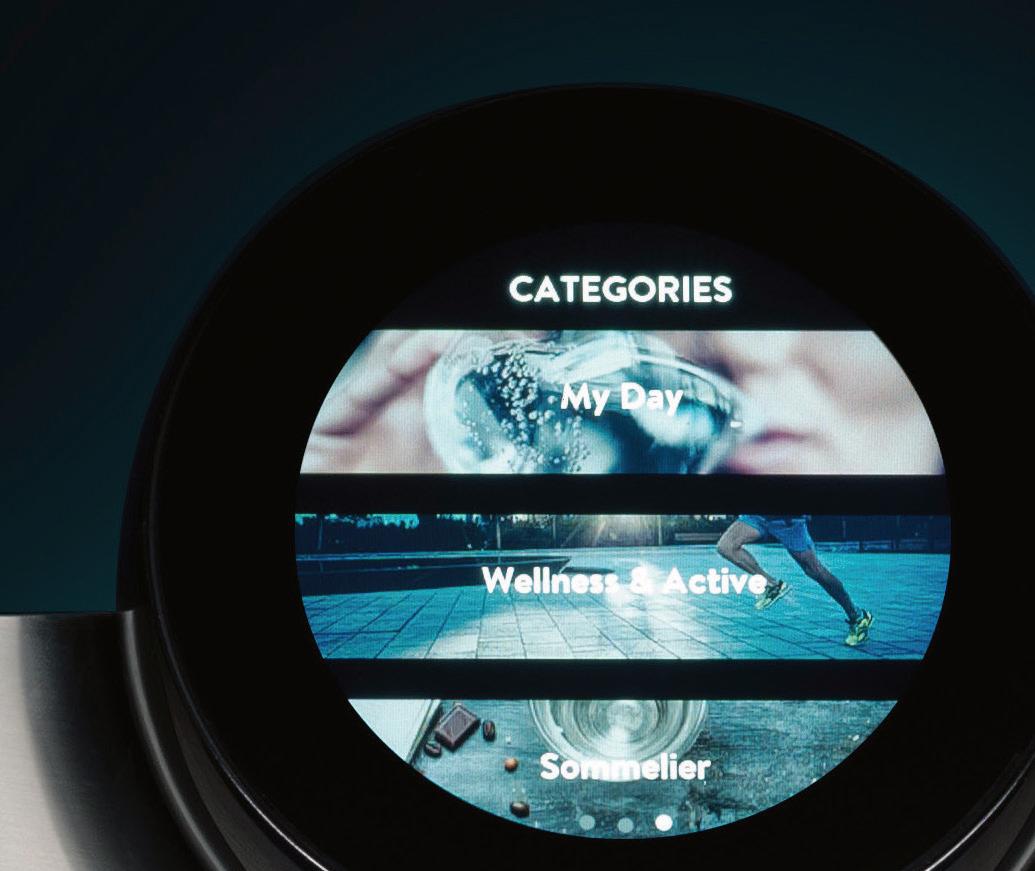
See you at






















It’s been well documented that a whole life asset management approach to a building’s maintenance and management can build value, reduce liabilities, and reduce costs. What initiatives and innovations can the built environment take to support a more strategic approach to asset management and promote a whole-life cost approach to property strategies and investment decisions?
can transform the future of a building and maximise the return on investment; leave it too late and both risks and costs begin to multiply.
There are several initiatives that we have been using to promote a more strategic approach to asset management and support our customers on their net zero journeys. This process has involved helping customers develop an asset management programme from the ground up and advancing planning for building decarbonisation.
The first step in this process is to gain access to data. While it may not seem innovative initially, having the


 COATH,
COATH,














 BAILEY
BAILEY
A whole-life approach to asset management has many welldocumented benefits, yet implementing this approach requires a shi in thinking towards a data-centred future.
Asset management has traditionally been di icult to contextualise within the built environment. However, when utilised e ectively, it can provide the foundation for a building's life and guide critical activities, including maintenance, asset replacement, and refurbishment.
ability to collect, store and maintain a rich asset data set is a challenge that we’ve seen with many of our customers, especially for those that do not have a comprehensive BIM model to draw on. Once collected, asset data forms the foundation of the asset management programme and can be used to positively influence maintenance programmes, plan future capex spend and identify assets for decarbonisation.
The next step is to exploit data to your advantage. Traditionally, building data can be quite siloed, making it di icult to analyse and form a quantitative picture of a building’s condition, operational costs, and performance. However, our approach is making it easier than ever before to layer various data sources and inform actionable insight. Where asset registers and lifecycle reports were once isolated data sets, we can now layer on top increasing levels of detail regarding asset performance, operational e ectiveness and maintenance costs, to build a deeper and more rich view of immediate priorities.
Asset management has traditionally been di cult to contextualise within the built environment. However, when utilised e ectively, it can provide the foundation for a building's life and guide critical activities, including maintenance, asset replacement, and refurbishment.”
Recently asset management has found greater influence as organisations accelerate their journey towards achieving net zero targets. Here, a whole-life approach has never been more important. Calculating how and when to decarbonise buildings is a critical investment decision and having indepth knowledge of your assets is vital to do this e ectively, allowing you to understand when to retrofit or which part of your estate to prioritise. Making the right decisions at the right time
 Chris Coath
Chris Coath
and maintenance costs, to build a deeper and more rich view of facts
By utilising these innovative approaches to data, companies can develop a net zero business case for their building, backed up with the numerical facts to justify their proposed investment. Adopting this whole-life approach to asset management is therefore a vital step towards achieving net zero targets, with companies that prioritise this approach placing themselves firmly at the forefront of the decarbonisation transition.
–
In FMJ's regular monthly column, our team of FM experts answer your questions about the world of facilities management











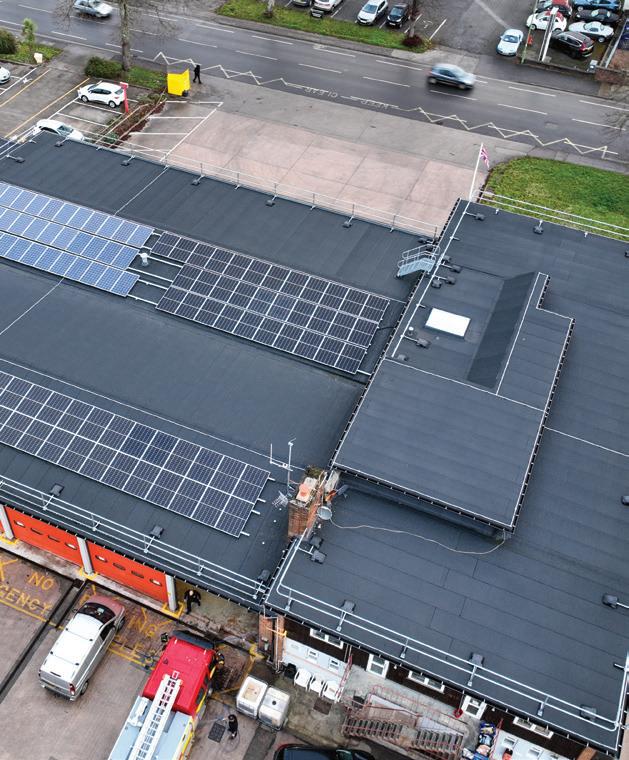








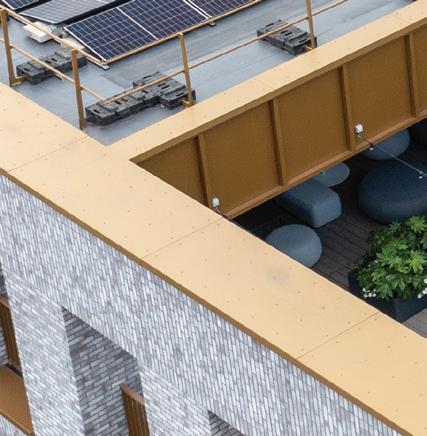







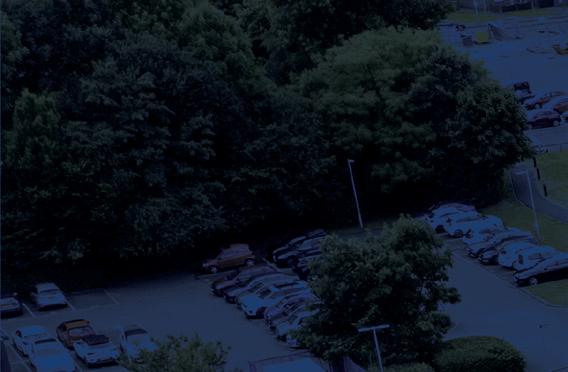

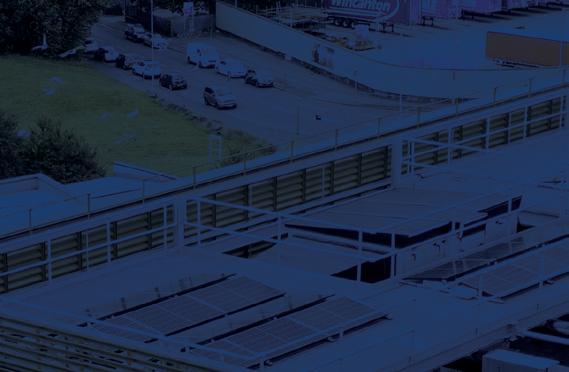






 KARL CUNDILL, JOINT MANAGING DIRECTOR AT LITMUSFM
KARL CUNDILL, JOINT MANAGING DIRECTOR AT LITMUSFM
Setting a whole-estate strategy around asset management is the key approach that all organisations should be taking in order to protect their investment and budget-plan e ectively for the next 5-10 years.
This has come more to the fore since the pandemic, with so many changes to how facilities are now being used. Whether it’s an o ice facility where sta are working in a hybrid approach, a university where students are learning through a mix of face-to-face and virtual learning, or catering outlets within a building that have embraced the use of click and collect services; the list goes on.
This should be viewed as an opportunity. An opportunity for organisations to review and take stock of their facilities portfolio (something which may well have needed to be done long before the pandemic), to realign and create a new estates strategy that will work now and into the future.
The strategy should cover the entire estate and detail planned acquisitions, change of use of buildings, and any mothballing of facilities or planned disposals.
The next step is to understand the assets across the facilities and to implement a long term, whole-life approach to managing them, which will enable budgets to be controlled far more e ectively. For example, instead of investing in the upgrading of facilities and then later down the line selling assets that are no longer used, this could be done the other way around and any capital from assets sold could go towards upgrading the remaining portfolio. Getting to grips with assets, capital allowance and the lifecycle of upgrading and renewing will essentially mean clients reduce the need to invest ‘new’ budgetary allocations into facilities and rather recycle new from old.
Once the estates strategy is in place, it’s essential that a planned preventative maintenance (PPM) programme, which ensures all of your assets are properly maintained over their lifetime, is in place. A PPM covers assets such as heating ventilation and air conditioning assets, electrical systems and fire safety and security systems. It will record what equipment and assets are installed, the manufacturers details and serial numbers, any service details and provide an indication on the asset’s residual life.
A Forward Maintenance Register (FMR) can then be created. This will capture the remaining service life of each asset or piece of equipment and when maintenance work will be needed, thereby allowing budgetary planning.
The FMR would normally span five years and detail the maintenance and capital expenditure required over this period, or it could be developed further into a full lifecycle programme to cover a 10, 15, 20-year period.


It’s been well documented that a whole-life asset management approach to a building’s maintenance and management can drive long term value, reducing operational liabilities and costs. But as more and more occupiers move towards flex space, the onus shi s onto the operator community to incorporate long term operational e iciency and e ectiveness into their o erings.
These trends are significant not just for the here and now but have implications for the whole asset life cycle. The increasing adoption of flex presents several important challenges and considerations for both operators and their occupiers.
The first of these comes during the initial fit-out stage. Because companies are, in our experience, increasingly signing up to shorter and shorter leases, it’s important that landlords and operators consider how these solutions might prove sustainable during the whole-life cycle of the asset.
This involves incorporating design solutions that can accommodate alternative approaches to configuration and operation as well as materials that can be reused or recycled to reduce waste. The adoption of circular economy principles here is key.
Once fitted out, operators are responsible for the full cost of operating the space. Occupiers pay a single monthly fee which covers all operational expenses including maintenance, servicing, utilities and any other day-to-day consumables. The burden is therefore on the operators to provide a carefully curated experience that exceeds occupier expectations to maintain high occupancy levels whilst at the same time keeping a robust focus on operational costs. This tension should drive the holistic approach required to ensure facilities are energy e icient, easily maintainable, safe and sustainable over the longterm life of the asset.
Although in this environment there is still scope for ine iciency on the occupier side, flex space is inherently more sustainable than the traditional o ice. As organisations adapt working patterns and space needs by leveraging flexible space over time, they are typically able to reduce their total space usage, and therefore lower their net emissions and overall consumption patterns.
Larger organisations who retain core long-term hub space while adopting flex as variable capacity or satellite o ices will need to consider the level of infrastructure investments that are appropriate for both. For example, the location of high-cost facilities like sta canteens, gyms, specialist labs
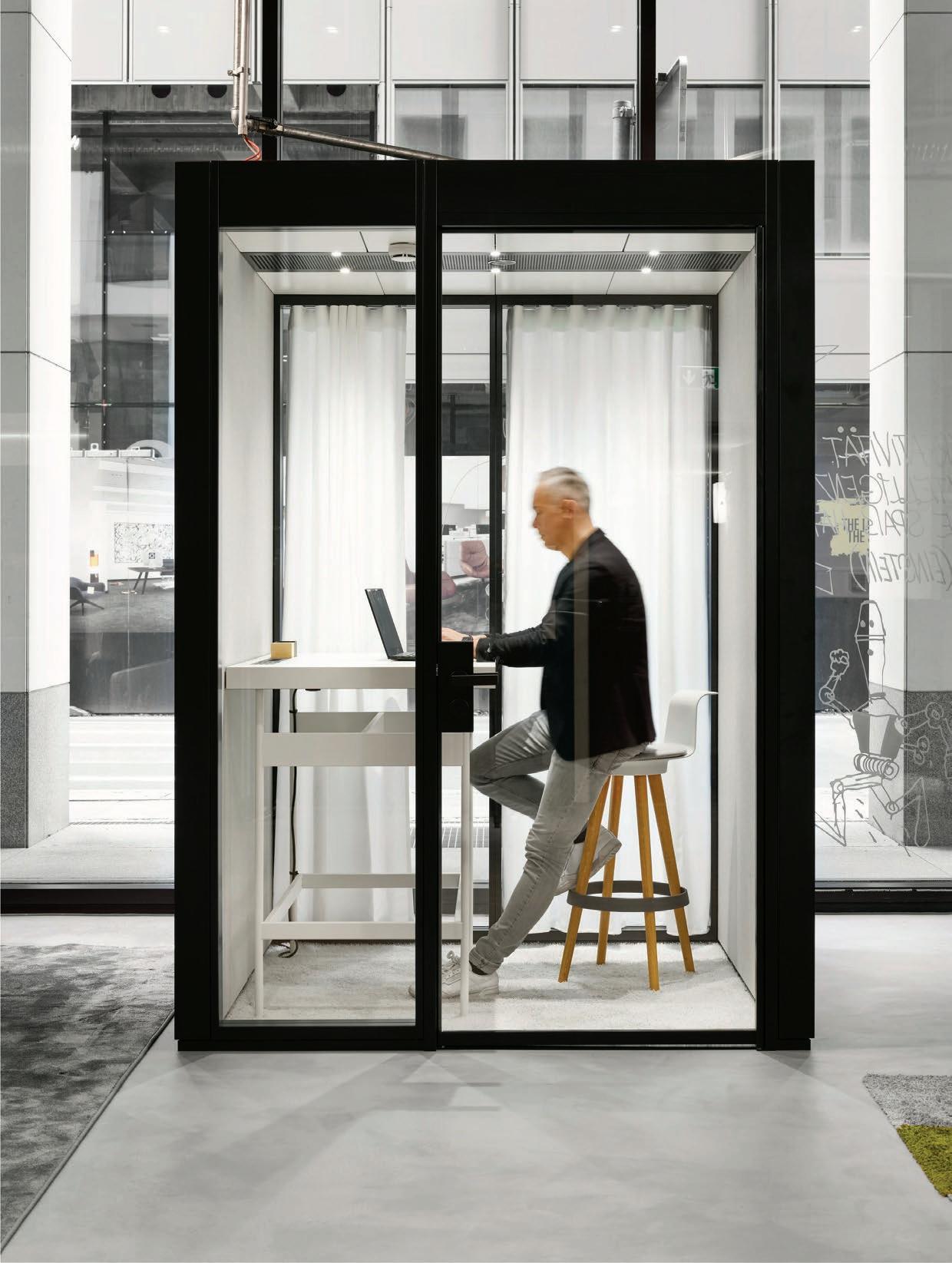

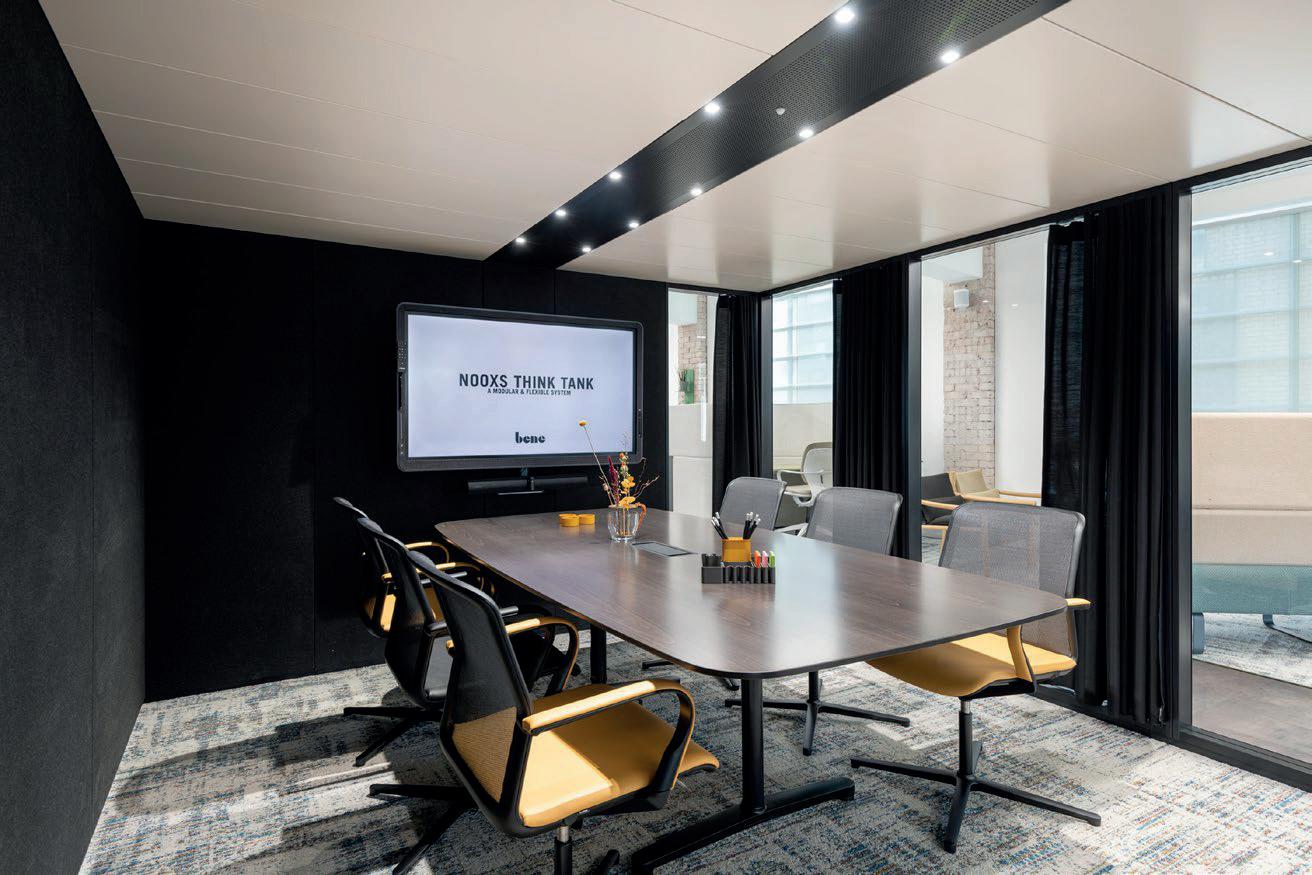

or client entertainment facilities will be better suited to long-term hubs.
To ensure ongoing adoption of this model, it’s important that operators keep innovating to respond to a rapidly changing marketplace, curating their o erings accordingly. Typically location, price and terms are key criteria that drive selection, but also important are the look and feel, the extent of on site and nearby services and the focus of curated experience. The ability for assets to respond and adapt to changes in these criteria is essential in ensuring an e icient whole-life approach for the asset.
Finally, with 80 per cent of landlords predicting adoption of greater lease flexibility and agility over the next five years, according to recent joint research by The Instant Group and the Urban Land Institute, it is becoming essential that landlords and their asset managers continually reassess their investment decisions. Particularly, whether the assets they are bringing to market will adapt or facilitate flex leasing strategies and enable flex operators to adopt a whole-life cost approach to the operation and delivery of their services. This becomes even more important as the landlord community put skin in the game by partnering with flex operators to bring their own white label or branded flex solutions to market.
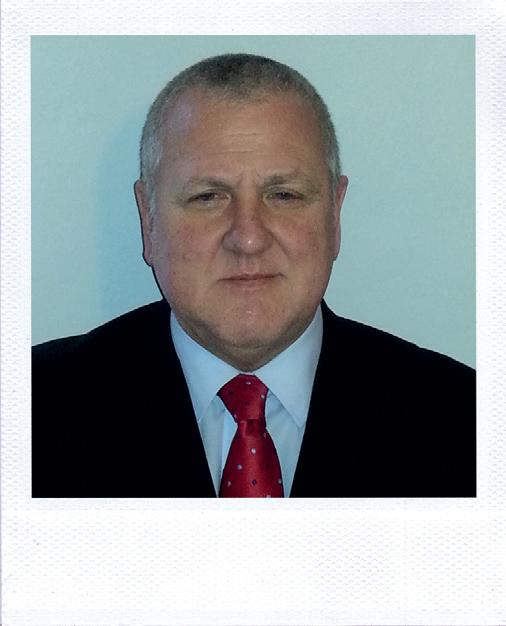


Facilities management is having to adjust to an increasingly competitive and changing environment. Rising cost pressures, acute labour shortages and the transformation of workplace environments as employees pivot to remote working and organisations opt for smaller, cheaper out-of-city premises, mean cleaning service operations need to ensure e iciencies centred on expenditure, delivery and resourcing are always optimised.
Facilities management is not immune to the broad impact of the cost pressures all businesses are currently experiencing. Companies are mindful of the need to focus on value for money in all areas. As a result, facility or cleaning managers need to elevate best practice and look for e iciency improvements. Such pressures place even greater importance on informed decision-making.
One way to ensure necessary cleaning services and strong outcomes are underpinned is to address the strategy behind equipment investment and utilisation and how to use it to generate tangible worth.
The term ‘sweating assets’ is a familiar refrain for many organisations which may not have the financial headroom to invest in new capital expenditure. To o set cost pressures and maintain service standards, the ability to
make machines run as long and as e iciently as possible can be both a strategic and practical answer for success in today’s competitive landscape.
Organisations looking to optimise their cleaning operations, but mindful of the cost and labour issues they face, should examine access to incremental e iciency gains across their cleaning responsibilities, including how they maintain or replace current machines investment.
Ensuring that cleaning machines are fully functional for optimum time periods can go a long way to driving productivity levels and utilising workforce availability. This is particularly important for in-house teams where enhanced cleaning time performance can lead to the freeing up of resources that can deal with other important tasks, in addition to the cleaning regimes.
But if machinery is forced out of action, having a strategic backup plan can help mitigate the impact of downtime and ensure that sta can be e ectively deployed at all times. In such instances, it is imperative that the machine is repaired without undue delay and, where necessary, replacement assets are adeptly employed.
To assist in building better resilience, the smart strategic answer is to partner with a manufacturer and establish a guaranteed service agreement; one that covers an organisation’s entire cleaning machine fleet through a single source contract, and which o ers certainty, expertise, and value over the long term.
Such contracts promise the practical benefits of asset replacement without delay and create peace of mind thanks to regular maintenance oversight that drastically improves equipment performance and diminishes instances of unwanted and costly asset downtime.
More than ever, facility managers and contract cleaning companies are seeking ways to work smarter to derive the best value from the equipment and resources they rely upon. Flexible service agreements open a pathway to consistently maintained cleaning assets that work for longer, as well as better control of costs and higher levels of machine availability to underscore sta productivity. Together, they can make a real di erence to market competitiveness and future commercial success.
Do you have a question that you’d like answered by the FMJ Career Clinic?
Email: sara.bean@kpmmedia.co.uk


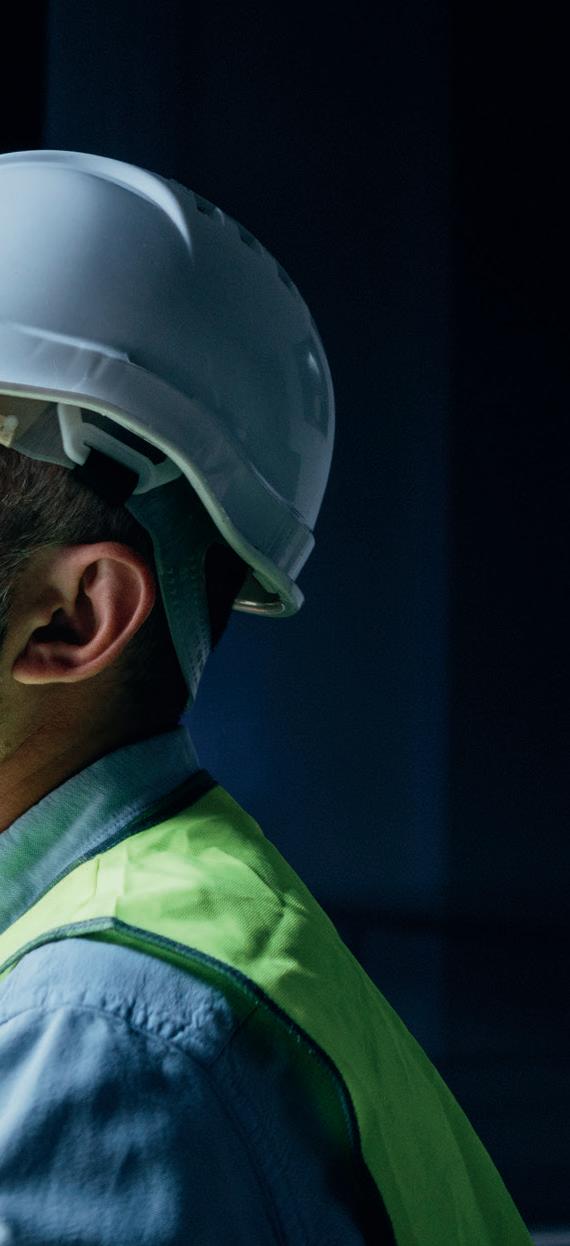





The year on everyone’s mind is 2030 and there is arguably nowhere that this is more keenly felt than in the real estate sector. Not only is it the year set by many corporates for their near-term net zero targets, it also requires significant cuts – up to 50 per cent in some cases(i)- to the energy consumed across their assets. Contributing to 39 per cent of global emissions(ii), the built environment sector needs to play a central part in tackling climate change.
However, transforming businesses towards a more sustainable model takes time. No good transformation happens overnight because it requires changing the hearts and minds of various people within an organisation. The commercial real estate sector already grapples with innovating in a timely manner, and net zero presents a


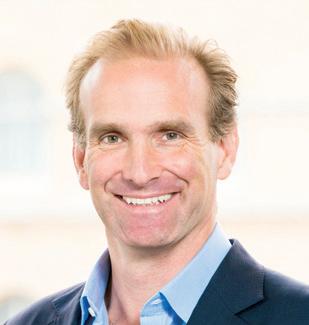
fundamentally new challenge in terms of the scale and pace of action required.
The recent IPCC report warns that at current implied emissions, it is likely that by 2030 warming will exceed 1.5C and it will be harder to limit warming below 2C (iii), making it even more important to front load action now – especially for the real estate sector. Worryingly, the Alliance for Buildings and Construction (GlobalABC) also reported that the gap between carbon performance in buildings and the 2050 decarbonisation pathway is actually widening(iv )
The climate crisis and ESG are starting to top the agendas of many businesses, driving the adoption of sustainability credentials by new real estate developments and becoming a deciding factor for tenants in the choice of new premises. This is further influenced





by an increasingly enlightened and active workforce who require their employers to be more sustainable and make a positive contribution to society. For example looking at the Social aspect of ESG, greener spaces have been shown to increase productivity and reduce medical costs(v) through improving air quality, enhancing natural light and introducing greenery. The justification for driving sustainability in commercial buildings, therefore, goes beyond moral responsibility and more towards preserving and creating business value.
While needed, focusing attention solely on the handful of new net zero buildings being developed distracts from the larger problem at hand: the majority of emissions are leaking from a large stock of existing, ine icient buildings. Given that we have a collective responsibility to meet net zero targets, what should owners, property
With the majority of emissions coming from existing, ine cient buildings, the built environment needs a change in behaviours to help meet net zero targets, says Mark Bruno, a Partner with Ampers and
managers, FM teams and tenants be considering to help drive this at a building level?
The solution begins with behaviour change achieved through various strategies, the first being clearly demonstrating the power of collective action. If everyone was to change their wasteful and ine icient habits to more sustainable ones, the collective impact of these changes, even if seemingly small on an individual or building basis, will amount to a huge impact. An initiative called the CUBE Competition launched in France six years ago together with leading real estate actors, property managers and technical supporters, leverages gamification to rally thousands of building users across France to reduce energy wastage in commercial buildings. Through behaviour change and minor technical reprogramming, the participants have collectively managed to make significant savings, reducing their energy use by up to 55 per cent in a single year.
Given that, on average, commercial buildings waste 30 per cent of their energy this not only equates to unnecessary carbon emissions but also represents a significant cost at the same time.
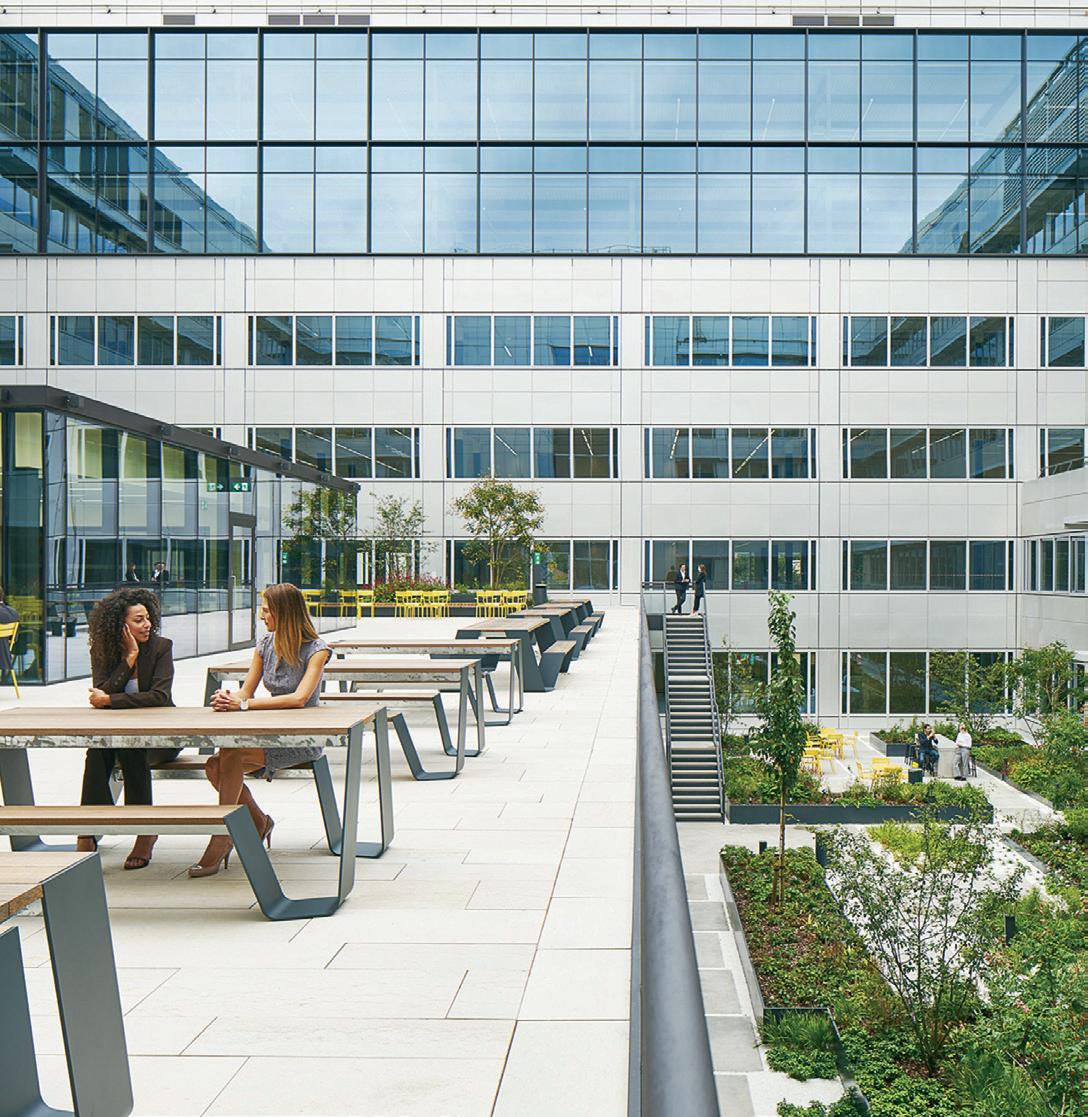
To put a positive spin on this, it also shows just how much low-hanging fruit is available to be grabbed today with the potential to make significant savings.
The second strategy for encouraging behaviour change is making the change initiative fun and engaging, to entice people to take that first intimidating step and to keep the momentum going. In 2021 o the back of COVID, UK real estate businesses were ready to try new tactics to engage their occupiers and turn energy e iciency on its head – from being a very technical, daunting topic to something every person in the building can get involved in. As a result, CUBE was brought to the UK as an impact initiative of Ampersand Partners. Early adopters included industry leaders such as Landsec, The Howard de Walden Estate and Stanhope to see how this tried and tested formula could work for a UK audience.
CUBE participants started their journey by working collaboratively with their tenants through the creation of Green Teams. These teams typically comprise property, facility and energy managers and various occupiers to brainstorm collectively on how they can start taking action in their building. They explore together what has been tried in the building already, what challenges have been faced, and new ways to rally the wider set of building occupiers towards a clear energy-saving goal. It empowers occupiers to have a sense of agency in their workplace by giving them a chance to voice their struggles and ideas regarding energy e iciency while elevating the role of the FM as a visible changemaker
in the o ice.
The most common actions taken during the year of the competition break down primarily into engagement actions and technical adjustments. Eco-nudge posters in key areas start to encourage and prime tenants towards energysaving. ‘Last-to-leave’ stickers posted near the door for example help to remind occupiers to turn o lights and other so-called vampire appliances, which drain power when le on standby every single night. The key is to ensure that any engagement material, whether it’s physical posters or building-app posts, communicates very clear and easy actions as well as translating potential energy savings into things that are meaningful to an individual.
For instance, the energy slashed by the CUBE competition so far is enough to power London’s underground and overground rail networks for over six days! The posters are also key for starting conversations and building interest in getting involved in activities planned by the Green team.
One of the most impactful activities launched by some of the largest buildings in the competition has been whole building switch-o campaigns. Without the competition, rallying occupiers and managers to a common cause typically would have required significant engagement and legal support to allow
tenants to alter lighting and heating schedules on their floors. By working collectively, towards a common positive goal, they have managed to switch o lights in the evenings and boilers during the summer, with some noteworthy London skyscrapers seeing savings of up to 5 per cent in a single month.
Over the first year of the competition, CUBE has witnessed an exciting new relationship between landlords and occupiers, a positive one where they work together, united by a common goal that benefits everyone. We have seen landlords support tenants with deep-dive energy audits on tenanted spaces to identify quick wins in terms of energy and financial savings.
A great example is Landsec, working with Experian. The latter is one of several tenants based in 80-100 Victoria Street and, working in partnership on an energy deep dive, they saved 185MWh of energy –that’s equivalent to £27,000. Landsec also played
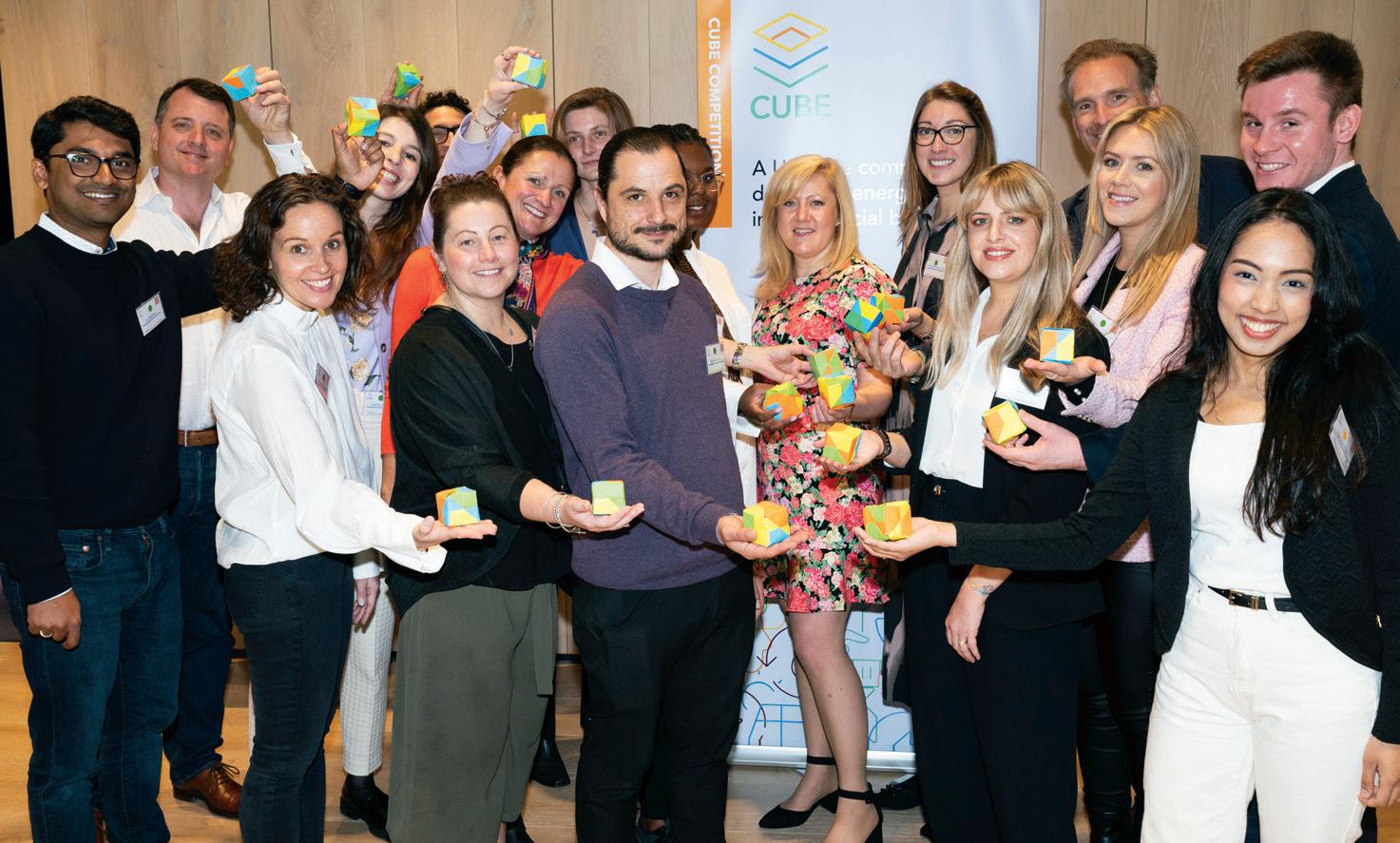
One of the most impactful activities launched by some of the largest buildings in the competition has been whole building switch-o campaigns. Without the competition, rallying occupiers and managers to a common cause typically would have required significant engagement and legal support to allow tenants to alter lighting and heating schedules on their floors.”
its part, making chiller enhancements and BMS optimisations with AI learning to help the whole building become more e icient. Everyone benefits from interventions like these so the relationship dynamic shi s firmly from landlord as source of conflict to landlord as partner, which makes even more positive change possible.
The 30 participant buildings have achieved significant savings in the first 10 months of the competition, collectively saving a whopping 31GWh of energy, equivalent to almost £8 million in financial savings and 6 million kg CO2e. This is enough to power over 6,000 typical UK homes for a year – remember the importance of making achievements relatable!
The unique aspect of the competition is that the CUBE community has several opportunities to celebrate these savings as well as learn how to save even more through quarterly meetings. Having a dedicated space for landlords, building managers and occupiers to talk about similar challenges and being able to learn practical tips from each other has provided the drive to take
on major issues like climate change. Even if you’re not part of CUBE, as facilities or sustainability managers, reach out to your landlords or building management company and start a dialogue. There’s more appetite for collaboration and change than you might think – we’ve seen it first-hand.

When it comes to such significant challenges as climate change and energy e iciency, it is not unusual to feel a level of inadequacy when viewing the limits of one’s own actions. However, knowing that there is a group of people, better yet a community, you are part of and with whom you can interact, helps provide reassurance and a reminder of the meaningful impact of collective action.
Together everyone achieves more!
Our actions do not even need to be major, expensive changes. Starting small is better than not doing anything at all. A er all, small actions will add up to big impacts, especially if there is a community behind you as well.
The 30 participant buildings have achieved significant savings in the first 10 months of the competition, collectively saving a whopping 31GWh of energy, equivalent to almost £8 million in financial savings and 6 million kg CO2e. This is enough to power over 6,000 typical UK homes for a year”
The major savings seen in the CUBE competition were achieved through actions that require little to no investments and minor changes. We need to avoid paralysis from the scale of the challenge ahead and commit to working together to take the first step. And what better way than to do this in a fun and engaging manner like the CUBE Competition?
(i) https://bit.ly/3V5fap0
(ii) https://bit.ly/41RlUbZ
(iii) https://bit.ly/3N94SlQ
(iv) https://bit.ly/41UZF5g
(v) https://bit.ly/40zENz6
www.cubecompetition.co.uk
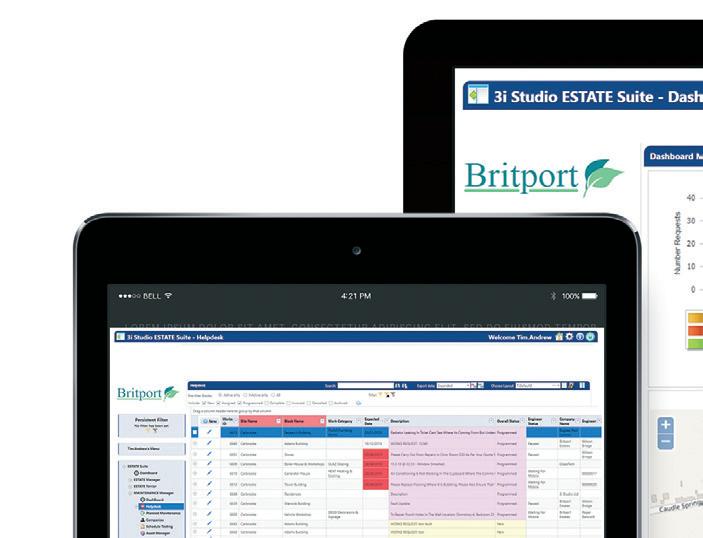
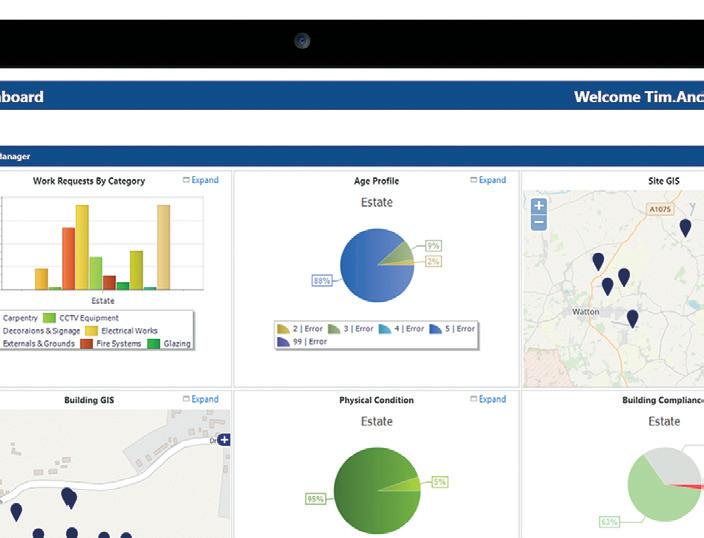


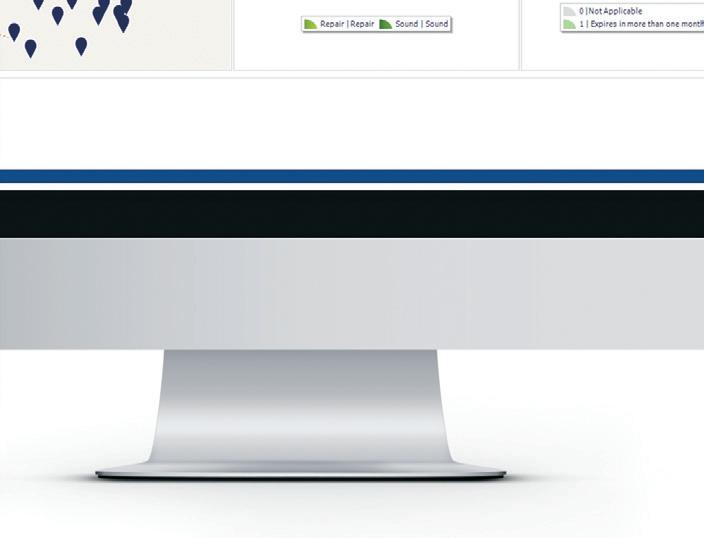

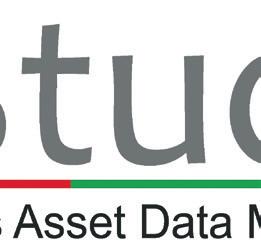

Thedemand for auditing and ESG (Environmental stewardship, Social responsibility and corporate Governance) reporting is increasing all the time, with the result that facilities managers are demanding more answers and more evidence about how we handle their waste.
We’re constantly asked what happens to the waste we collect. If we tell our customers they are now zero waste to landfill, they want to see our Energy from Waste facilities first-hand. If we want them to segregate their waste, they want to know why, where it goes and what the benefits are. If we tell them we have a certified CarbonNeutral® fleet of waste collection vehicles, they want to see it for themselves.

I think this is real progress. We have seen a huge rise in the number of customers requesting tours of our facilities and we welcome the opportunity to show them first-hand how we treat waste because in turn, it empowers them to champion the correct processes within their workplace.
If people say that old common phrase ‘but it all goes to landfill’ they can say ‘no, it doesn’t, I’ve been there and I’ve seen how it is managed’.
When a customer is audited (for instance by their building management company), and the FM is asked for statistics on waste collections, the FM will be safe in the knowledge that we can supply all the necessary documentation.

For the survey, when FMs were asked about the priorities they consider when making a decision about who manages their waste; they named transparency and a provider’s commitment to environmental issues as the most important.
This is why it’s important to accurately weigh all waste collected, whether that’s wheeled bins or rolono (roll on roll o ) collections, so waste reports are completely transparent. It’s also important to put a real emphasis on flexibility, so if there are seasonal events such as term times, holidays or special promotions etc., then we can scale collections up or down as required.
We can also demonstrate our own commitment to environmental issues as we’ve been measuring our own company-wide carbon footprint since 2000, reducing carbon emissions over that period by an impressive 79.74 per cent despite growing our
The 2023 survey* by FMJ in partnership with Grundon Waste Management reveals transparency and commitment to environmental issues are among the top requirements looked for in a waste management provider. Grundon’s Jack Yarrow says honesty is the best policy
business.
For FMs, other considerations raised in the survey included quality and service guarantees, the provider’s knowledge of waste legislation and compliance regulations, as well as the ability to receive waste statistics and analysis. This all makes perfect sense, and reflects all the questions we are asked and the requests we receive for tours.
Previously, cost of collection and disposal has always made the top five, but I think now FMs are recognising that while any waste supplier needs to be mindful of budgets, it is the added value in terms of honesty and sustainability commitment which are most valued.
It’s a pattern that continues to repeat. This time, nearly 52 per cent of FMs said they believe a good waste management service will deliver improved environmental credentials the highest percentage since pre-COVID times – and this fits with the increase in reporting.

Is there an expectation within your organisation that a good waste management service:
The topic of rebates on segregated materials o en comes up. The percentage of FMs questioned this time who said they believed a good waste management service could earn them rebates on reprocessing and recycling has actually fallen over the last three years.
Successfully achieving rebates will always be subject to having enough bulked up volume to make the waste a worthwhile commodity.
If you are a large shopping centre and have the space to install a compactor, room to store baled cardboard or polythene or coathangers, and the manpower to manage the process, then yes, we can most likely promise you a rebate if the volumes are high enough. However, we recognise that a small restaurant or shop in London, or an o ice block with just a small basement and four bins, is unlikely to have either the volume or the space to store separated waste and it will be best taken away in the existing bins, while of course, maximising recycling opportunities.
This is all part of education and managing expectations. No surprise then that for the sixth year in a row, employee education and engagement programmes have been listed as number one in terms of helping FMs to promote waste management in their organisation.
Over the last three years, the percentage has crept up from just under 28 per cent to nearly 39 per cent; while 15 per cent of respondents want evidence that improved segregation and recycling
can save them money; and 13 per cent say they want greater understanding of the di erent types of waste and how to segregate them.
The issue of segregation is critical. Sometimes FMs will ask us why their recycling stats aren’t higher and quite o en the answer is that only 50 per cent of the waste disposed of in recycling bins was actually suitable for recycling.
We call it ‘wish-cycling’, when someone looks at an item such as a black polystyrene tray and just thinks ‘it must be recyclable’ and they put it in the mixed recycling. It isn’t and it won’t be, so it must go in general waste.
We appreciate it can be confusing, not least because many products on the market claim to be recyclable, or compostable, or biodegradeable, but the reality is they aren’t. Or they require such specialist recycling facilities that they cannot be treated at a traditional Materials Recovery Facility (MRF).
Equally, sometimes we see perfectly good recyclable materials disposed of in general waste – for example, cardboard or plastics –missing an opportunity to increase recycling.
Whenever we work with customers we supply clearly-marked bins, with plenty of signage (available in di erent languages if required) to make it as clear and simple as possible. And if there are still questions, then just ask.
In terms of increased employee education, for many years now, we have worked with customers to undertake waste awareness days, provided tips and advice, helped support Green Teams and Waste Champions, put customers forward for sustainability awards and generally done as much as we can to spread the word about the importance of recycling.
We continue to do all of those things but we also recognise that having one event on one day can’t possibly catch all employees. That’s why we’re working with environmental behaviour change
specialists Greenredeem to o er customers a new app – Greenrspace – an online employee engagement platform designed to motivate employees towards taking positive action to reduce waste, save energy and reduce water consumption.
Of the multiple environmental and sustainability responsibilities facilities professionals are responsible for, which do you think are the most important?
Given that nearly 32 per cent of FMs said this year – and for the sixth year in a row – that inability to engage sta with the need to recycle is one of their biggest barriers, we say come on board with the app and see how it can support what you are doing.
Overall, I was also pleased to see that half of all FMs still see improving the management of waste and recycling as an opportunity.
Interestingly, those who have a waste management strategy with clear targets has dropped from 59 per cent in 2021 to 42 per cent in 2023; while just over a third have a waste management strategy but no clear targets.
Do you have a waste management strategy with clear targets?
Yes, we do have a waste management strategy with clear targets
we do have a waste management strategy, but we haven’t established clear targets
Those two last points are really important too, because this year’s survey shows that over 46 per cent of FMs said energy consumption and achieving net zero emissions were their priority, followed by waste management and recycling.
Greenrspace encourages employees to help their employer get closer to environmental targets – for example, by increasing recycling and turning o unwanted lights – and in return, those individuals receive rewards, such as vouchers, monthly prize draws or they can donate them to a chosen charity.
The app, which can be tailored to specific businesses or sectors, includes an interactive content calendar, with smart goals set to reduce business consumption and changes measured and mapped against real costs, allowing savings to be monitored and tracked.
We see this, alongside the other activities we o er, as a good blend of traditional education and a 21st Century approach, allowing employees to have all the information at their fingertips when they need it – and be rewarded for making changes.
What are the biggest barriers to improving waste and recycling performance in your organisation?
It is important to have targets as, without them, it is di icult to judge progress and prove the value of what you are doing. The ideal is to work in partnership to determine the year-on-year goals which will make a significant di erence.
At the end of the survey, a number of FMs also raised the issue of the lack of uniformity around waste collections, and we know this is something the Government is due to address.
I think we are not alone in saying we hope the new legislation will make a positive change and increase recycling. We only have control over our own collections and our own facilities, and we will work to help customers understand the changes they may need to make.
Let’s continue to work together to make a di erence.
*This year’s survey, undertaken by FMJ in partnership with Grundon Waste Management, canvassed the views of 300 facilities professionals. First undertaken in 2018, the annual survey is seen as a benchmark in tracking the issues that FMs deal with, with particular reference to waste management.
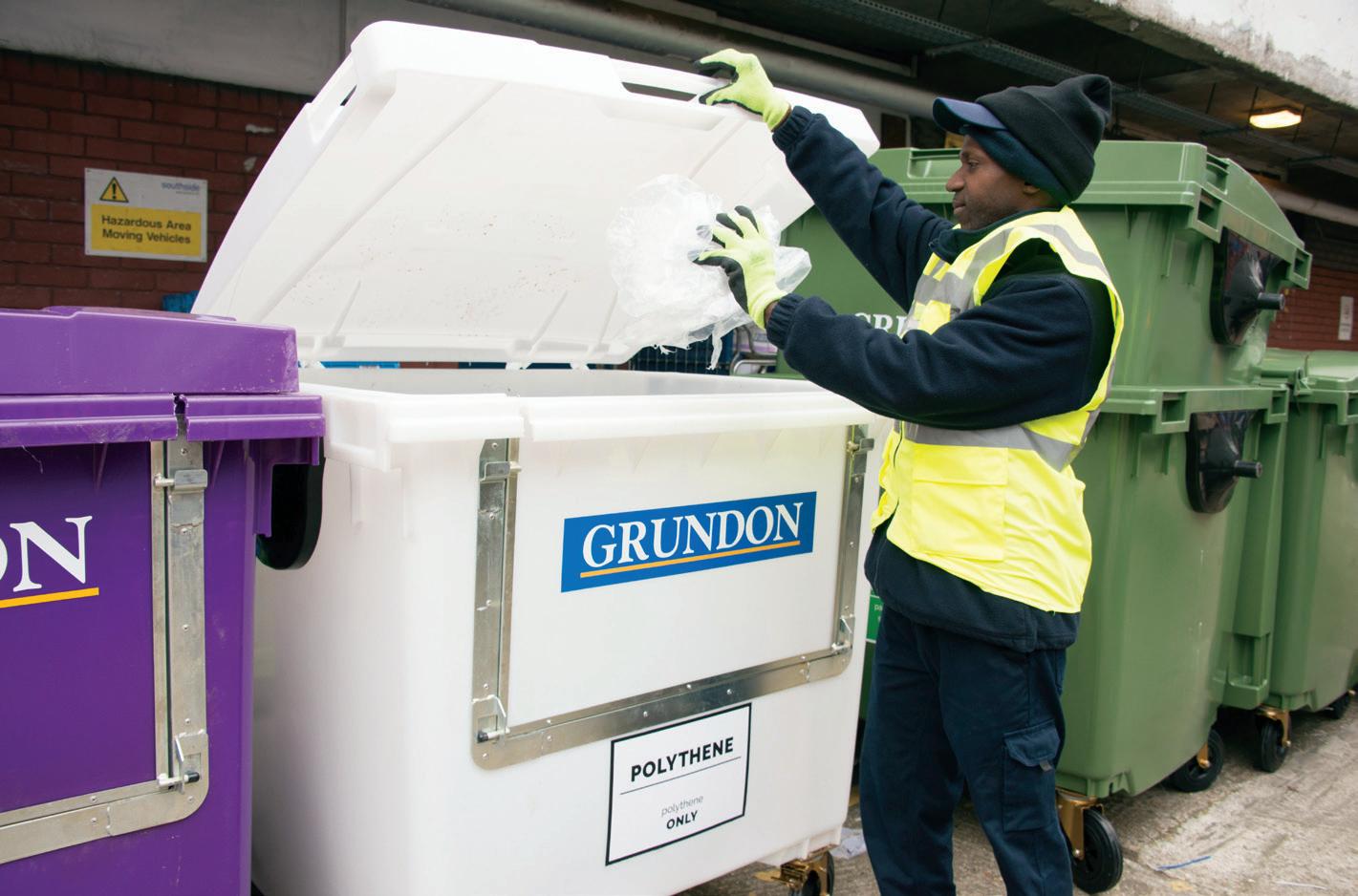
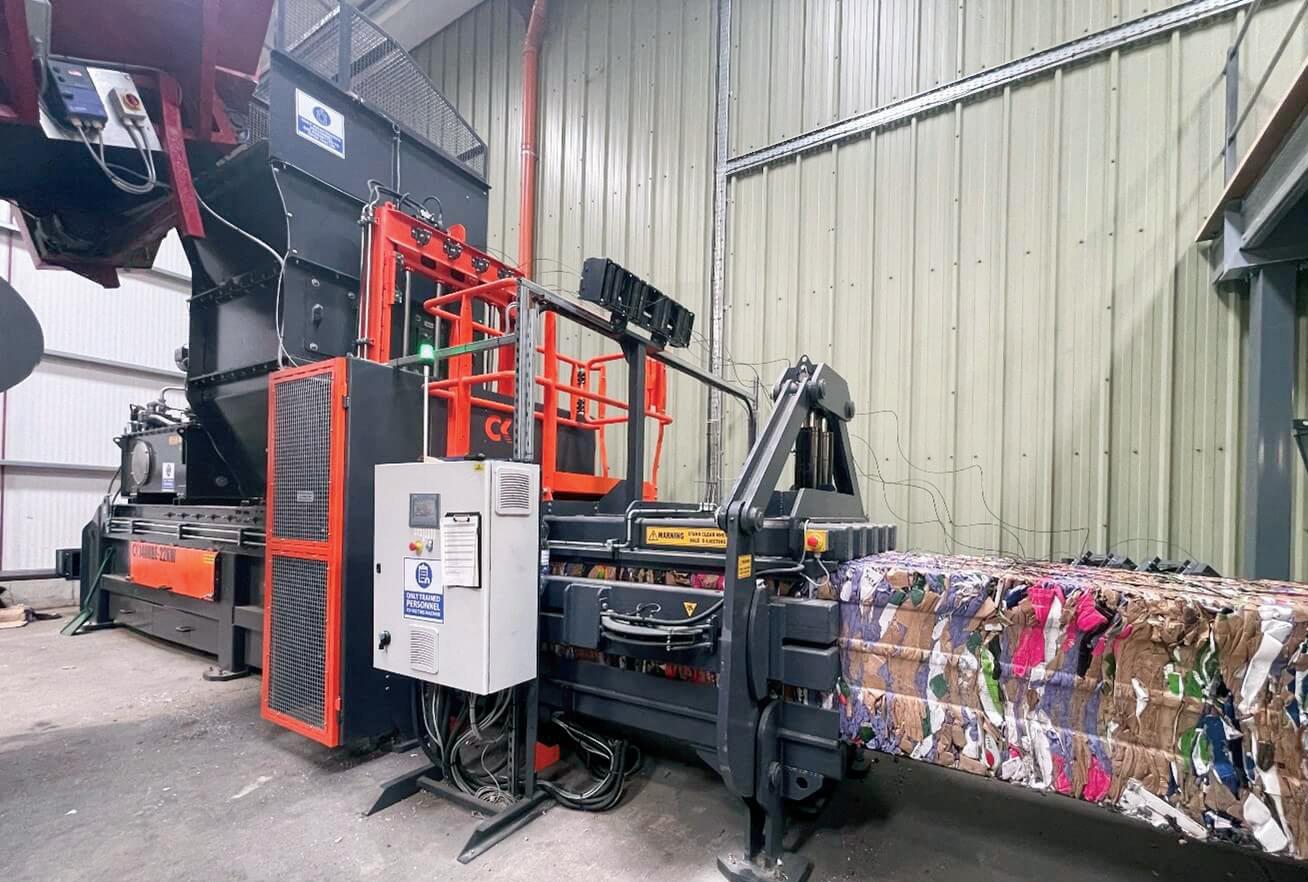
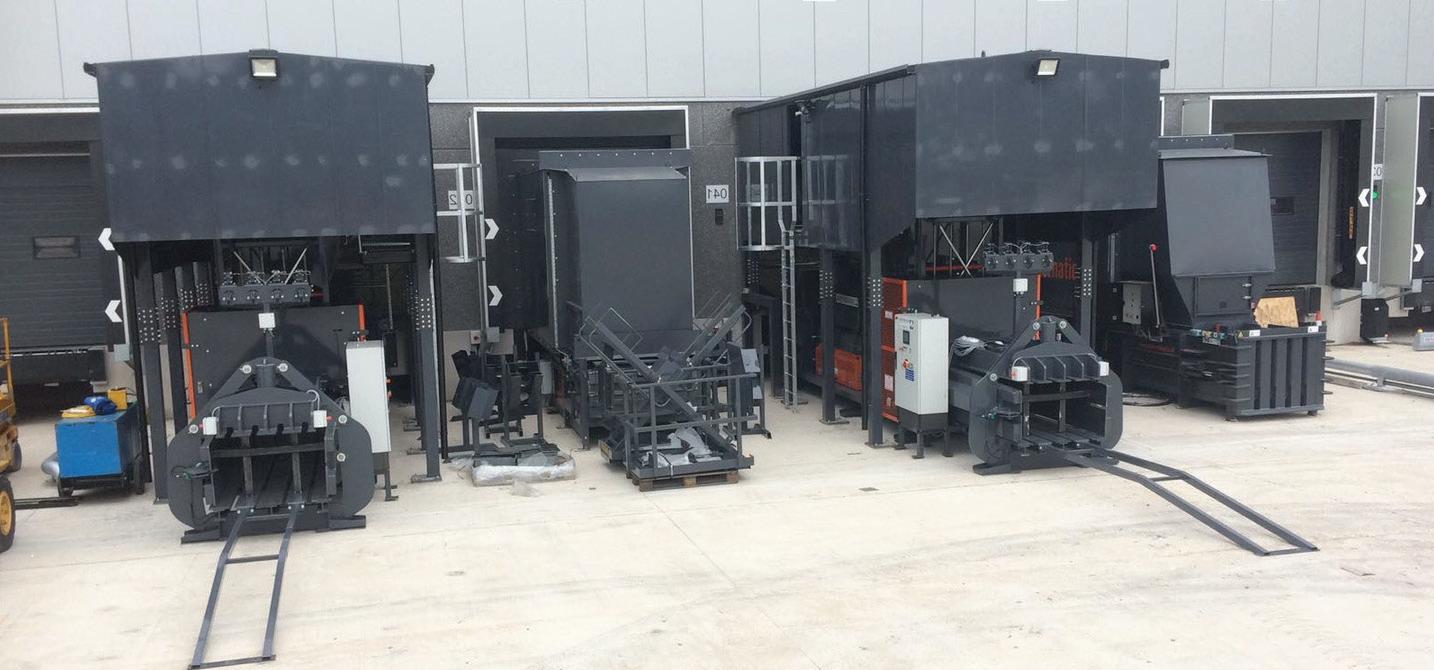
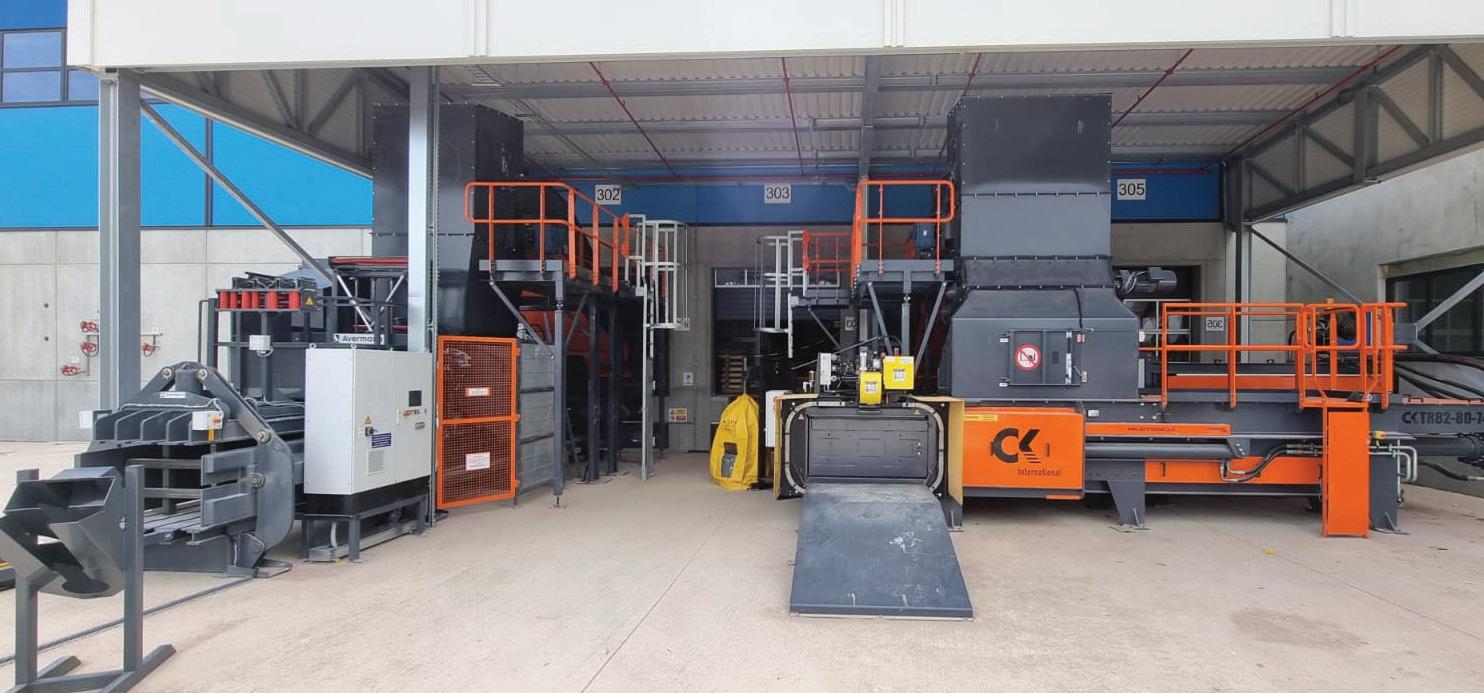
The CKSR16 Fully Automatic Channel Baler is a versatile choice for waste handling facilities, retail and logistics, excelling in processing high levels of materials with ease. Expertly designed for integration with internal automation, conveyors, chutes or binlifts. The ultimate horizontal baling solution for increasing productivity, efficiency and profit.

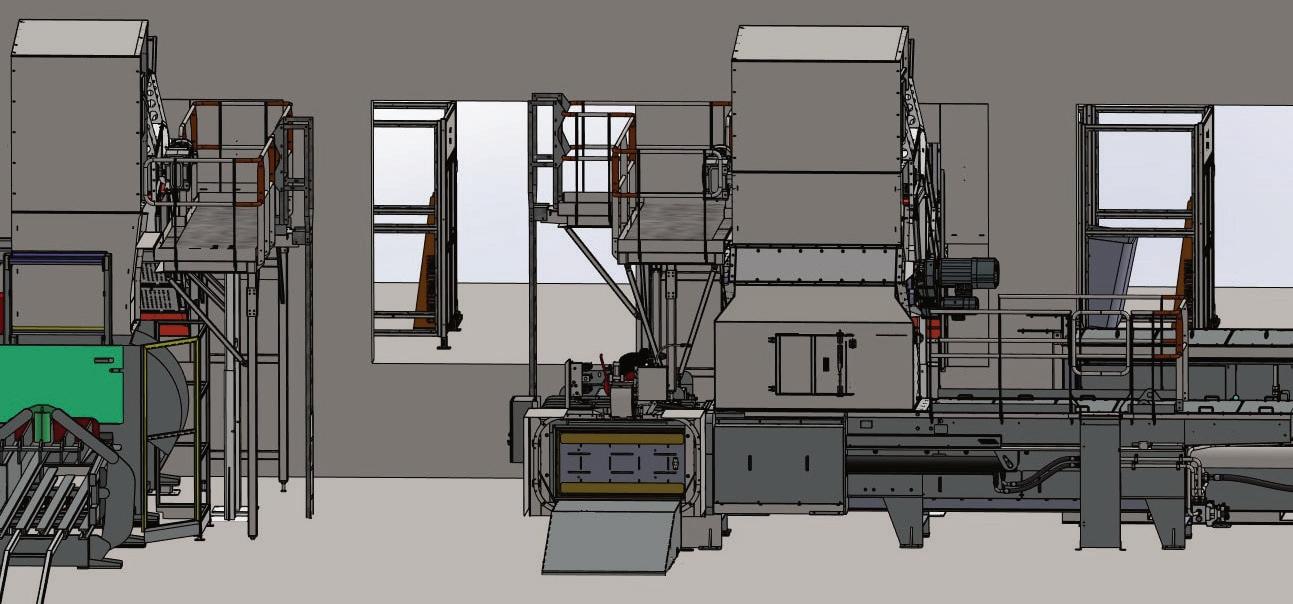




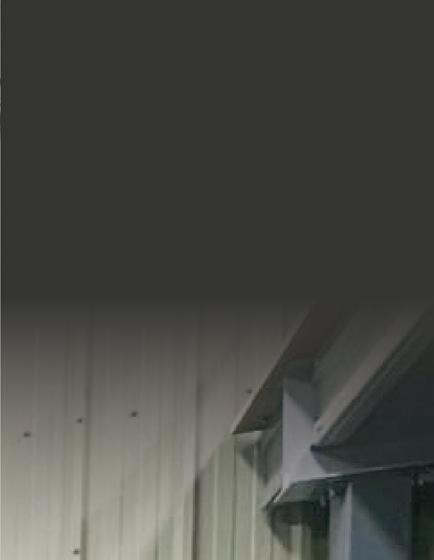


As the biggest event in the facilities calendar gets under way we hear from some of the leading exhibitors on their plans for the show and showcase the Facilities Theatre and Smart Buildings Tech Talks Theatre.
ALCUMUS


Anthony Hanley, SVP of Supply Chain Compliance, Alcumus says: “We’ll be exhibiting our Supply Chain Compliance solution which provides organisations with one true view of their supply chain.


FM4436
compliance. Risk management is no longer just a matter of compliance, but an essential element to business resilience and performance.
“What’s more, for FM services who want to stay ahead of the game and realise tendering opportunities to win new contracts they need to demonstrate not only their organisation’s credibility, but the credibility of their supply chain as well.
“Alcumus Supply Chain Compliance streamlines the qualification process and o ers a robust, consistent and e ective supplier and contractor on-boarding and management solution.
industry developments and challenges. We can’t underestimate the value of meeting and collaborating in person and this three-day event promises to deliver networking opportunities in abundances, so I’m really looking forward to meeting new connections.”
FM4452
“Today more than ever, FM services are facing increasing challenges in managing their supply chain compliance. Recent and ongoing supply chain disruptions means organisations need to find supply chain resilience without compromising
“The show presents an invaluable opportunity to learn and share. The FM industry is fast paced and dynamic, so what better way to get leading FM professionals all under one roof to network, discuss challenges and explore innovative solutions to keep peace and remain competitive.
“For me the greatest benefit of the show is networking, nothing beats face-to-face conversations to learn about the latest
CEF, the UK’s leading multi-channel electrical distributor, is excited to be back at the Facilities Show, eager to connect with customers and share ideas about a smarter, faster and more sustainable future for facilities management.
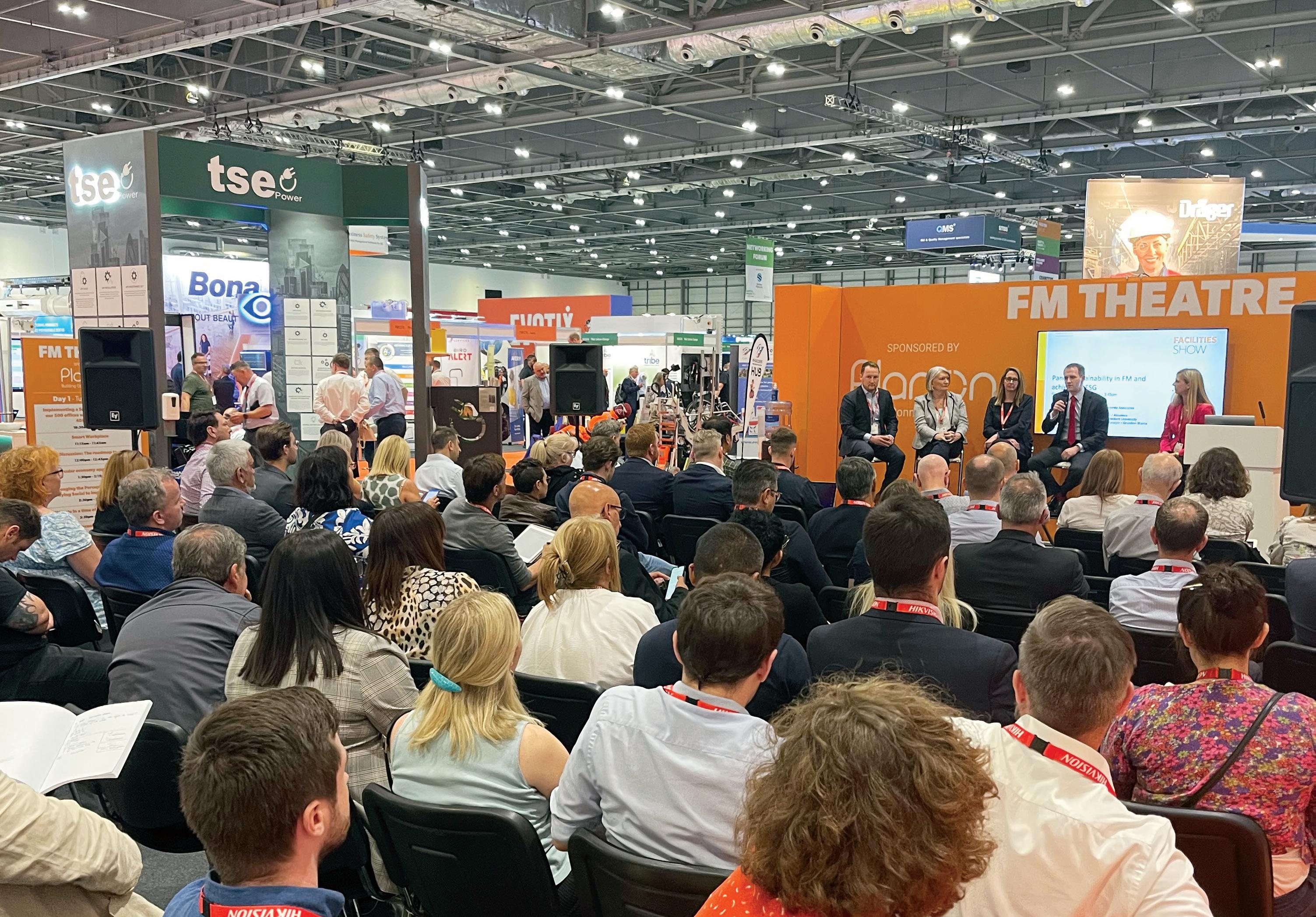
Team members will be on stand 4452 across all three days to demonstrate a range of products and talk about the wide range of solutions that CEF o er public and private sector organisations.
Cont.


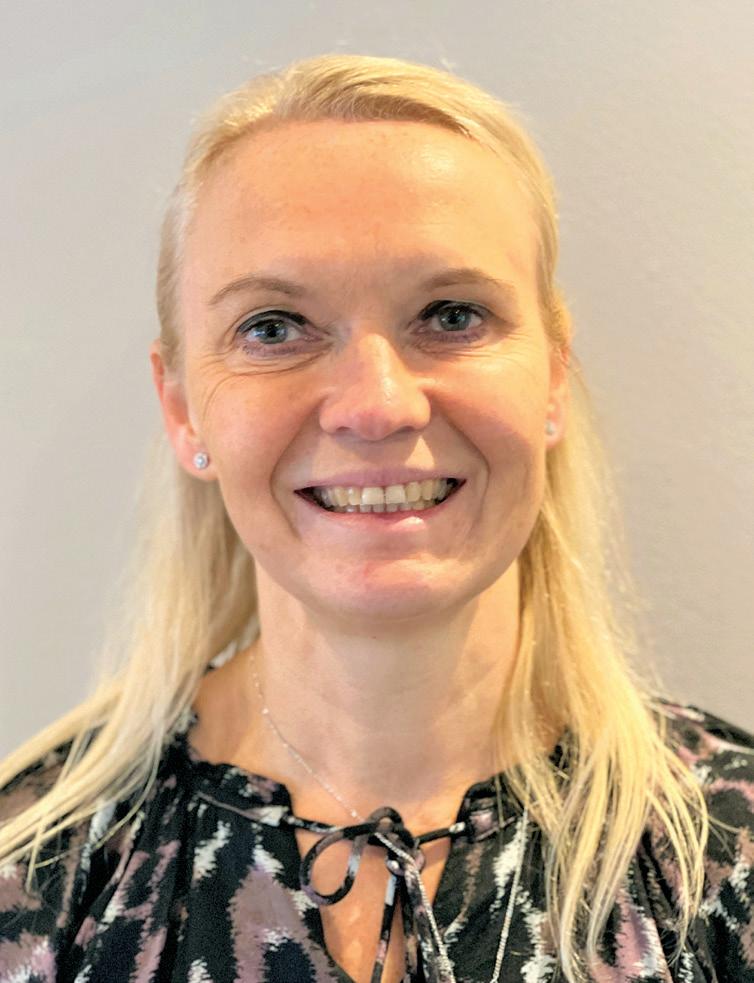





Led by John Brownless and Karl Cundill, the team’s unrivalled experience, business acumen and canny knack to perfectly pair consultants and projects has led to the rocketing growth.

In a recent restructure, Dee Cooper has been appointed as Head of Consultancy FM and Terry Wyldes as Head of Asset Management, with John and Karl now Joint Managing Directors. We caught up with both Dee and Terry to hear more about what is on the horizon for this dynamic duo.
Terry Wyldes explains: Our core work is typically driven by organisations realising they don’t have the in-house knowledge to complete asset management work – and it then snowballs into other follow-on projects. For most organisations they simply don’t appreciate what asset management can do for their business. Once they do understand, the switch is flicked.
We help companies understand their equipment and assets including Catering equipment, Heating Ventilation and Air Conditioning, Electrical systems and Fire safety and Security systems. We detail when it was installed, where it’s located, when it was last serviced and its current condition. This enables clients to set up Planned Preventative Maintenance regimes that reduce breakdowns, improve equipment uptime and also manage legal and statutory compliance requirements e ectively.

There is so much you can do with this data, which is where the follow-on projects come in. For example, Lifecycle planning enables businesses to maximise the life of their assets and equipment through management of repair costs versus cost to replace. Once an accurate asset database has been established there are also options to look at labour loading and to right size workforces accordingly.
Ultimately, we enable organisations to protect their investments and budget-plan e ectively for the next 5, 10, 15 years.
Dee Cooper shares: There are two key areas that set us apart from competitors. One is our team. O en consultancies have senior consultants with lots of experience supported by people with far less experience. We’re recognised for assigning people to projects who have not only have the FM experience but know the specific client sector really well. These combined are dynamite. Building our team and, thanks to continued growth, taking on some consultants as full-time employees is key to our plans.
Secondly, is our approach to the tender process. We drill down into the sector the client operates in, select the right suppliers who can truly deliver and meet the needs of the client and keep an open line of communication between the supplier and client throughout the whole tender process. The client is then given 4-5 really great, high-quality tender responses to choose from.
Our journey with clients o en develops beyond the tender process and we support them through the mobilisation and ongoing monitoring.
For further information visit https://litmuspartnership.co.uk/services/facilities-management
Visitors will be able to evaluate the e iciency of a range of hand dryers as Airdri demonstrate the performance benefits of their washroom products compared to the cost of hand towels.
CEF will also be talking about LED lighting and how it o ers an alternative energy-saving replacement for compact fluorescent lamps as they’re phased out of the market.
Energy e iciency is very much a focus for CEF, having made multi-million pound investments in renewables technology, adding solar, battery power and electric vehicle products and expertise to its business in recent years.
While most customers know and value CEF as a reliable wholesaler and distributor of electrical products through its nationwide network of 390 plus branches, and award-winning website, it also o ers many services for those working in the facilities management sector.
Gary Hutchins, Head of Facilities Management for CEF’s National Accounts division explains: “We really want to help our customers with the big challenges they face, whether that’s dealing with waste management, or making sure that their tradespeople always have the supplies they need to complete first-fix jobs. From advice and expertise on electric vehicle charging to training and development, we can o er a lot more than sockets, lamps and cables.
“We can’t wait to connect with our customers, so please come and talk to us during the show,” he added.
According to Esther Coleman, Product Manager, Idox: “At the Facilities Show this year we’ll be celebrating 25 years of our facilities management solution, CAFM Explorer®. Our comprehensive facilities management so ware enables complete visibility of all assets, costs and risks to empower facilities managers to preempt issues on site, streamline and automate task assignments, simplify reporting and deliver enhanced insight for significant productivity gains.


“We’ve been at the forefront of the CAFM evolution for over 25 years – you might not know that Idox coined the CAFM terminology – and our experts have adapted the innovative functionality of CAFM Explorer® as needs and technology have advanced. This includes the availability of a cloudbased platform with a new streamlined interface, meaning users can rapidly access the platform and its functionality with no so ware to install – a huge benefit for hybrid working that has become commonplace over the last few years. Our 25-year heritage means that we understand the challenges of facilities management and have a wealth of experience supporting our customers on their journey from spreadsheets to digitised, centralised
data and processes.
“We’re looking forward to demonstrating the benefits and functionality of our CAFM solution to visitors first-hand. The event is a great way to network and discover new and innovative ways that facilities teams can be supported to transform their processes. It’s also exciting to meet with existing customers again face-to-face and we’d encourage all visitors to attend the speaker sessions and learn what’s new across the facilities management community. Given that we operate across a myriad of sectors, it’s also an ideal opportunity to meet other users and share advice, hints and tips for streamlining facilities management in di erent use cases.”


Hollie Broadhead, part of Moneypenny’s Business Development Team, says: “The Facilities Show always provides a perfect opportunity for us to showcase our outsourced switchboard service and our combination of incredible people and innovative technology. At this year’s event we’ll be talking about the drivers for change for FMs and how they can future proof their business communications with the help of an outsourced switchboard, as well as unlock cost e iciencies and build greater flex into their approach.

“We will also showcase our world-first integration with Microso Teams integration. This is crucial to supporting call handling in an agile world and has been consistently popular since the pandemic.
“Large scale shows always provide a great chance for visitors to seek out new products and services and to keep up-to-date with new trends, technologies and legislation, but their value is more than that. It provides a perfect way to really get up close with businesses before you buy, and to check that they have good people, as well as products and services. Visitors should come away from the event armed with knowledge and crucially, meaningful connections too.
Alongside the exhibitors a range of seminars will be held throughout the show at both the FM Seminar Theatre and the Smart Buildings Tech Talks Theatre covering a range of topics from ESG to IoT.
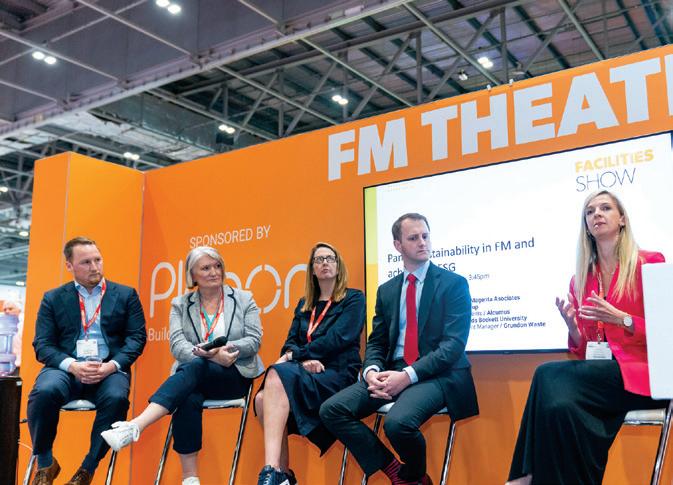
At the FM Theatre in the Facilities Show, Sunil Shah, MD at Acclaro Advisory, in association with Facilities Management Journal will be presenting: Sustainable Procurement in FM – Scope Three emissions and what you need to know at 2:45pm3:30pm Tuesday 16th May.
Shah explains: “The SFMI has been capturing the progress with Scope 3 inventories over the past few years. The maturity of Scope 3 emissions is developing, with many organisations still at early stages with simplified or incomplete inventories.
“The first step is to better understand the scope 3 emissions from the services provided and look at where and how these can be reduced. The SFMI Scope 3 FM Standard provides a standardised and consistent way for the emissions to be measured and communicated. Improved decision making can be made with data as to how services are to be provided. The session will look at where the market is heading towards and what good practice looks like together with an overview of the Scope 3 FM Standard.”
Chris Green of Pressac will be giving a Smart Building Tech talk at 10:40am - 11:00am Tuesday 16th May at the Smart Buildings Tech Talks Theatre.
“The Facilities Show is always a highlight in our calendar, and I love the fact you can experience demonstrations, fact finding and networking all in one place. As our business is built on connections, whether that’s with clients or industry partners, we’re really looking forward to catching up with
To the end-user, the important thing is analysing and displaying information in a useful way, but before we get to that, the data needs to be collected and shared between systems. Green’s talk will be about the ways this can be done within the IoT world; the advantages of protocols and standards such as MQTT and JSON in keeping your data manageable and controlled, and providing maximum flexibility and control, and retaining ownership of your data even when it hits the cloud.
DTS, now part of CSE Crosscom, will be at IFSEC International booth - IF.3025


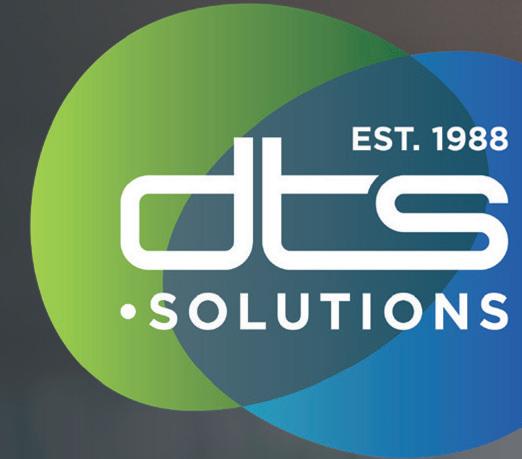












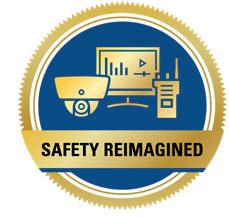






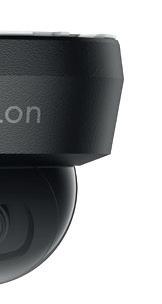







Connecting and empowering the individuals who keep our society safe and keep our world moving forward through a technology ecosystem that unifies voice, data, video, software and analytics in one connected platform.

Motorola Solutions’ Safety Reimagined is the first and only end-to-end enterprise technology ecosystem that unifies voice, video, data and analytics on a single platform — providing you with the foundation of safety you need by addressing the unique challenges of your Airport, Hospital, School, College, University, Stadium or Hospitality venue. It has also reimagined how the technologies used to help keep them safe can do even more — drive efficiencies, improve productivity and generate better outcomes. Because safety, efficiency and productivity are deeply interconnected. With the right technologies, you can be faster, smarter, more focused and more resilient — better at everything you do.
For further information please contact us:

“Our mission is to provide the ultimate solution for every client, now and for the future”
our peers and making new contacts within the facilities space.
“By linking seminars and networking together, visitors get a unique opportunity to really act on what they’ve learned and to find appropriate suppliers and experts who can help. It also provides a great way to strengthen industry relationships, share best practice and learn about the newest strategies, products and services.”
FM
Sophie Knapman, Commercial Marketing Manager, Says:“Numatic is pleased to be attending the Facilities Show where we will showcase our top-of-the-line cleaning solutions for businesses of all sizes. Our products are designed to make cleaning a breeze, so you can focus on what matters most.

“With over 50 years of experience in the industry, we know what it takes to create reliable and e icient cleaning equipment. Our products are trusted by professionals in a variety of industries, from healthcare to hospitality to education.
“At the Facilities Show, you’ll have the opportunity to see our products in action and speak with our knowledgeable team about your specific cleaning needs. We o er a wide range of solutions, including vacuum cleaners, floor scrubbers, and janitorial trolleys, so you can easily find the perfect equipment.
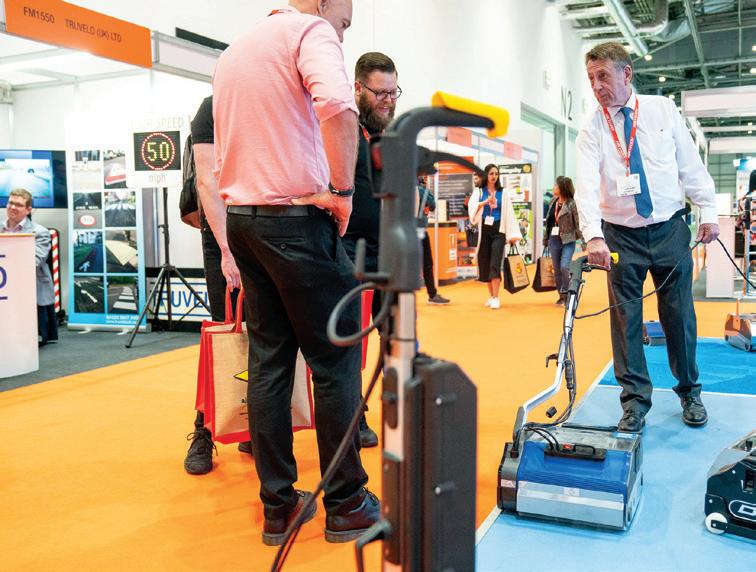
“We pride ourselves on our commitment to sustainability, and many of our products are designed with the environment in mind. From our energy-e icient motors to high-quality recycled materials, we’re dedicated to reducing our carbon footprint while still delivering top-quality results.
“Don’t settle for mediocre cleaning equipment. Come see us at the Facilities Show and discover why Numatic is the industry leader in cleaning solutions.”



Gavin Franks, Chief Commercial O icer says: “We are looking to showcase the range of services Nurture Group deliver across Grounds Maintenance, Landscape Design, Interior & Exterior plant displays, Gritting and Pest control and in particular demonstrate and bring to life the way that these services are delivered.
“We welcome the opportunity at the show for direct engagement with the Nurture team across the di erent service lines and an opportunity to learn more about the range of services delivered, the way services are delivered and how Nurture can provide
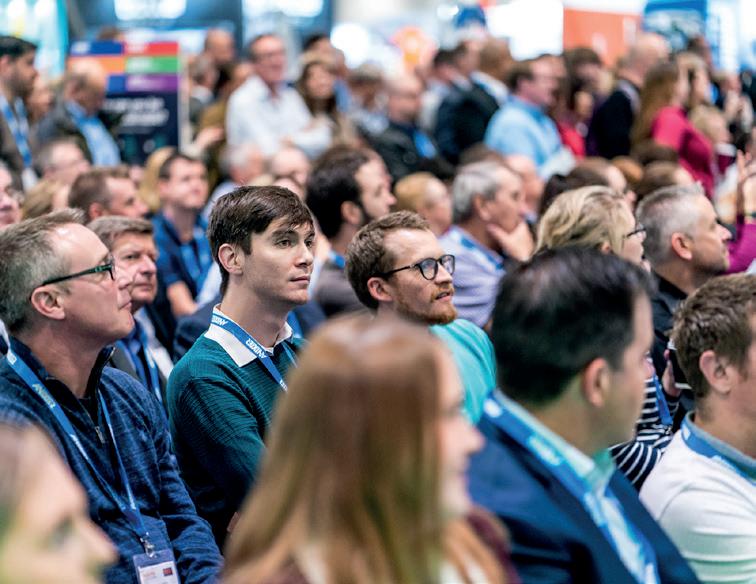
additional value through customer engagement, innovation and furthering businesses ESG agenda.
“The Facilities Show o ers an opportunity for networking, to catch up with old friends and colleagues and make some new friends. It’s always good to see the range of other services being o ered across the FM sector along with innovation.”



Pressac is coming to the Facilities Show with its latest IoT solutions. Says Director of Sales, Mark Lawrance: “Firstly, we want to show organisations how they can tackle the challenges faced by the FM sector, with improving building e iciency being the toughest one.


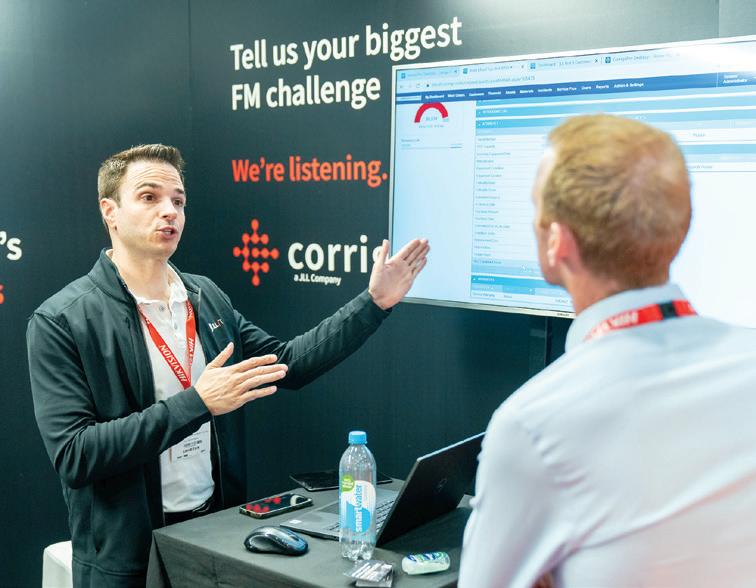
“We know that in Europe 75 per cent of buildings are classed as ine icient. and non-residential buildings use on average 40 per cent more energy. We’ve seen campaigns on social media where large, modern-looking buildings are consistently le overnight with lights on. This is a perfect example of the major issue of around a third of energy used by buildings being wasted. Just think how addressing this issue will support your Scope1 emissions strategy.
“While we support the FM in embarking on the long-term net zero economy transition, there are also several quick wins that can help companies cope with the current increased energy prices and provide in-depth data that is instrumental in supporting the development and implementation of a smart energy management strategy.
“It’s a well-known fact that IoT forms the foundation of any intelligent building system. Having access to accurate, reliable data provides the business intelligence necessary to develop and implement building management and FM service strategies. With real-time data, KPI’s can be measured, service levels achieved and operational challenges addressed.
“Visitors can find a selection of Environmental Monitoring sensors deployed at the Vanti’s Smart Buildings Immersive Space. Last year they delivered a true technological feast that worked, this year the bar is set even higher. We have also invited special guests from the so ware side of IoT for those visitors looking for a complete solution that includes so ware.
“The IoT team are looking forward to networking and seeing what other exhibitors have in store, while Chris Green, one of our product gurus, will be hunting for all the technical newness. We always encourage our sta to come for a day and explore. Everybody finds something di erent. There are even some of our devices installed in ExCeL itself and we’re eager to see them in action.
“Edison once said that ‘There’s a way to do it better. Find it’. There is always innovation showcased during the event and it’s great to come and




















discover it whilst meeting the people who stand behind it.”
Paul Bullard, SFG20 Product Director says: “Building owners have been subjected to an unprecedented onslaught of new regulations recently. New Fire Safety (England) Regulations came into force at the start of the year, bringing in tough new legal requirements for anyone responsible for fire safety in highrise residential buildings (HRRBs).
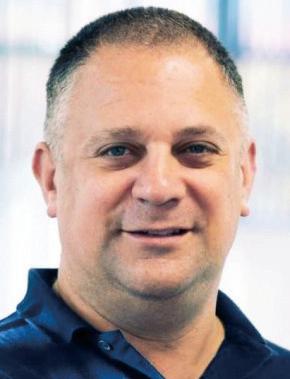
“Last year, we saw the unveiling of the historic Building Safety Act, which has been described as the biggest change to safety culture since the second world war, and there were some significant updates to the Building Regulations.
“All of this can seem a bit daunting to facilities managers, so SFG20 will be taking the opportunity to demonstrate how our digital system can ease the pressure. The team behind SFG20 continually updates our service and maintenance schedules to ensure anyone using our system to manage their building remains on top of legislative changes and on the right side of the law.
“Managing risk is a key part of what SFG20 o ers, but it is not just about staying legal and reducing safety hazards. We also o er a route to managing financial risk at this time of rising costs across the board by closely mapping an individual building’s maintenance requirements to resources. This helps FMs to target spending where it will do the most good and avoid over or under-maintaining their assets. We will be demonstrating our e-guides and checklists that cover the challenges facing maintenance professionals today.
“There has been a noticeable rise in enthusiasm for spending time at ‘in person’ events since the pandemic, but I also think people are using their time more wisely now. This means they are looking to get more tangible and specific benefits from visiting exhibitions and conferences. We expect to see a lot of visitors coming along with detailed and searching questions – particularly when it comes to managing assets in a cost-e ective way.
“This is a great opportunity to exchange knowledge with a broad cross-section of the industry, but also to share problems and potential solutions. Times are tough right now so it is very helpful to be able to talk to people who are going through similar experiences – and motivating if we can share possible solutions and learn from each other. Having
this in a ‘social’ setting is almost as good as professional counselling!”


Hazel Bedson, Marketing and Operations Director explains: “Service Works Global (SWG) is excited to return to the Facilities Show in 2023 to showcase QFM, its market leading CAFM and Space Management so ware, along with QFM BIMi, its innovative solution for leveraging BIM (Building Information Modelling) data within operational facilities and estates management.

“Over the last 12 months, significant enhancements to the products have been made including a fully integrated work permits solution, an improved user interface for the QFM BIMi product, and increased focus and integration with smart buildings and IoT technology. Enhancements have been driven by our in-house product team alongside our existing network of clients, particularly within
the healthcare, higher education and service provider market sectors.
“On the stand this year we will be delivering a series of live demonstrations highlighting the benefits FMs can leverage through CAFM, BIM and Space Management so ware such as ensuring compliance, maintaining standards and driving e iciencies for estates.
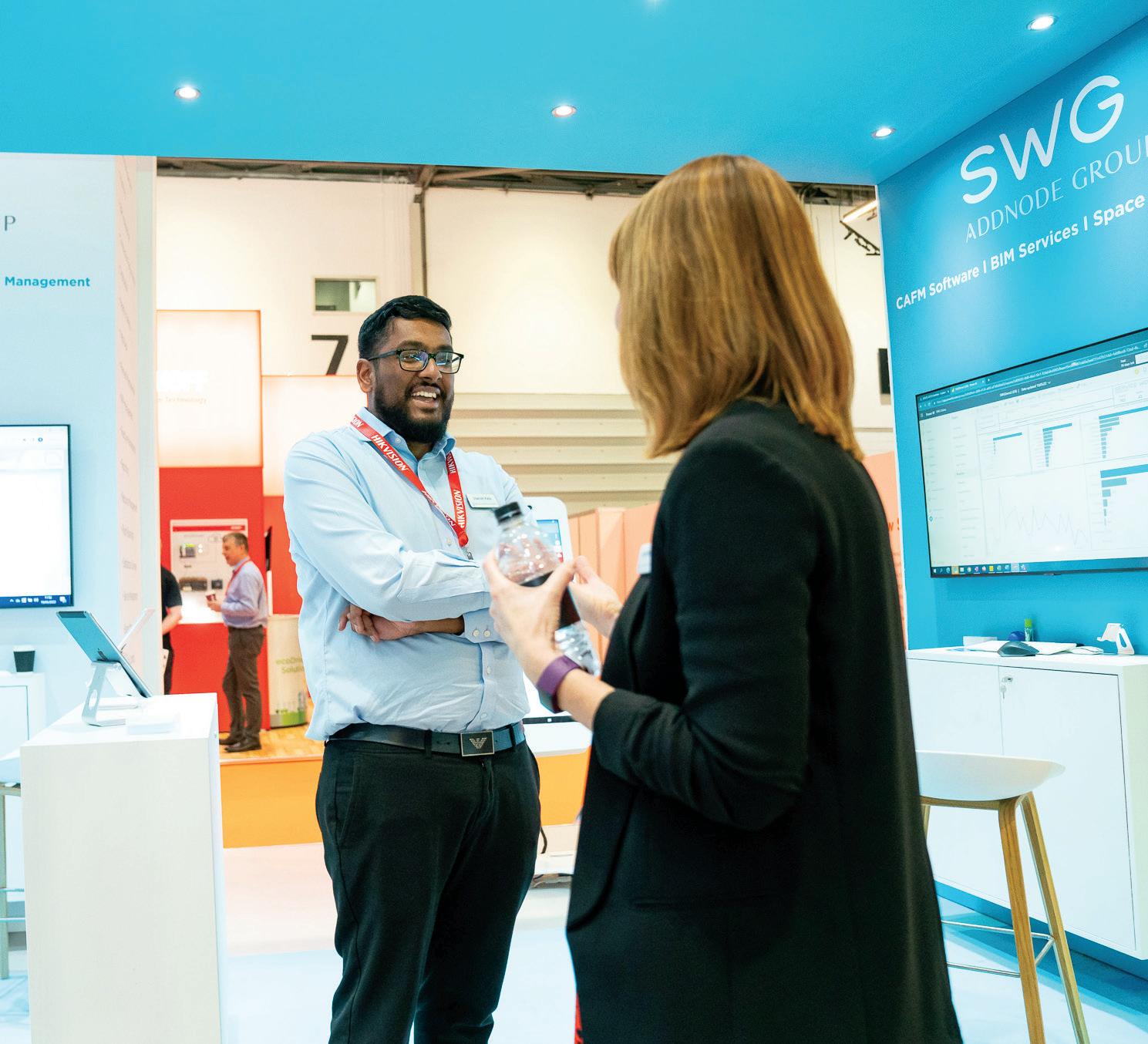
“It’s hard to ignore the value of face-toface events, especially a er the COVID-19 pandemic. There is no better convergence of FM technology in the UK than at the Facilities Show, both from the speaker selection to the demonstrable technology available. FM professionals will benefit from viewing live demonstrations of technology and learning how they can move their estates forward in the post-pandemic world, whether that’s becoming more sustainable, e icient or streamlined.
“We are looking forward to meeting new people within the industry and catching up with existing customers and partners. It’s very rare you get so many FM professionals in one place so the opportunity to meet and network with peers is very important. Colocated events, such as Digital Construction Week, also o er great opportunities to gain insight into the latest building technologies and trends.”
Compliant with the National Standards of Healthcare Cleanliness
IOS and Android complaint
Digital operation reduces errors and operator time

Meets growing demand for digital working
As we move towards a more sustainable future it is crucial that we prioritise finding ways to reduce waste and create closed-loop systems.
Choosing products that are designed to last longer and have improved durability can have a significant impact on reducing landfill and unnecessary waste, preserving valuable resources. The partnerships at The Regen Initiative are working together to make sure our lighting solutions are designed perfectly for circularity.
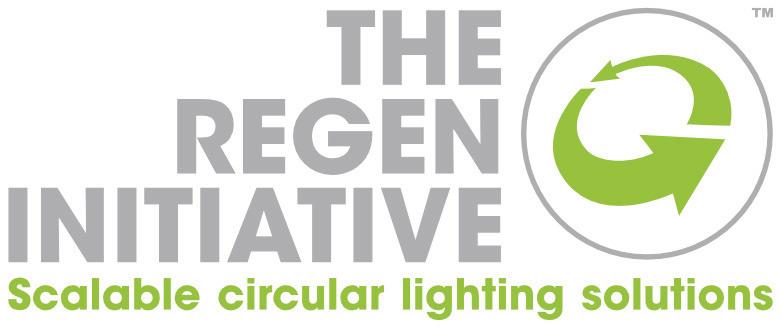

Our full lighting refurbishment service breathes life into existing fittings. We don’t just throw away the old, but we make it new, extending product lifespans and delivering full turnkey solutions.



Make longevity and durability a priority and work with us towards a more sustainable future >>> theregeninitiative.com
Creating scalable circular solutions for the lighting industry.

We have saved over 6 days per month of resource time having the ability to auto trigger emails direct to our users, as well as now having access to key electronic data on audits being completed for ease of reporting.

As the workplace continues to adapt to o ice occupancy trends, keeping track of all your assets and maintaining up-todate information on their condition and value is crucial for businesses to ensure they are keeping to their ESG goals and budgets. But how does asset management work?

For us, the first part of any workplace project, be it a relocation or change management, begins with understanding the client’s design standards and furniture strategy. This is followed by the creation of a full asset audit of everything that the business owns, including furniture and IT and AV equipment, all the way to filing and stationary stock. A regular occurrence when we present the full asset audit to the client is that they don’t realise just how much ‘stu ’

they have, or how to use it e iciently.

Once we have the full list of the clients’ assets and their plans for their space, we grade each individual asset. Items are graded based on their current condition and their potential usability in the future. By using a grading system, we can make better informed decisions about the future of all the assets owned by the client. We can enable them to determine if certain assets will be kept, what items will be best used elsewhere, and what items are no longer needed.
This process allows us to build a program for the reuse of stock in a project and begin plans for what will and won’t be included as per the client’s new design and furniture strategy. Typically, we see that significant investment has been made for client-facing assets, whereas the ‘back-o ice’ items


remain outdated and uninspiring. This process may present an opportunity to invest in employee’s equipment and spaces to improve the overall workplace experience.

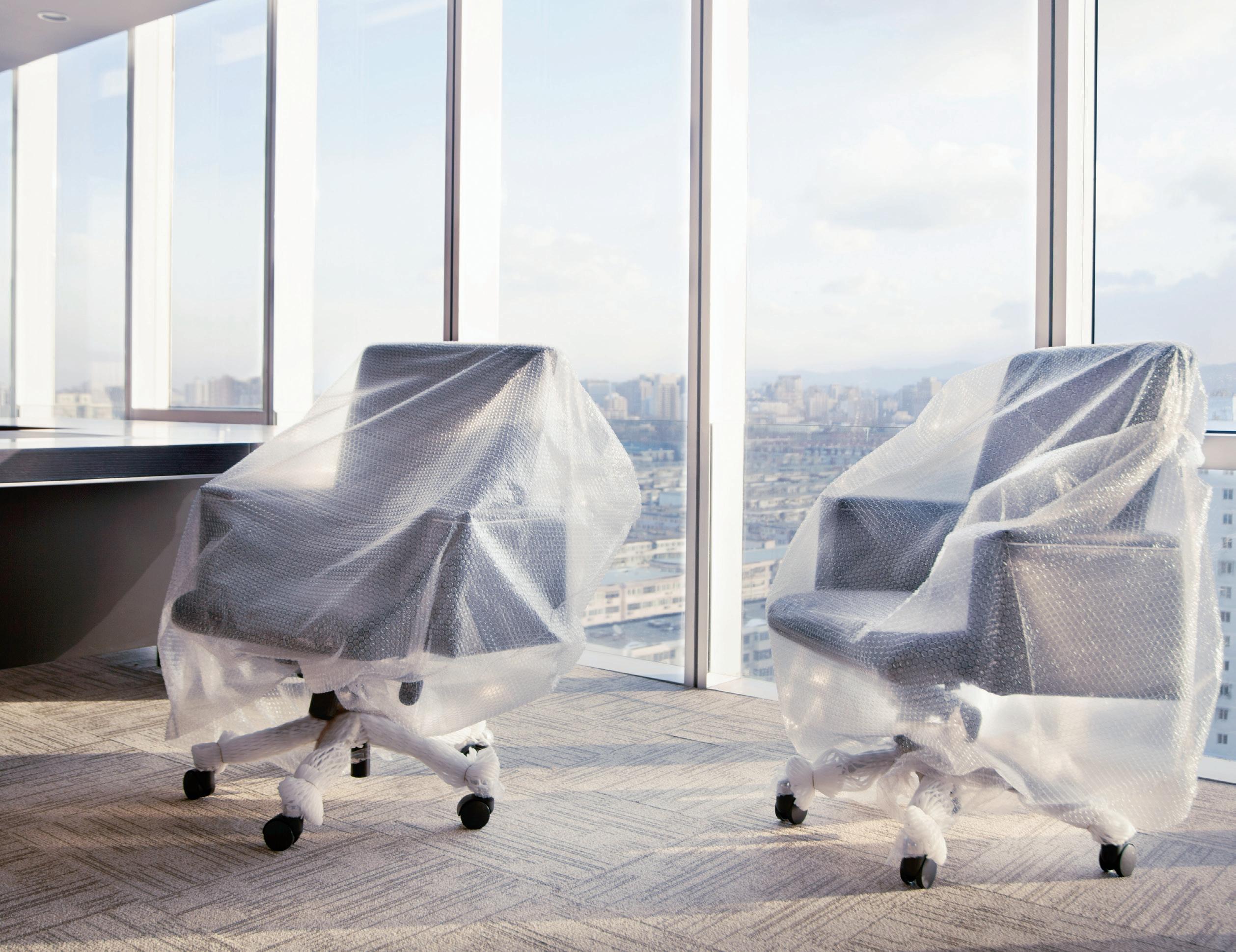
By building a stock program following the asset grading, we can ensure that the assets are being retained for the right reasons, and those that aren’t are being reused and repurposed e iciently. Assets that no longer have a use or don’t align with the design strategy still have plenty of options for reuse. BMG has several charity partners that take unwanted furniture, such as Business2Schools(i), which supports the redistributing of o ice furniture for use in schools across the country. Providing a second life through closed-loop solutions

such as these are an e ective way for organisations to make carbon savings, prevent additional waste management costs and create a positive contribution to wider society.
For those assets that are beyond use, and won’t find a new home, recycling is the final step. Recovering as much of the material as possible means they can be converted, supporting the manufacture of other products and the production of energy. A er the material breakdown, clients are provided with detailed reports, so they know exactly what happened to each item, the carbon costs that come with recycling and the environmental benefits that come from avoiding landfill.











At BMG, we use a bespoke so ware platform that manages the asset inventory of businesses and can be integrated with employee surveys. When we create audits of each employee’s desk set up for the new location, this information can be uploaded to the so ware and linked to the relevant individual assets, along with their location at the new space. This helps us to streamline the process and deliver the best level of service to our customers.
Assets can be monitored according to occupancy data and working trends, informing the facilities management teams which items are used the most, and therefore need more routine cleaning or general safety checks. Additionally, it can inform what assets aren’t being used by occupants and help with decision making around the future of that asset within the business.
Using an online platform is the most e ective method to organise these assets and their data and drives benefits in time saving, accessibility and sustainability. It allows for the most accurate reporting on the cost savings made by reusing and refurbishing furniture assets as well as the carbon savings from not sending them to landfill. This information helps businesses to demonstrate how they have supported the communities they operate in.
This so ware also aids in monitoring the value and depreciation of the assets within a business. Typically, when items go into storage and are added to the balance sheet, that current value isn’t monitored over time. With this so ware, an asset’s value can be closely monitored and kept up to date, allowing for more accurate financial reporting for the business.
Additionally, the so ware can be adapted
to suit the individual needs of the business.
Permissions to view the asset inventory can be given to whoever requires the data. The authority to request certain items from the inventory can also be granted to users, almost the same as an online shop.
the data. The to
Although asset management has been a part of our service o ering for over 20 years it has become more popular in recent years as workplace change has rapidly evolved. Requirements of businesses are changing and will continue to change; as ESG strategies and carbon emissions targets grow, sustainable furniture asset management will become a large part of a workplaces change management program. A commitment to contributing to the circular economy with a climate risk agenda are what make asset management a succinct way to keep track of your businesses position, and what can be done to improve or maintain it.
Additionally, the physical landscape of the workplace is also in a transitionary period. Task-led environments are becoming more popular, with increasing separation between collaborative spaces and quiet workspace. Businesses want to know how they can accommodate for these new trends in their space with the furniture assets they have, and asset management helps them do that.
BMG has worked in partnership with Aviva for over seven years and asset management is a core part of our remit. One recent relocation and change management project included a full audit of Aviva’s o ice furniture assets, item grading, and making decisions about what items to reuse, refurbish, donate, and recycle. Key takeaways from the project included:

£238,950 in cost avoidance through the selective reuse and redistribution of quality Aviva furniture assets.
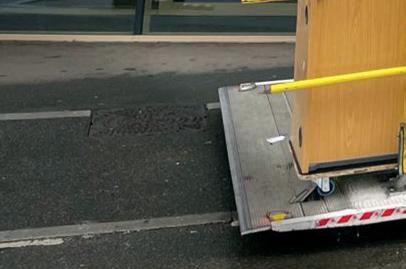
88,960 kg of CO2 avoidance through reuse avoiding new purchases (saving CO2 that would have been generated through manufacturing).
A total of 536 standard work desks, 508 ergonomic task chairs, and 146 storage cabinets saved.
44,322 kg of material that was segregated and repurposed, therefore avoiding landfill.
The project saw the reutilisation of desks to provide a framework which was then topped with a new bespoke worksurface, to create a collaborative work setting for teams; the creation of a standardised height raise desk to help support all colleagues, allowing them the choice of how their desk is positioned; and an alternative numbering system in line with their smart working principles which meant that the process of employees locating a desk was simplified.
The project would not have been possible to report on without the assistance of asset management protocols and so ware that keep track of each asset.
(i) www.business2schools.com
By building a stock program following the asset grading, we can ensure that the assets are being retained for the right reasons, and those that aren’t are being reused and repurposed e ciently. Assets that no longer have a use or don’t align with the design strategy still have plenty of options for reuse.”
Living walls on the exterior of buildings also deliver a huge range of benefits, such as removing harmful pollutants from the air, enhancing wellbeing and productivity, reducing urban temperatures and improving biodiversity.
Traditional, ground-level planting is not always possible in urban centres where space is at a premium. Living walls make the most of vertical spaces, and o er a cost-e ective way to reconnect people with nature.
In today’s post-pandemic era, hybrid and home working have become firmly established as the ‘new normal’, with many people still showing a preference for more flexible working arrangements.
A 2022 survey by the O ice for National Statistics (ONS), showed that over 80 per cent of workers who worked from home during the pandemic were planning to continue working remotely or on a hybrid basis.
A 2021 report by the Centre for Economics and Business Research (CEBR), calculated that the pandemic had already resulted in an £11.9 billion reduction in spending, which would have otherwise been spent in shops, eateries and pubs near major employment hubs in five of the UK’s biggest cities.
The report stated that if hybrid working were to continue over the longer term, those cities would experience a reduction in spending of £322 million a month, compared to pre-pandemic spending.
To entice people back into o ices and retail settings, facilities managers need to consider how they can create more inspirational spaces that people want to spend time in.
There is a huge amount of evidence showing the value of adding living walls to indoor or outdoor spaces, from o ices and stations to shopping centres and schools.
Incorporating a living wall can boost wellbeing in many ways. They make people’s surroundings more aesthetically pleasing and relaxing, as well as adding large quantities of toxin-cleaning plants to their immediate environment. Breathing cleaner air leads to better overall health, and being surrounded by plants has also been shown to have a positive e ect
on our mental health. For employers, the result is reduced sickness, better retention and happier sta . Additionally, because they produce their own fresh air, internal living walls can actually reduce a building’s energy consumption and ventilation costs by reducing the number of required air changes per hour.
Research has shown that if people can see plants while they’re working, their concentration levels, productivity and creativity all improve.
In one study by Echo Research, employees stated that they’d feel 62 per cent more motivated if their employers improved their surroundings, and estimated that they’d be 30 per cent more productive as a result. Factors such as good ventilation, natural light and greenery were all cited as important aspects of workplace satisfaction.
In a 2014 study by the British Council for O ices, 45 per cent of workers said that they would move to a new job if the working environment was better, even if their role, salary and benefits stayed the same.
As part of their commitment to providing inspiring spaces that enrich the public realm, contribute to their ambitious sustainability goals and attract more footfall, Canary Wharf Group commissioned us to install living walls in several key locations across their estate.
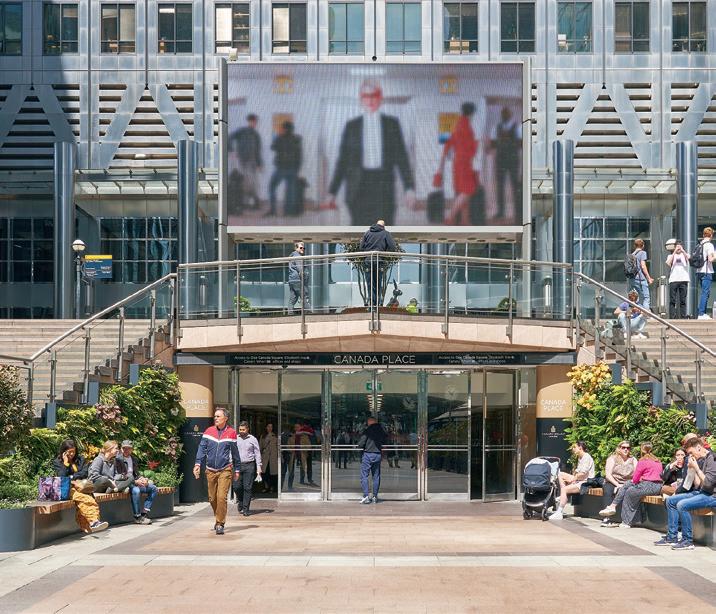

The living walls were designed to create a natural, vibrant feel while maximising the ecological benefits. Plants were selected and combined to ensure they provided year-round visual interest through colour, shape, movement, and texture.
The living walls for Canary Wharf Group were created using ‘PlantBox’, our stackable living wall system, which can be extended, reconfigured or even relocated as requirements change.
Manufactured in the UK from 100 per cent recycled materials, the troughs were planted up in our nursery before being installed on site in several phases. This ensured the living walls looked beautiful from day one.
As the system is loadbearing and only requires restraint fixings, the living walls at Canary Wharf didn’t need structural approval, which enabled us to o er a fast turnaround on the project.
Following completion of the first phase of the project, we were appointed to design and deliver several biodiversity boxes and additional living walls to commemorate the opening of the Elizabeth line. Our expert horticultural team also carry out regular inspections and maintenance to keep the living walls looking their best.
Clearly, in order to encourage and attract people back into workplaces, retail developments and high streets, facilities managers, architects and developers alike need to provide something extra that people simply can’t experience at home.
Living walls are an e ective, sustainable way to create inspirational spaces that reconnect people with nature, making them feel happier, healthier and more satisfied with their surroundings. It definitely beats working from the dining table!
From council and government buildings to hospitality, sports stadiums and education, Power Control provides backup power for commercial premises.
- Single phase rackmount and tower UPS
- Three phase monolithic and modular UPS




- EN50171 modular and monolithic central power supply systems
- Critical power maintenance




- Free site surveys and health checks





Theannouncement last year that OCS group was to merge with Atalian Servest under a deal with private investment firm Clayton Dubilier & Rice (CD&R) was an intriguing concept due to the contrast between the two brands. OCS has a long pedigree in FM, dating back to the 1900s while Atalian Servest is less than two decades old but has rapidly expanded through organic growth and acquisition.
Now that the deal has gone through, Rob Legge Group CEO who spearheaded the success of the Servest brand talks us through his plans for the new operation. First, he reflects on his legacy at Servest.
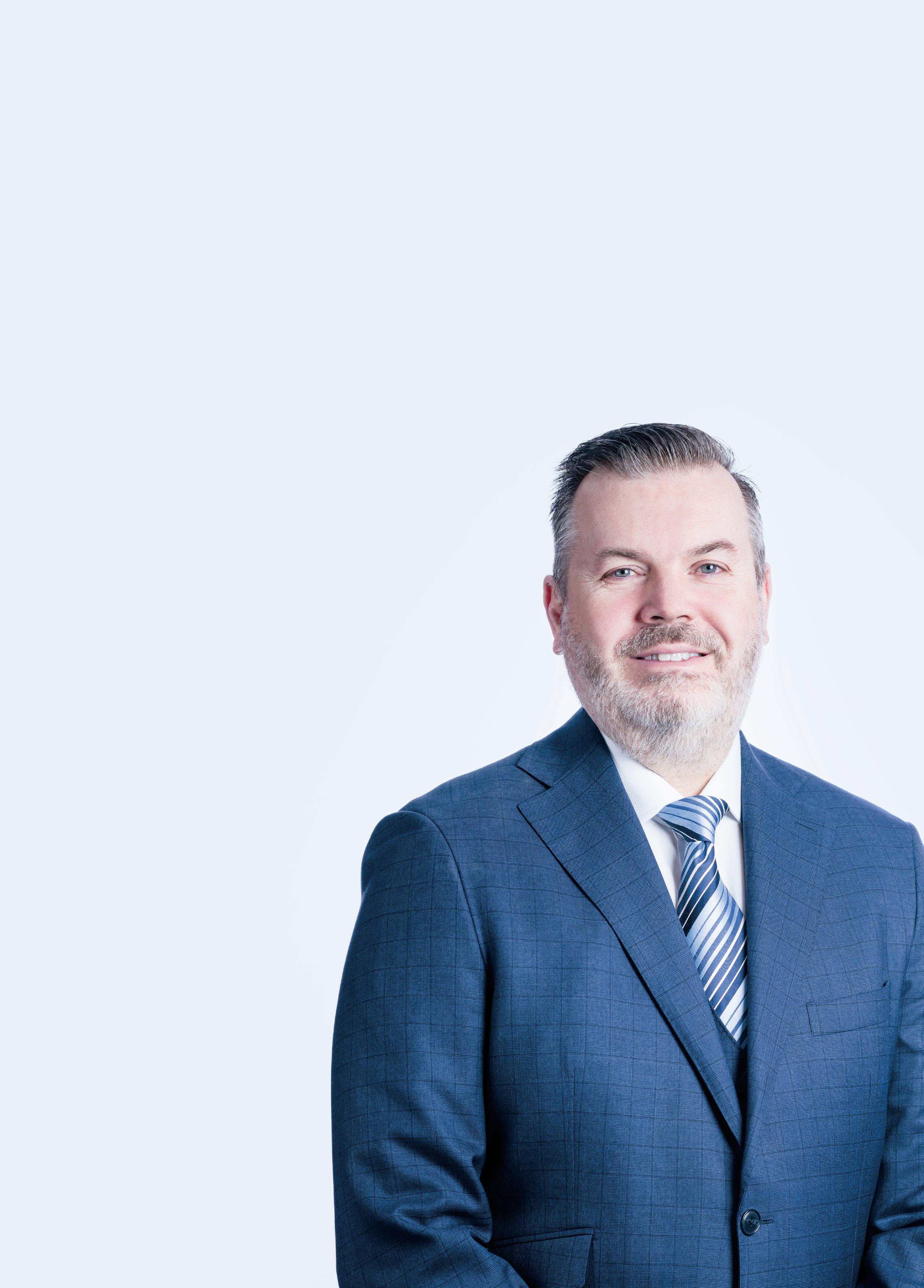
“I started a cleaning company in 1997 in the UK which morphed into FM provider Servest in 2007 when we were acquired by a South African company. The plan was to grow what was a relatively small cleaning company to a large FM operation using private equity backing. I headed it up as Group CEO, looking a er the UK and Ireland and South African business. We grew the UK operation to just over 800 million in revenue by the time we got to 2018 and that was when I sold the UK group out to Atalian Global Services.”
Legge stayed on as Deputy Group CEO alongside Atalian Chairman and major shareholder Franck Julien. Atalian Global Services Group had a turnover of €3 billion at the end of 2018, employed more than 125,000 people worldwide and operated in more than 36 countries across four continents. By 2020 explains Legge, the company needed capital to help with its growth and development and was working towards that when the pandemic hit. During the hiatus, it emerged that Atalian’s owner was willing to make a full exit from the business.
“Once he gave me the mandate we spent a long time with private equity firms and came up with three o ers,” says Legge. “Clayton, Dubilier & Rice (CD&R) were the best as they have a lot of experience in the service sector including SPIE, Baxter Storey and Morrisons.
“The whole transaction was due to go through in November 2022 but unfortunately the French business encountered wage increases which a ected the performance of French operations so much so that the private investment firm renegotiated the deal with the shareholder to sell just the UK and Asia operation separately.
“At the same time CD&R were working on acquiring OCS which they concluded in November 2022, and we quickly finished our deal at the beginning of February and brought everything together on the 1st of March this year.”
With Atalian continuing to trade in France, Central Eastern Europe, USA and Africa, the group has le behind the Atalian brand and will operate under a refreshed OCS brand with a new image and a new look. It covers 36 countries in total with the focus on the UK and APAC and comprises the UK and Ireland, Thailand, Indonesia, Cambodia, the Philippines, Singapore, Malaysia, Australia,
New Zealand and India. There are also operations in the Middle East and the group retained ownership of Aktrion, a European automotive business.
“Colleague numbers across the two businesses at the moment are around 130,000 people,” explains Legge, “and with group revenue at about £2.1 billion, it’s a big business.”
In terms of service lines, cleaning accounts for around 65 per cent of group activity but security is a growing area, particular the combination of security and tech. In hard FM the group o ers technical services, HVAC, preventative maintenance programmes and a projects service. The purchase of Incentive FM last year bolstered its Integrated FM presence in the corporate, destinations and venues sectors and OCS can also provide a comprehensive food service business, complimenting the existing catering brands Angel Hill and Academy. Alongside all that are ancillary services such as pest control, concierge, car park management, AV and technology. While both Servest and OCS already had o erings in many of these areas, according to Legge, “the rationale behind the merger was that both businesses are already well known in the industry, both powerhouses in their own right, but were complementary as we [Servest] didn’t come up against OCS very o en in the market”.
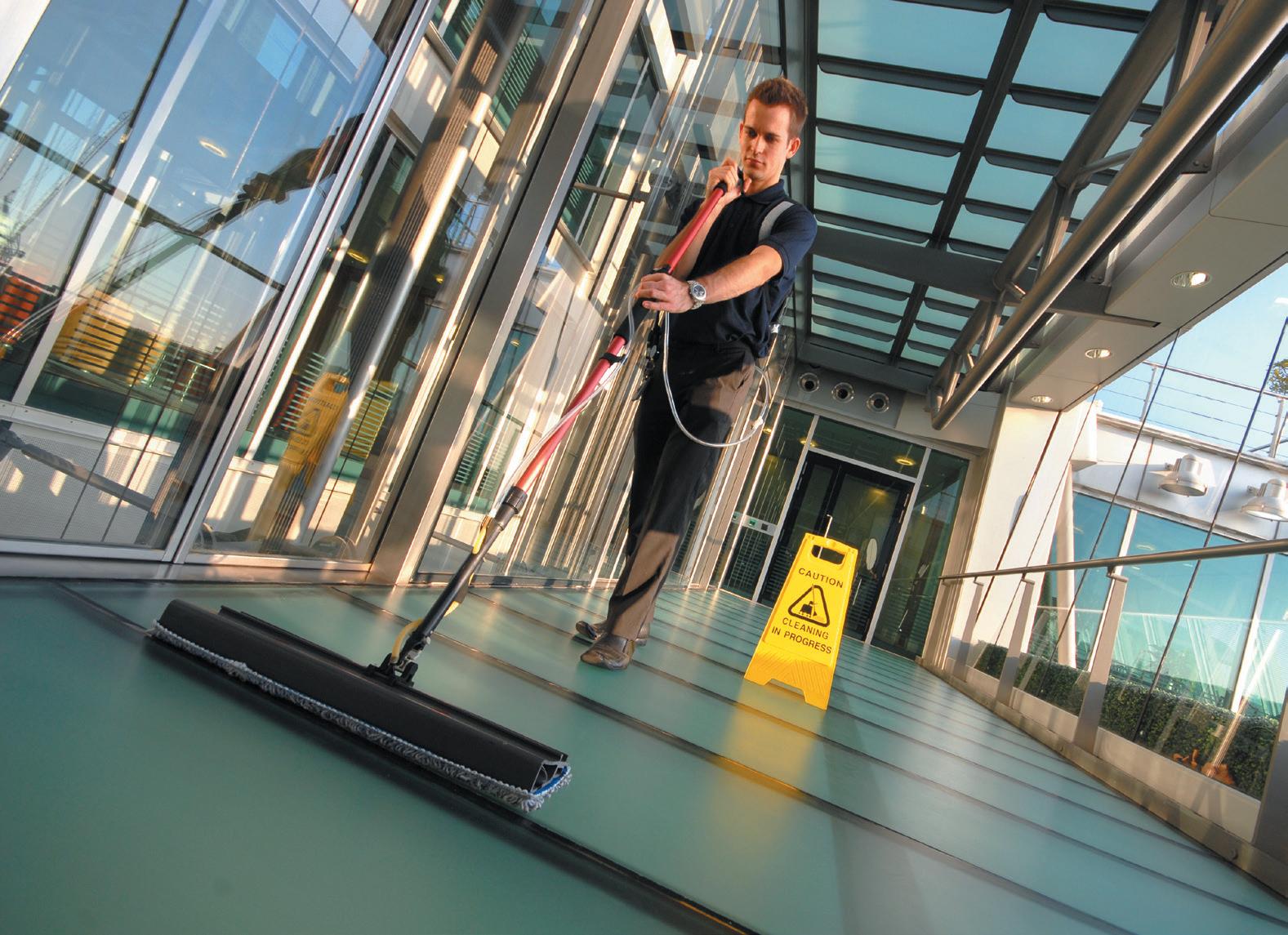
He adds: “Both companies are good at service delivery and are very customer centric operations, but were slightly di erent in their approach. OCS are very focused on their ‘net promoter score’ using audits and the feedback they get from customers, while Servest has been more of an entrepreneurial type business, very hands on, very involved with customers and looking at what we can do better for the customer base.
“Both approaches work well and I think that in bringing the two together it fills in the gaps and we can use the best of both to create something very innovativeo ering something with a fresh look and feel that di ers from our competitors.”
In terms of sectors OCS already has a huge presence in the public sector, where it already has a lot of business in central government and Legge believes that will only grow under the new brand. The same goes for health care and transportation, including aviation, transportation, distribution, warehousing and online deliveries.
The customer reaction so far has been positive reports Legge. “Most see it as an opportunity for us to o er more services and do things more e iciently
while the public sector appreciates the opportunity for us to take on larger government contracts as we can now o er additional services and support them better.”
The new brand will be rolled out by around the end of this summer with a new website, emails and brand guidelines. Legge also explains that a wide scale internal survey was carried out within both organisations to determine the values of the new group. They came up with TRUE, which stands for:
He says: “I’ve been around this industry a long time and these values are true to our heart and rememberable. We want our people to be proud of the brand and be a champion of its principles.”
With this in mind diversity and inclusion
is an area he’s very focused on and aims to develop even further. The group has invested heavily in HR with the recruitment of a high-level HR person to drive cultural changes within the business.
Explains Legge: “We want to start developing and growing our people, with talent management, succession planning, and giving opportunities to people within the organisation, so they can see their way up from the ground floor including opportunities to grow and develop through leadership programmes.

“I don’t want people leaving this group to go to a competitor. I want them to grow within this organisation, and I want us to be the employer of choice with people wanting to come and work for this organisation.
“This approach is also about our customers, as we don’t want to lose them due to bad service. I like what OCS has done with its net customer score where they operate an interview once a year to score performance so we’ll roll this out across the whole group as a di erentiator between our competitors, and help ensure we are focusing on our people and our clients.”
ESG is also something they are also focusing on now, with the creation of an ESG team within the combined organisation that will look at its own ESG credentials as well as o ering a service to customers,
The rationale behind the merger was that both businesses are already well known in the industry, both powerhouses in their own right, but were complementary as we [Servest] didn’t come up against OCS very often in the market”.
which includes for example advice on achieving net zero.
As Legge explains OCS had already done a lot of work on enhancing its KPI programme by using dashboards, something the new group will adopt and there will be a heavy investment in an IT programme which is being supported by CD&R who can o er advice on roll out.
Says Legge: “The new tech will enable us to be able to track a lot more of the data both internally to help our own processes and systems and also if customers ask us for the data we can give it to them in a format they can use and is meaningful.

“Everyone talks about tech but you need to do something with it, so we want to focus on how we’re going to enable our technology o erings to help our customers become more e icient, and how it can help them with cost. The rationale is if we can be more e icient as a business we can be more cost e ective in terms of the services we provide and more innovative in some of the products we provide.”
Looking at the main challenges for the FM sector Legge is conscious of costs going up but acknowledges there is only so much FM providers can pass through to their customers. He believes it all comes back to
doing things di erently, with the better use of data, IoT, and robotics.
Says Legge: “We’re working as hard as we can to come up with new ideas and solutions and better ways of working. It all comes back to what does the customer want at the end of the day and ensuring that what we o er is fit for purpose.”
“In hard FM, building management tools have evolved which can track assets so whereas a few years ago engineers would have to go out and check everything – now they only go out to make checks if the system tells them to. What we need to do now is work out as an industry how to use that in cleaning, as it’s so people orientated it’s more complex.
“People cost a lot of money and with higher wage bills if the customers don’t want to pay for as many people, we need to determine how we can be more e icient on the ground.”
Looking to the future, Legge says he’s excited about the new challenge and points out that having been in the industry 27 years - this is the third big project he’s done. He sees it as an opportunity to not necessarily be the largest player but the best in class.
“I’ve people around me who are enthusiastic, excited about the future and want to create something in the market that is di erent, that is agile, that has a vision to drive through change and has customers that talk about us as not only a safe pair of hands but at the forefront of innovation.”
Ultimately explains Legge, the new look OCS wants to continue to working with customers as partners and evolve these relationships, “to help create a legacy for the future that moulds and changes how FM works”.
Of the two brands he acknowledges they are at once very di erent and yet very similar, and his job is to bring the passion and the drive to take the business to the next level. Given his previous successes there is not much doubt he can do that and he now has the resources and the right investors in place “whose culture is all about people”.
As he’s keen to point out: “Watch this space’ we’re moving very quickly and we’re on a mission to disrupt the market.”
I’ve people around me who are enthusiastic, excited about the future and want to create something in the market that is di erent, that is agile, that has a vision to drive through change and has customers that talk about us as not only a safe pair of hands but at the forefront of innovation.”
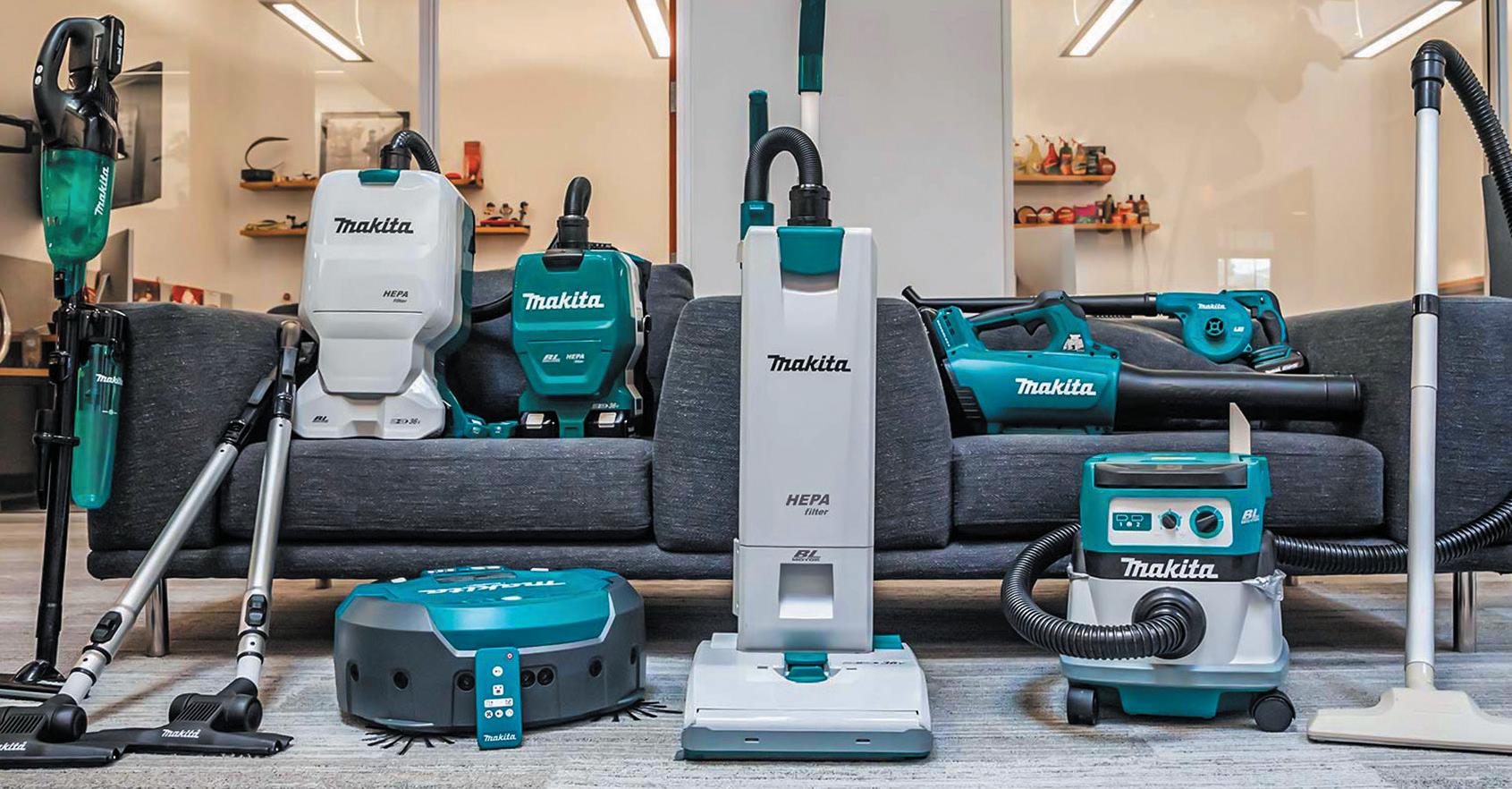


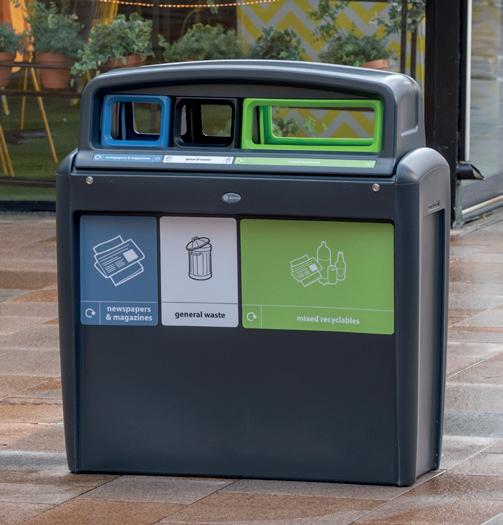

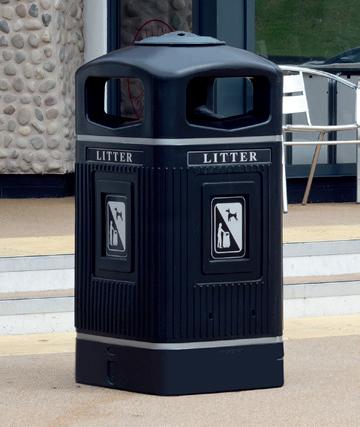
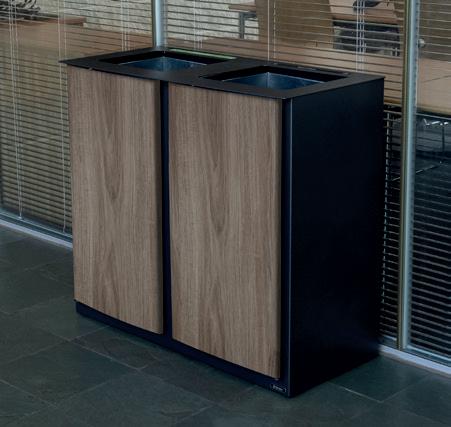


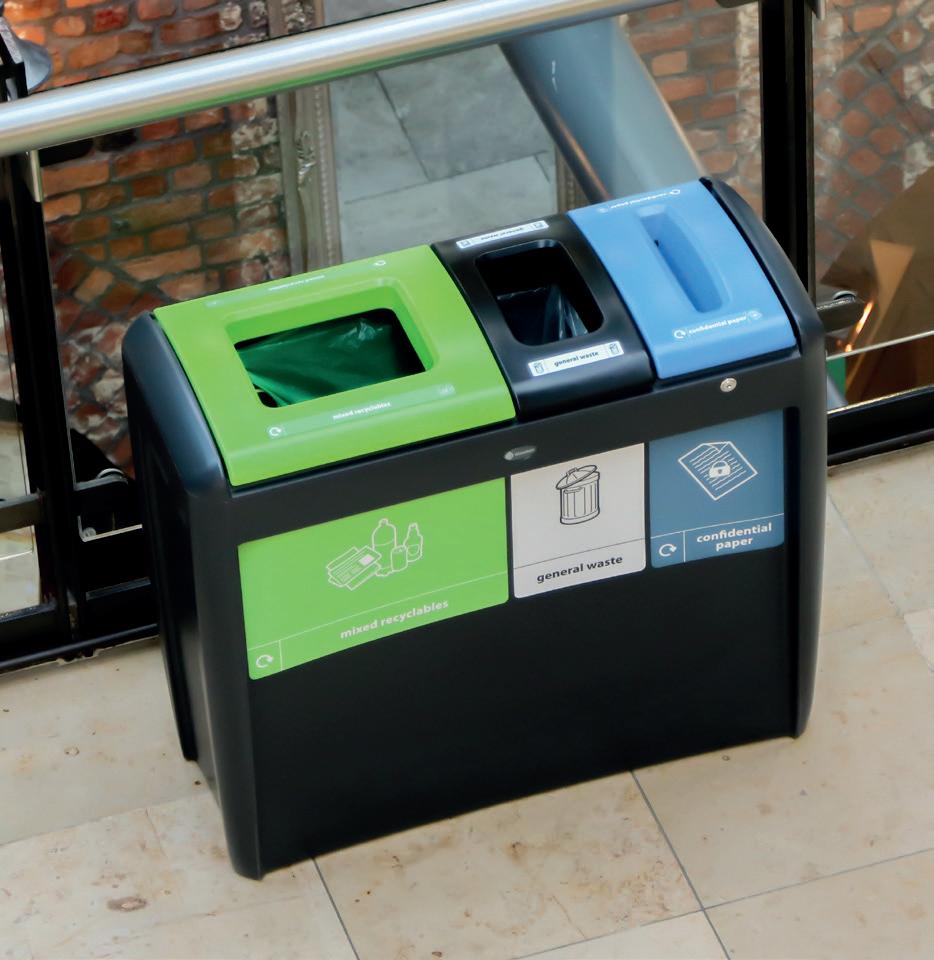
Facilities Management is on the front line when it comes to meeting the increasing demand for Social Value. The industry therefore needs to know how to generate, measure and report it as part of their day-to-day operations if they are to win work.
Gross spending on public sector procurement in the UK stands at around £379 billion, which suggests that there are significant growth opportunities for organisations of all shapes and sizes.
Of course, it’s a competitive space so those responsible for winning new contracts need to pursue every advantage and this can range from fundamentals such as ensuring compliance through to proving a thorough understanding of the tender’s needs and
pain points.
Thanks to almost a decade of working with those bidding for work as well as public sector procurement and specifiers, we have a unique perspective on what it takes to win new contracts.
Social Value is the thread that brings people and organisations together to collaborate on building flourishing and sustainable communities. This is done by making a commitment to improving circumstances for the people living and working in the area where a contract will be fulfilled.
The role of the FM has already evolved from e icient rent collection and environmental


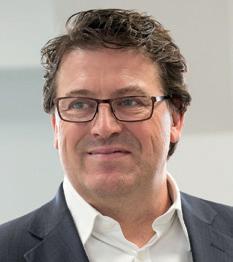

building performance to the active promotion of community engagement. On the whole, there is a solid understanding within the sector that a flourishing occupier and its community will lead to a more e ective business with a better performing asset. This is where Social Value fits - and it makes sense for the investor as a flourishing community leads to increased land prices, the asset goes up and FMs are fulfilling their fiduciary duty.
As a result, many FM organisations will already be delivering Social Value, but may not realise it - or know that it’s something that can be measured and reported.


The nationally recognised Social Value TOM system(i) (which stands for Themes, Outcomes and Measures) helps organisations

As an intrinsic part of ESG (Environmental, Social and Governance) demonstrating Social Value is increasingly a prerequisite in winning FM contracts. Guy Battle, CEO, Social Value Portal explains what a successful tender should look like
to work out the value of these initiatives in financial terms that buyers and other stakeholders will relate to. For instance, we calculate that employing someone who is long-term unemployed is worth around £20,000 in Social Value, 50 volunteering hours donated is around £846 and removing one tonne of carbon emissions is the equivalent of £244 in Social Value - all of which can be justifiably reported in a tender submission.
Build the foundations; If it isn’t already, now is the time to hard wire Social Value into your organisation from the top down, empowering the internal team to get involved and form a culture around doing good. It will also make writing the bid less arduous as the data and narrative will already be in place.
Understand the ask; It’s really important to do the research, studying the buyer’s organisation, their specific social and environmental priorities and policies and making sure that the information you include is directly relevant to your findings. Build a compelling story around that, make sure you can deliver on your promises and show how your offering is superior to the competition and you won’t go far wrong.
Plan well: Buyers will be looking for a well organised plan which stands out so outlining the structure of the Social Value initiatives in line with the measures provided is key. If they are not stipulated, use the Social Value TOM System as a framework - many public sector buyers are familiar with this system. Keep your delivery plan clear, providing details of who will be responsible, what the process for capturing Social Value will be and what reporting methods will be used and in what timescales.
Set relevant targets; The local benefit of Social Value initiatives will undoubtedly be critical to the requirements of the tender so setting targets that are relevant and clearly achievable is key. Check the unit of measurements that you will need to use, for example, if the question asks for the time spent on apprenticeships in weeks, use that specific unit. In our experience, conducting a Local Needs Analysis to identify what the area most needs is a useful means of ensuring that targets set are relevant for the project needs.
Demonstrate evidence; Buyers need to feel confident that each measure can be achieved so instilling confidence in the targets by providing detailed information on your Social Value proposition and aligning it with the buyer’s goals and objectives will provide reassurance that targets will be met. Wherever possible, demonstrate a strong track record by highlighting individual team member’s experience and expertise, offering case study stories of previous successes and demonstrating the positive
impact that your organisation has already made.
Show you are a pro; A well-paced document free from errors and brought to life with images and testimonials will demonstrate your organisation’s ability to get the job done. It’s worth considering ways of offering something innovative or unique, that goes above and beyond the core requirements - it could gain extra points for the submission.
One of our partners, leading engineering and environmental professional services firm WSP(ii) has been measuring, evaluating and reporting Social Value since 2020. The firm recently worked with Bristol City Council to provide multi-disciplinary support for new housing delivery across several sites. As part of the tender delivery, WSP identified an opportunity to support a local Housing Association and three VCSE’s by carrying out accessibility audits on their behalf.
This provided each organisation with a report that outlined opportunities for improvement. Recommendations included; requesting repairs and upgrades of approach routes and street furniture from the council, installing clearer wayfinding and providing clear access guidance.
Emily Binning, Director, Corporate ESG at WSP said: “Thinking local, having clarity on the priorities and desired outcomes, collaborating with others, and being creative in your approach are important factors when responding to Social Value questions in bids. Projects like the one in Bristol are essential to evidence the value WSP can bring to help clients deliver social value locally and improve people’s lives. It also helps inspire and educate individuals and teams to embed Social Value programmes in their projects too.
“Delivering clear and measurable benefits to the communities we serve is a cornerstone of WSP projects. With ESG becoming increasingly important to the commercial success of businesses within our sector and beyond, Social Value has moved from being a ‘nice-to-have’ to an immediate priority. For ESG strategies to be successful, it’s vital that Social Value threads through everything an organisation does and becomes an influencing factor on decision-making.”

(i) https://socialvalueportal.com/solutions/ national-toms/
(ii) www.wsp.com/en-gb
In addition, Gina Rudkin, who was recently appointed as Head of Sustainability and Zero Waste at Axil, will have a pivotal role as the Cummins contract continues to evolve. Reuse options for additional materials across Cummins are also being explored as Axil and CBRE continue to support ESG priorities at Cummins, which includes waste reduction methods and extracting materials to push it up the waste hierarchy.
Cummins’ next generation environmental sustainability strategy, ‘Planet 2050’ sets quantifiable goals for 2030 along with visionary longer-term aspirations to 2050. The suite of goals includes reducing absolute gas (GHG) emissions from facilities and operations by 50 per cent and a pledge to generate 25 per cent less waste in facilities and operations as a percent of revenue by 2030.
As part of the move to CBRE, nine employees moved over to Axil via TUPE transfer. During the process, Axil delivered additional training to operatives across the Cummins estate. Recognising the value on-site teams bring, operatives received compliant segregation training to enable them to achieve further increases in recycling which in turn reduce waste costs. Forkli and IOSH training have also been provided to key members of Axil’s on-site waste teams.
Cummins, a global leader in the design, manufacture and supply of engines, generators, and related technologies, previously partnered with Axil Integrated Services to manage its waste streams and maximise its recycling. In August 2022, Cummins embedded its waste contract into a facilities management package to consolidate services across multiple UK sites and CBRE was appointed as the new IFM provider.
Axil had previously helped Cummins to maintain its zero-to-landfill target at its Stamford and Darlington sites and delivered savings through improved waste segregation and increased recycling. Cummins nominated Axil as a preferred waste partner during the IFM tender process and it was retained to deliver the waste management contract across the Cummins estate.
The partnership, which now includes CBRE, continues to strengthen its environmental strategy. Working under CBRE, Axil delivered additional training to its waste operatives to help identify and further segregate recyclable materials from process waste. This additional layer of segregation now captures an additional two tonnes of recyclates per month, lowering the sites general waste disposal. CBRE and Cummins also benefit from Axil’s unique HazPod™ system. This innovative system facilitates storage of multiple hazardous waste streams in one bin unit, providing individual materials are
appropriately bagged. The introduction of HazPods has removed reliance on drums and intermediate bulk containers, which frees up storage capacity on sites, and ensures a safer and more compliant storage solution for hazardous waste.
Sam Lawes, FM Commercial Manager at Axil explains: “The addition of CBRE into the partnership adds an additional layer. Both CBRE and Cummins challenge Axil to get the best results. Between Axil and CBRE, we’re able to make compliant wasterelated decisions on behalf of the customer, allowing Cummins to focus on their core business function.”
Granular sortation and segregation of raw materials has been employed to help move waste up the hierarchy and at Cummins Darlington, additional training and diligent segregation methods have been deployed to ensure waste avoidance by identifying parts for reuse in the engine production process.

Metal segregation has also improved, with Cummins benefitting from supply chain management and increased rebates.
Cummins also has access to a dedicated Axil waste Contract Manager whose primary focus is delivering against its environmental and commercial targets. Axil works with CBRE to meet ESG goals set by Cummins, as well as delivering long-term and sustainable cost benefits.
Axil and CBRE attend quarterly meetings with Cummins to measure performance against core production metrics. Axil also provides a suite of management information reporting, including labour e iciencies, waste captured, recycling rates and health and safety. Continuous improvement ideas are also discussed.
Bespoke reporting so ware enables CBRE to track waste costs against production output on behalf of Cummins, important for future forecasting and continuous improvement planning. Regular reviews are also carried out on the market on transport routes and waste destinations, and the flexibility in this space allows Axil and CBRE to move quickly at the appropriate time to drives out costs for the client and generate additional income in terms of commodity rebates.
Says Antony Ferdinand, Account Director, CBRE: “Since our relationship has started, CBRE has been very impressed with the level of data available at our fingertips, and the pro-activeness Axil show in delivering their services.
“We’re extremely encouraged by this start and look forward to our relationship with Axil developing over time on the Cummins accounts.”
Future innovations for the partnership will include introducing additional equipment to sites to make waste processes even more e icient. Reviews are also underway to upgrade existing equipment to more robust versions to process materials faster with less labour input. A new roll packer for wood compaction will be introduced to maximise volume capacity on site, reduce transport costs and deliver significant savings to Cummins.
Global FM provider CBRE has partnered with Axil Integrated Services to deliver best-in-class waste management to Cummins to help them meet their ESG goals






























In2018, it was revealed that ‘poor signage’ hindered rescue e orts at the Grenfell Tower fire in North London. Statements from members of the on-site emergency response team reported that navigating such a complex structure, without appropriate or clear signage, ultimately prevented them from carrying out their duties in full.
Since the findings of the ongoing inquiry were revealed, a recommendation in the Fire Safety Order was made that signage in multi-occupied high-rise residential buildings (over 11 metres high) now be a legal requirement in order to keep emergency services and residents safe.
As well as reminding us of the importance of clear, well-positioned signage, this regulation will, ultimately work to keep people safe in case of future disasters.
Health and safety measures have always been stringent in the UK, but there have been some gaps in legislation. In most cases, health and safety signage is fundamental to ensuring that - should a disaster strike - responders are able to help businesses and people act to prevent harm and save lives.

We know that safety is any property and facilities managers’ top priority, particularly in the context of high-rise buildings, but the added costs to design and install signage, then later update it, can be o -putting.
There’s also the feedback from tenants, many of whom don’t want extra signage dotting their hallways and stairwells - this is a challenge that our network says happens most frequently in premium developments.

And, above all, there’s a grey area with regards to whose responsibility
it is to ensure a space remains compliant and fundamentally, safe.
This new regulation clears up those grey areas by assigning responsibility to one nominated individual in the building’s organisation. Their role is to personally ensure that a high-rise building remains compliant; any failings associated with that could result in heavy fines and at the very worst, prosecution. It also gives property and facilities managers the impetus to challenge residents who are opposed to more signage – o en one of the greatest sources of disputes in commercial property leases.
We’ve seen a dramatic shi in attitudes towards directional and health and safety signage, not only since the Grenfell inquiry, but since the pandemic where health and safety signage has been invaluable. No longer was health and safety signage only restricted to settings like healthcare or building sites, it was everywhere you looked.
Floor decals, which were only really ever seen in theme parks and entertainment venues became commonplace. There was also signage on PPE, hand-washing and food handling guidelines, as well as social distancing signage to block o seating or walkways.
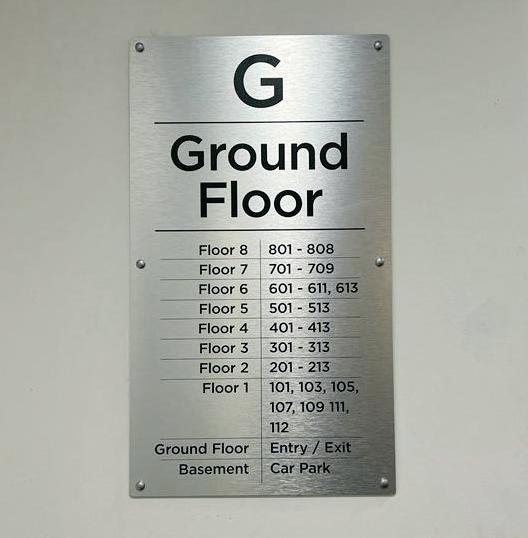
Digital signage in particular - a market that has seen exponential growth since 2021, likely as a result of the pandemic - also gave businesses a lifeline to continue working. The ability to provide real-time information, o -site, enabled many organisations in the UK to continue operating, while keeping sta safe.

I’m predicting – in light of the Fire Safety Order regulation, in response to the Grenfell inquiry - that this perception is set to remain.
Some argue that, as a society, we’ve become numb to signage since we’ve emerged from the pandemic. But, I believe, looking through a less nervous lens, that it’s made us more conscientious. It’s given us more understanding of the role that signage can play in our everyday lives.
Since the introduction of the regulation, we’ve heard that many of our franchisees have been called out to survey dozens of buildings. Our teams have visited businesses in previous months where little to no signage has been on display, so this outreach is already a huge step. This latest regulation will, hopefully, ensure that property and facilities managers are more aware of their responsibilities.
It’s not just the property or facilities management sectors that this a ects.
The report that was released as part of the regulation can be used as a guide for best practice for a number of industries, whether or not it’s a legal requirement.
Take the education industry, and the running of monthly fire drills, for example. The logistics of that would be no easy task to manage – the person responsible would have to take care of teaching sta and communicate with hundreds of
pupils, while not forgetting the scale of some school sites and the di ering ages of those pupils. If the worst was to happen, this emergency would call for clear and easy-to-understand signage, to help those responsible make timely and informed decisions.
For me, no matter what perspective you look at this from, news of this regulation can only be seen as a positive step in the right direction. Safety is something that should never be taken for granted, and signage –with the right help at your disposal – can be a simple and preventative solution to keeping your teams, and those around you, out of harm’s way.
Changes to wayfinding signage regulations are a step towards taking H&S signage more seriously says John Davies, Managing Director at FASTSIGNS UK

Kleen-Tex, one of the world’s leading floor mat manufacturers, has bolstered its high-performance Iron Horse matting range with the launch of Iron Horse Light to provide professionals with a coste ective yet e icient solution for commercial applications.
Preventing dirt and moisture from being tracked into a building, the mat provides superior dirt catching capabilities and is suitable for installation throughout building entrances, receptions, hallways and elevator lobbies.

Featuring a slimline, slip-resistant nitrile rubber backing, Iron Horse Light delivers the same high standards of performance the Iron Horse range is renowned for, without requiring industrial washing cycles.
Washable up to 40°C and suitable for tumble drying, the PVC-free matting system is tested to EN 13501-1 and is NFSI High-Traction certified. The floor mat is also light and colour fast and is supplied with a two year manufacturer's guarantee.
Manufactured in Europe in sizes ranging from 60 x 85cm to 115 x 175cm, Iron Horse Light is constructed of high twist nylon and is available in a range of colours to meet specific design requirements, including black mink, black brown, granite, midnight grey and black steel.
Lee Fox, Director of Global Business Developmentwww.kleen-tex.co.uk
and Key Accounts for Kleen-Tex, said: “The launch of our new Iron Horse Light matting system provides professionals with the same high standards of dirt and moisture capture as our Iron Horse range, without the requirement for industrial laundry servicing.
“This enables owners and managers who are responsible for the maintenance of commercial buildings to maximise their cleaning budgets in the most e icient way, without compromising on safety or cleanliness, as they can rest assured Iron Horse Light prevents dirt and moisture from being tracked throughout their building.”
The extension of the Iron Horse range forms part of Kleen-Tex’s long term commitment to providing professionals with innovative high performance mats that deliver both style and substance.
For more information about the new range, visit https://www.kleen-tex.co.uk/products/allproducts/iron-horse-light/
info@kleen-tex.co.uk
When technology and design meet sustainability
ELCOMAN is proud to announce the launch of its KOBRA WASTEE in the UK, a unique, elegant and aesthetically beautiful advanced waste sorting modular system. Designed to make the recycling experience pleasant and enjoyable, the KOBRA WASTEE project originates from the belief that technology and design must meet the challenge of sustainability, so that aesthetically beautiful and elegant products have to be ecological as well as functional.
Watch the video https://youtu.be/ fvHqjoHsyVk
Designed and Made in Italy with 100% recyclable, robust material, the elegant, minimalist and modern design of KOBRA WASTEE, allows its placement in any location: ideal to create ecological islands in the o ice, in contemporary commercial areas and public spaces. Perfect for properly disposing, recycling and organising separate waste collection.

The space-saving modules, available in di erent



www.wastee.it kobra@kobra.com
colours to quickly identify how to separate the di erent types of waste according to UK standards, remain always well aligned with the patented magnet systems for easy joining and alignment of the bins to each other.
KOBRA WASTEE bins combined together can be considered as furnishings elements, to be shown and not hidden! Easy to clean: the lids and outer shell have an attractive glossy ivorywhite finish with a quick and easy system to change the full bag: tilting opening of the lid.
KOBRA WASTEE is available in the UK.


P&G Professional is expanding its range of products with four new Lenor Professional Fabric Conditioner scents. Aimed at the hospitality sector, the new and improved Lenor Professional is designed to freshen and protect linen with a super concentrated formula. Lenor Professional’s new range contains innovative technologies to condition table linens, sheets and pillows with plant-based so ening micro fibres, to protect from wear and tear and make them longer lasting. The four classic fragrances come in Sea Breeze, Summer Breeze, Lavender and Lily Breeze featuring mild clean floral and citrus scents for longer lasting freshness, as well as an hypoallergenic variety which is dermatologically tested to be suitable for sensitive skin.
Lack of so ness and freshness on towels and linens is the toughest tension point for Professionals, and a potential barrier for delivering the best experience to their guests. At a time where businesses look to tighten purse strings, the range provides a 5-star guest experience for less than 4p per wash. Hospitality and food service businesses can lower laundry costs without sacrificing excellent service and provide guests with a memorable experience. Available at most major distributors.
www.pgpro.co.uk
2N, the global market leader in internet-enabled intercoms and access control systems, has published a new White Paper entitled ‘Access Control 3.0: the new standards in residential access’. The White Paper argues that we recently entered a new era in access control which represents a technological revolution in the industry – and it is one which is already having a transformative impact worldwide.
Over the last 6,000+ years, access control has progressed through three crucial stages: The first access control revolution, Access Control 1.0, was inaugurated by the earliest lock and key devices. The oldest we know of was found in the ruins of Nineveh, the capital of Assyria, and is from around 4,000 BCE. Access 2.0 began when Charles Walton, an American inventor, received the first US patent for a passive RFID device, which enabled key cards and enhanced the security of door-locking systems.
The third access control revolution, Access Control 3.0, is characterised by seven pillars: IP technology - Mobile access - Multi-user technology - Remote management - Cybersecurity - ESG - Privacy and the protection of personal data 2N’s white paper is available here: https://bit.ly/3Hfdpj1
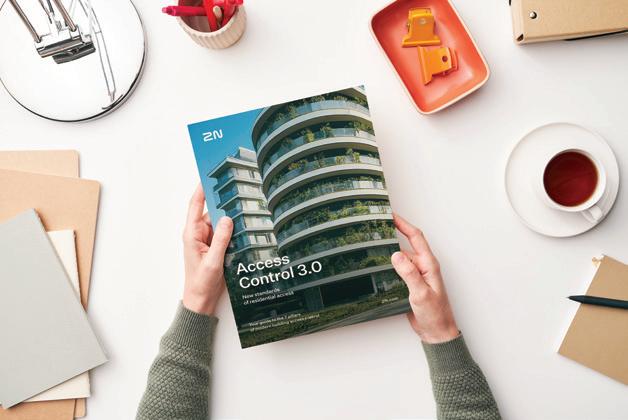
https://www.2n.com/en_GB/
Strand Hardware has made its mark – completing UKCA compliancy more than a year ahead of the new deadline.


It completed certifications for all its Panic Hardware product ranges – 290 products in total – at the end of last year, in preparation for the original deadline. The original deadline was intended to be 1 January 2023 but the Government announced an extension as many companies were simply not ready.
The new requirement is compulsory for products which fall within the scope of a ‘harmonised/designated standard’ being made available for sale in the UK. They can continue to be CE marked until 30 June 2025 under a 'presumption of conformity'.
Strand Hardware Operations Director Jo Walls said that she was delighted that Strand was fully prepared and had made the transition ahead of schedule.
“We completed our requirements towards the end of last year. We are ready! and have everything in place for the new deadline and have begun to mark our products with the required UKCA markings. Our Declaration of Performance (DOPs), fitting instructions, labelling and certification have all been completed and the DoPs are available on our website for download.”
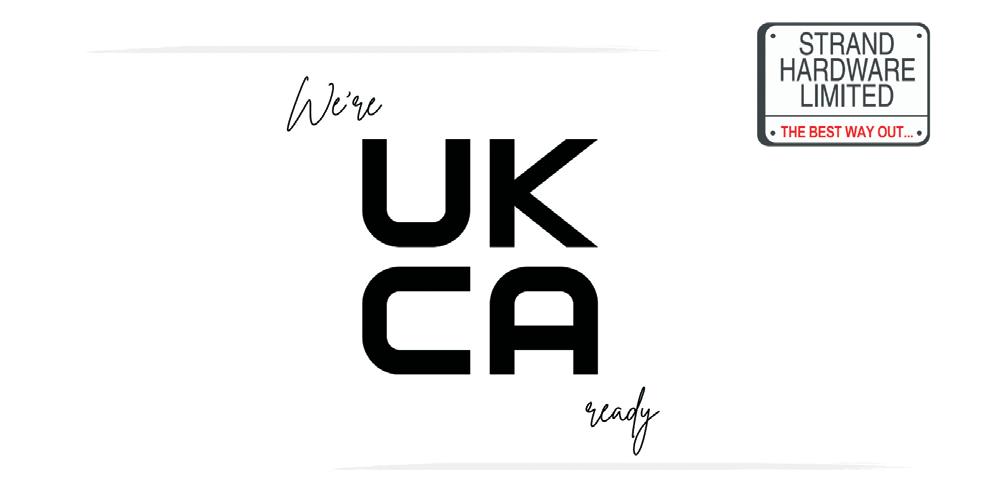
www.strandhardware.co.uk info@strandhardware.co.uk 01922
The UK’s No1 eco-cleaning chemical brand, Delphis Eco, has partnered with The Cra Guild of Chefs as The Guild’s ‘go to’ cleaning products of choice.
The Guild will be using Delphis Eco’s non-toxic cleaning products at the four of the major competitions it runs throughout the year, including Graduate Awards, The British Culinary Championships (replacing Wessex Salon Culinaire) and Skills for Chefs.

Representing best practice in sustainable hygiene, Delphis Eco’s products are plant-based, vegan, bio-degradable and non-harmful to users and the environment, yet incredibly powerful and e ective.
Delphis Eco will also be supplying a hamper of goodies for winners of each of The Guild’s competitions – recognising the overall hygiene winner – in addition to sponsoring Chef’s jackets for The Guild’s contests.
Andrew Green, CEO of the Cra Guild of Chefs, said: “Spotless hygiene is a vital part of what chefs are taught today. Consumers demand and expect the highest standards, and rightly so.
“We’re delighted to partner with Delphis Eco which mirrors our values for ‘clean yet green’ as operators move towards ecologically kind products that also have strong e icacy.
“And we have a lot of synergies. What may not be commonly known, is that Delphis products are Royal warrant holders supplying two Royal households as well as winning the Queens Award for Enterprise for Sustainable Development last year. The products are truly excellent.”
https://delphiseco.com
info@delphiseco.com


Facilities Management (FM) companies have a responsibility to comply with various laws and regulations regarding the properties they manage. Section 111 of the Water Industry Act 1991 is one such regulation that directs FM companies to prevent water pollution from their properties. This requires them to ensure that water discharge from sites such as car parks, industrial units, and commercial premises does not cause pollution. Failure to comply with this regulation can result in fines, legal action, and reputational damage.
Here are some steps FM companies can take to comply with Section 111:
Conduct an Asset Map – conducting an asset or drain map is crucial to identify the location of drains beneath the site, their size, directional flow, and the type of liquid they carry. This map can help to identify where the drains are and where they discharge to, which provides you with essential insight for preventing water pollution and flooding.
Car Park Maintenance – FM companies should focus on car park maintenance, including
interceptors, car park gullies, and ACO drain channels. These measures can help prevent pollution from car parks by catching oil and sediment before it enters the drain. Regular maintenance is necessary to ensure that they work effectively, in particular, interceptors and car park gullies should be emptied and maintained at least twice a year to prevent the risk of flooding and water pollution.
Grease Management – Each commercial property that produces hot food should have a grease trap in place, and a plan to maintain the equipment. Typically, grease traps should be emptied every one to three months. Failure to empty grease traps and maintain the equipment can lead to sinks not draining, grease discharging into the water course and disruption to commercial kitchens.
Sewage Pump Station Maintenance – Sewage pumps play an important role in compliance with section 111 by collecting and pumping sewage and other wastewater to treatment facilities
www.metrorod.co.uk
and mainline sewers, preventing it from entering rivers, streams and other watercourses. Failure to maintain the pumps can lead to overflowing waste and expensive repairs. Worryingly more than 75% of businesses don’t get their pump station serviced at least once every six months*.
FM companies must take essential steps to comply with Section 111 of the Water Industry Act 1991 and other regulations. Failure to do so puts the environment at risk and the company at risk of fines, legal action and damaged reputation. Metro Rod has developed a pollution prevention plan to help FM companies understand their responsibilities, download the free whitepaper www.metrorod. co.uk/pollution-control-and-prevention to find out more.
Metro Rod can support FM companies in implementing measures from asset mapping and car park maintenance to grease management and pump station maintenance. Providing all services under one roof with national coverage and over 500 engineers who are available within an hour’s drive of 85% of commercial properties in the UK.
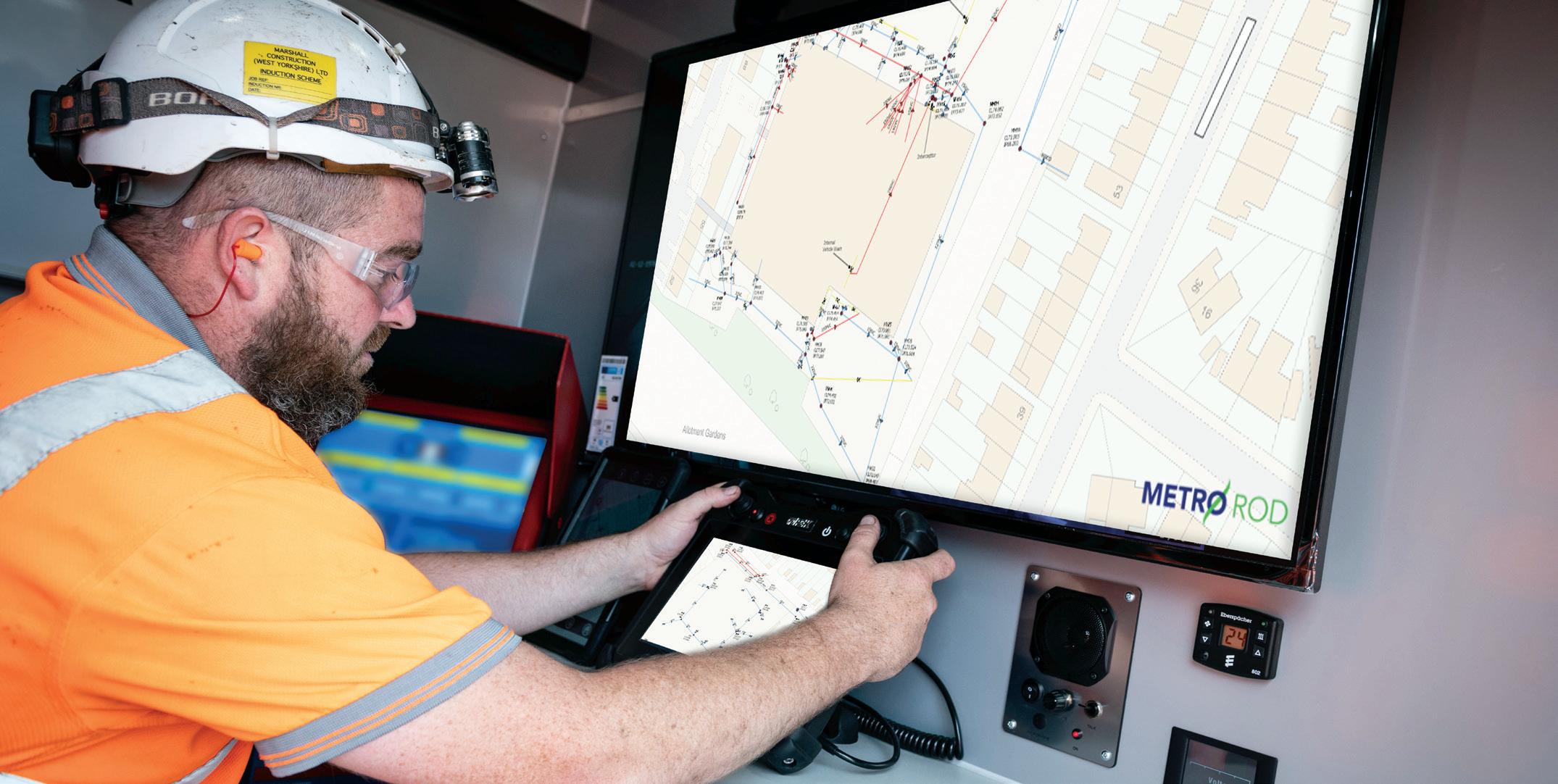
For more information on improving and maintaining your drainage system, visit www.metrorod.co.uk
*based on research carried out by Metro Rod in June 2022.
Leading mobile refrigeration specialist, Team Refrigeration, is pleased to announce the opening of its new depot in Milton Keynes at the beginning of May 2023. The company supports a wide range of customers with their emergency and planned refrigeration needs. This new depot will enhance the company's existing UK-wide coverage and provide improved support to customers in the London, Home Counties, Birmingham and East Anglia region.
5 Star Google rated Team Refrigeration has invested in a further 15 new trailers at the Milton Keynes site to deliver a quicker, more responsive service. They aim to provide mobile refrigeration to anywhere in mainland UK within 4

hours, subject to availability, "Team Refrigeration is thrilled to be expanding our

www.teamrefrigeration.co.uk
operations with the opening of our new depot in Milton Keynes," said Tom Holloway, Leader of Team Refrigeration. "We understand the devastating impact it can have for a restaurant or pub if their fridge or freezer malfunctions, they have to close and can potentially lose valuable stock. We do our best to get emergency back-up equipment out to them as quickly as possible. This new facility will allow us to better serve our existing customers, while also expanding our reach to new clients."
The new depot is part of Team Refrigeration's ongoing commitment to providing excellent customer service. With a reputation for quality and reliability, Team Refrigeration is confident that the new depot will be a valuable addition to the company’s network.
Leafield Environmental, the UK’s leading manufacturer and designer of plastic bins are delighted to launch the Heritage Square Recycling Bin in two sizes to collect mixed recyclables in high footfall areas including high-streets, parks, leisure attractions and seaside resorts.
The Heritage Square recycling bin is available as a 110-litre unit or 240-litre unit and was designed following customer demand for an external recycling bin in keeping with their existing traditionally styled Leafield Heritage litter bins. The standard unit comes in black with gold banding and features 4x WRAP compliant lime green mixed recycling labels and lime green propeller shaped aperture insert to collect a wide variety of mixed recycling waste. The black units are made from up to 100% recycled plastic.
The Heritage Square XL recycling bin features a 240-litre wheelie bin, and the Heritage Square 110-litre bin features a 110-litre steel liner. Both units have a 4-way aperture providing all round access in high footfall areas. The bins are manufactured with an enhanced double wall structure for ultimate rigidity and durability, making it suitable for coastal environments. Designed with an anti-fly poster ribbed surface to deter fly posting and curved hood to prevent waste being le on the top of the bin. The Heritage Square XL has a slam shut door with multi point lock and the Heritage Square 110-litre has a diagonal hinged door for easy access and no li ing is required.
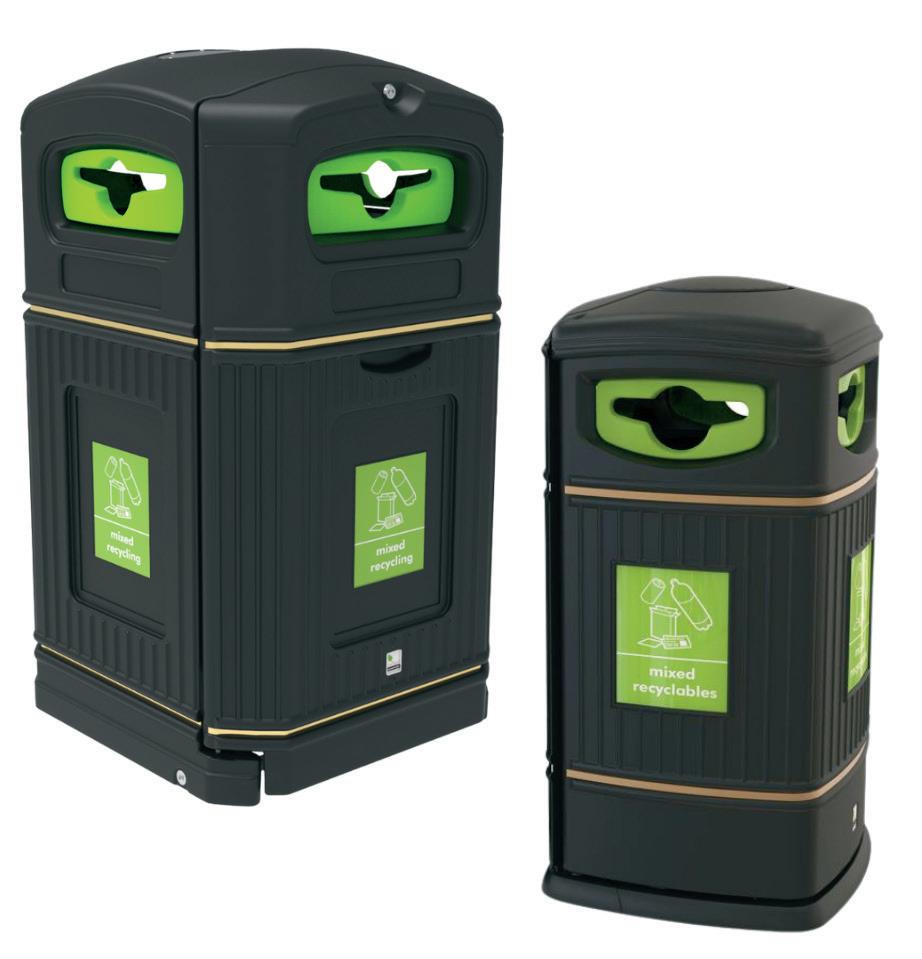

MRI So ware is calling on facilities managers to share their opinions on the future of the industry at this year’s Facilities Show, whilst showcasing a host of new technologies designed to help FM professionals gain a competitive edge.
The so ware company will be inviting responses to its Voice of the Facilities Manager survey at its stand at The Facilities Show, gathering insights and opinions on a range of topics, from the challenges FM professionals face to the approaches and technologies they rely on to achieve their objectives in an increasingly competitive space.

“It is key to our success, and therefore the success of our customers, that we make sure we and our products remain not only relevant but also truly enabling – if we don’t give a voice to customers then we become a closed shop which is certainly not what we want to be,” explained James Massey, Managing Director for Facilities Management at MRI So ware.
“The pressures we are seeing across the sector are becoming more and more common. The cost focus is one of the key factors we are presented with - our investment into digitally-driven maintenance this year aims to drive e iciencies where they can be recognised whilst ensuing compliance and quality are never adversely a ected.”
As well as gathering insights from FM professionals, MRI So ware will be showcasing its MRI Evolution facilities management solution, o ering visitors the opportunity to demo newlylaunched FM technology features designed to help facilities teams thrive in the face of a changing industry landscape.
Major new solutions include the MRI @yourService customer engagement app, which streamlines communication between FM teams and end users whilst reducing pressure on helpdesk teams and lowering overheads, and the IoT hub, the first solutions-oriented IoT product which integrates seamlessly with MRI’s CAFM solution to deliver improved monitoring across assets and properties.
“We are here to showcase the last 12 months of development since the last Facilities Show,” explained James Massey. “We’re excited to launch our integrated energy management and footfall tracking solutions and to talk about how we see these being truly game-changing for the FM sector.”
With over five decades’ experience in the real estate industry, MRI So ware’s pioneering solutions transform the way communities live, work, and play through its open and connected platform. MRI Evolution o ers a suite of powerful features that support the implementation of a comprehensive
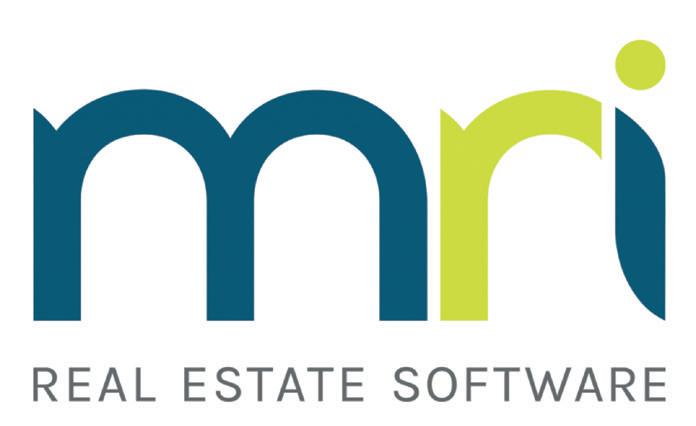
building and workplace management strategy.
At The Facilities Show, visitors will be able to see MRI Evolution’s latest modules in action, and to speak with MRI So ware’s team of industry experts about building an open and connected technology stack that’s tailored to their industry vertical and individual requirements.
“We understand that the FM landscape is a competitive sector for service providers. To succeed, organisations need to be ready to take advantage of the latest technology to gain a competitive edge,” said Karl Broom, Senior Manager for Facilities Management at MRI So ware. “We’re o ering four di erent demonstration stations so visitors can see how our systems could support them in real-life scenarios, from using mobile technology to enhance end-user engagement and customer satisfaction to introducing best-in-class task and asset management to streamline operations. They can also discover how the IoT hub is impacting the changing landscape in maintenance delivery.”
Jon Clark, Sales Manager for Occupier FM Solutions at MRI So ware, said: “Together with

www.mriso ware.com
MRI’s energy management solution, MRI Evolution provides a connected platform to manage all your FM activities and take control of your consumption and energy spend under one integrated solution. Come and talk to us and explore the art of the possible.”
MRI So ware’s Voice of the Facilities Manager report will be published later this year. MRI So ware will be exhibiting at The Facilities Show 2023 at stand FM 4060.
You can also complete the survey here https://www.surveymonkey.co.uk/r/mri


A new range consisting of three products –the result of a collaboration between Tork manufacturer Essity and Dettol manufacturer Reckitt – is now available in the UK and Ireland professional hygiene market.
Tork Dettol Antibacterial Multipurpose Cleaner Spray, Dettol Tork Antimicrobial Foam Soap and Dettol Tork Hand Sanitiser Gel are all suitable to meet elevated hygiene demands in hospitality venues and o ices.
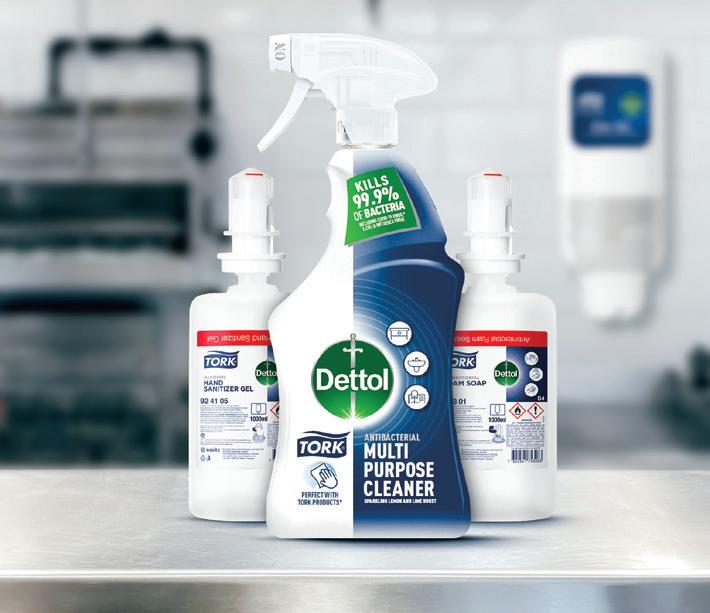
The co-branded disinfection products o er a ra of benefits for the customer. “These highly e ective solutions can help to prevent the spread of bacteria and have been proven to kill 99.9 per cent of enveloped viruses including COVID-19 virus,” said Nathan Titheridge, Commercial DirectorEssity Professional Hygiene UK & Ireland. “We use standard-setting science to develop business hygiene solutions and o er the training that customers need to implement them.
“Using Tork and Dettol products gives customers assurance that they are employing hygiene solutions from leading brands.”
Tork Dettol Antibacterial Multipurpose Cleaner Spray is suitable for use in environments such as o ices,
hospitality venues and general public spaces.It can be applied to surfaces such as kitchen surfaces, draining boards, shower screens, cooker hob, bins, bath and taps, sink, floors and toilet seats. The bleach-free formulation can also be used on food preparation surfaces where it will cut through grease, burnt-on food and kitchen dirt.
EN 1499-certified Dettol Tork Antimicrobial Foam Soap is highly e ective against bacteria, viruses and
yeasts and is perfume and colour-free which reduces the risk of allergic reactions. Dettol Tork Alcohol Hand Sanitiser Gel conforms to EN1500 and EN14476 standards and contains moisturising ingredients to encourage good hand hygiene behaviours.
Both these two formulations come in sealed cartridges with a single-use pump for maximum hygiene, operating through Tork S4 dispensers which are certified e ortless refilling in less than 10 seconds and designed to be particularly easy to use, even for people with low hand strength and are available with sensor options.
“In the a ermath of COVID-19, hygiene expectations from the public have shi ed dramatically as people return to day-to-day public life with a heightened awareness about the spread of bacteria and viruses. Recognising the need for reassurance, a co-branded customer communication kit providing highly visible messaging is available to give your visitors and employees confidence in your hygiene e orts,” said Nathan. “These products provide customers with an expanded assortment of solutions that are critical in helping prevent the spread of germs.”
www.tork.co.uk/torkcampaigns/dettol-hygienesolutions/

Northwood Hygiene Products Ltd has announced a partnership with Trees for Cities –the only UK charity to plant trees in towns and cities to help improve people’s lives in the UK and around the world.
The move by Northwood – the leading manufacturer and supplier of away-from-home (AfH) professional paper hygiene and wiping products – has further strengthened its commitment to the environmental agenda.
Under the partnership, Northwood will donate funds for trees to be planted in urban areas when customers sign up to install North Shore or Raphael dispensers. The firm hopes to plant up to 500 trees this year under the scheme, which aims to make a social and environmental impact by engaging local residents to plant trees and bring the multiple benefits of urban trees into their community spaces.
Trees for Cities has planted more than 1.5 million trees since it was established in 1993 and the charity engaged with some 24,000 pupils in its school programme in 2022 alone.


Paul Mulready, Marketing Manager at Northwood, says: “We’re aiming to make sustainability
second nature in our business. As a responsible manufacturer, it is important for us to do everything we can to minimise our impact on the environment and work towards improving the environment for local communities.
“Sustainability is a hugely important issue right now and trees are a vital part of our environment. They are critical for our biodiversity, playing an essential role in our collective goal to become carbon neutral by helping to o -set emissions that can’t be reduced by other means. We have an ambitious target to plant 500 trees this year and we hope that this project will bring communities closer
www.northwood.co.uk
by contributing to good physical and mental health and helping to support the regeneration of nature.”
Rory Field, Corporate Partnership Director at Trees for Cities, added: "Trees for Cities is proud to partner with Northwood Hygiene Products. Trees are important for our mental and physical health, as well as for the health of our planet. This partnership between the two organisations creates a great synergy."
Northwood’s partnership with Trees for Cities is part of the firm’s wider sustainability strategy, which embraces a circular economy.
Good quality CAFM so ware enables you to manage your Property, Estates and Facilities amazingly, despite increases in demand and challenging budgets. Ensure you are using your CAFM to its full potential with this guide from CAFM experts 3i Studio Ltd, highlighting the features you should have available to you.
The Importance of Sustainability in Facilities Management
CAFM, or Computer Aided Facilities Management so ware, has come on in leaps and bounds in recent years; enabling Estates and Facilities Managers, as well as their teams and contractors, to manage their property and work e iciently and more easily. Key features you should now be benefiting from with your CAFM solutions should include the following:
REACTIVE ESTATES HELPDESK
Manging fault reporting and work requests can be complex, but a good CAFM solution can make this simple. With real time updates, monitor what is happening at every stage of works, including the costs; even answering queries as they arise.
SEMI-AUTOMATED HELPDESK
Semi-automated Helpdesks are now standard; with end users logging their faults and issues themselves, freeing up your helpdesk teams to allocate jobs and solve issues rather than simply manning telephones.
STRAIGHTFORWARD PPM

Planned Preventative Maintenance tasks, as well as scheduled testing, can be managed simply and easily from within your CAFM system; ensuring nothing is missed. See clearly what is coming up, (with estimated costs), schedule in the work and plan accordingly; pro-longing the life of your assets and preventing unplanned failures and unexpected costs arising.
INFORMATION ON THE GO
With secure access to all your information and documentation you, your team and even your contractors, will be able to work from anywhere with one simple log-in. Live updates and the ability
to attach photos and documents to tasks mean you can see job progression in real time, providing you with information needed to make immediate decisions, as well as a useful record of what has been done.
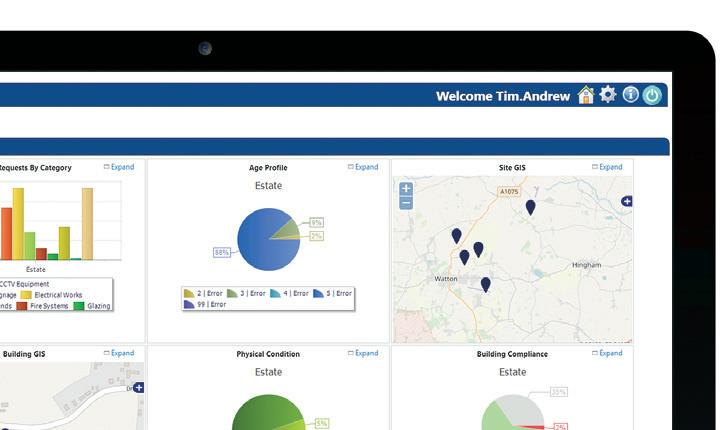
SIMPLIFIED REPORTING
With saved templates and the ability to add further reports as you need them, you won’t need to manipulate your data or spend frustrating hours finding the information you need for your reports. Your CAFM should simply run your reports at the touch of a button.


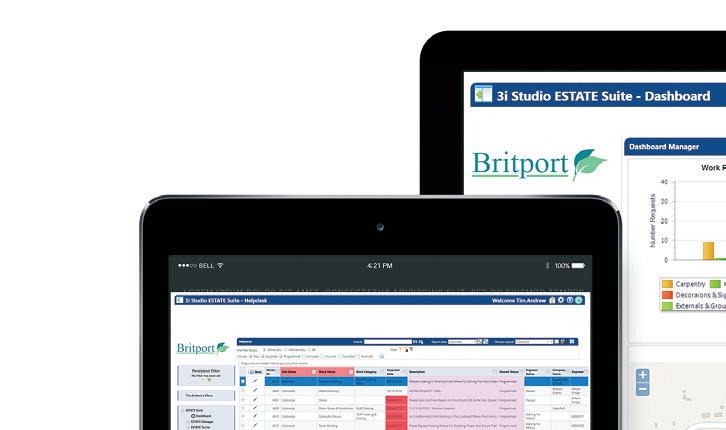
USE
Modern CAFM runs in real time on secure servers, enabling you, your team, and contractors, to work anywhere, without the cost of new technology.
Your CAFM should include a comprehensive Compliance Certificate Register, ensuring everything across your estate complies with relevant legislative requirements. View all your compliance dates and documents for your estates’
assets in once place, and be reminded when renewals are due, so you can plan ahead as well as budget more accurately.

CAFM makes your space reporting easy and fast. Tracking who is occupying which space, its area, the heated volume of each room, along with the overall usage figures, centrally and in real time, means you can release space for its best use; enabling space utilisation decisions to be made.
If your existing CAFM isn’t supporting you the way you need it to, now is the perfect time to decide whether to expand your modules or upgrade it to a solution that does. 3i Studio have written a simple 1-page guide for this, so contact them today to request your copy.
Waterblades have now been fitted to more than 50,000 taps in the UK. That means an annual water saving of 250,000 cubic meters of water, the same as the total consumption of around 2,500 households.
There are 25 million households in the UK so still a long way to go, and there has never been a better time to look into what Waterblade can do for you, with a broad range of flow rated and blade size to suit your tap and basin requirement.
Waterblade is WRAS approved and UK manufactured in premises with ISO 9001 and 14001. We believe it o ers the best low flow handwashing performance there is. Typically giving a payback period of under 3 months. It can be quickly retro fitted to most mixer taps.

www.thewaterblade.com nigel@thewaterblade.com
Carpet Recycling UK is the only independent association dedicated to helping the UK carpet and textile flooring sector be more sustainable. Working with the whole supply chain, it helps foster strategic collaborations and networking to develop viable solutions for carpet and other textile flooring waste. Membership now includes around 80% of manufacturers placing product onto the UK market who take voluntary producer responsibility.
Core Members are Balsan, Betap, Brintons, Condor Group, Cormar, ege, Furlong Flooring, Gradus, Headlam Group, IVC Commercial, Likewise Floors, Milliken, Modulyss, Rawson Carpet Solutions, Shaw, Tarkett and Victoria Group. Through Carpet Recycling UK, the sector is becoming more aware of the Circular Economy and companies are helping their clients with sustainable product ranges, as well as with opportunities for segregating waste streams into reuse, recycling and treatment processes.
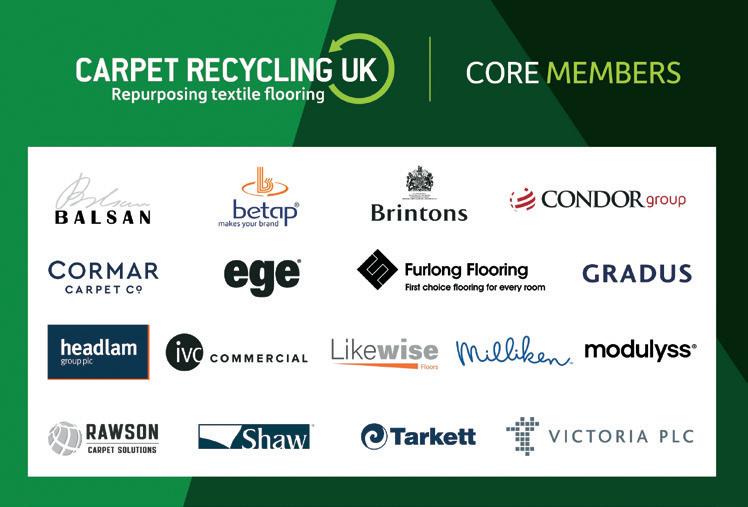
• Find out more about coming on board as a member.
• Attend our ANNUAL CONFERENCE on 21-22 June in Solihull!
www.carpetrecyclinguk.com
VJ Technology has launched a unique, on-site procurement solution designed to reduce costs, improve cashflow and productivity, whilst limiting the impact of deliveries on the environment.
The secure by design VJ iStore® brings a warehouse to any construction site in bespoke modular shipping containers to act as vending machines, so fast-paced infrastructure projects can be fed a constant supply of their most used products that can be clicked and collected in a matter of minutes directly on-site at the point of need.
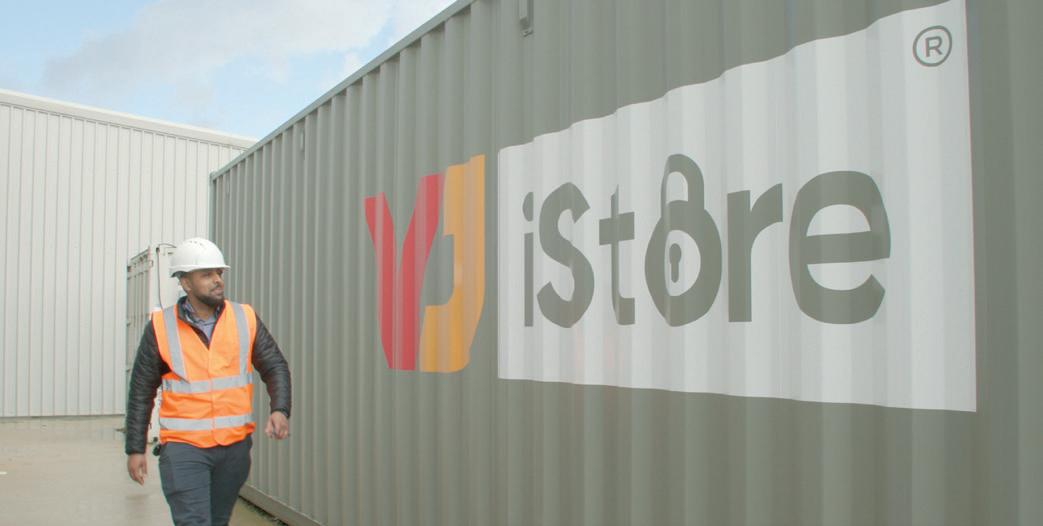
Products are available 24/7 which increases productivity significantly and are only paid for once they have been collected, positively impacting cashflow. It is replenished every 10 to 14 days as managed by the active stock control system resulting in an up to 70% reduction in carbon emissions previously caused by daily deliveries to site. Other benefits include: reduction in process cost; 24/7 access to products that are generally thought of last minute; reduced loss and the from busy sites; no delivery delays; less issues with site restrictions for deliveries.
www.vjistore.com

At Appletree Aircon Services Ltd our customers are our highest priority, assisting customers to make the right HVAC choices, o ering on-site services & maintenance for all manufacturers equipment, condition & life cycle reporting on current equipment, energy reduction programs including any upgrades, refurbishment to replacement requirements or our consultancy services to support the customer through their service and contract validation, we are committed to ensuring we deliver service excellence.
Barry Coe, Founder & Director has spent over 30 years’ working within the HVAC industry for major manufacturers, he brings indispensable knowledge balanced with a personal approach when it comes to supporting customers through the services we provide. www.appletreeaircon.co.uk






The international property and construction consultancy has appointed Ian Shearer to the newly created role of Global Chief Information O icer (CIO) to support its digital transformation journey. Shearer, who will be based out of the company’s UK headquarters, joins the business from ITIS Consulting and brings with him over 30 years’ experience of the computing and construction sectors.
In his new role at Gleeds, Shearer will be responsible for overseeing the next phase in the business’ digital growth plan, identifying opportunities to improve e iciencies through the application of a global IT platform and common so ware. In addition, he will drive the development of new, client-focused digital solutions which will further add value to Gleeds’ proposition.
Bidvest Noonan has appointed Rajiv Gupta as Chief Financial O icer (CFO) for its business in Great Britain.
Gupta joins Bidvest Noonan’s executive team, bringing over a decade of senior finance leadership experience to the company. He has an impressive track record in finance, having held various senior roles across multiple industries.
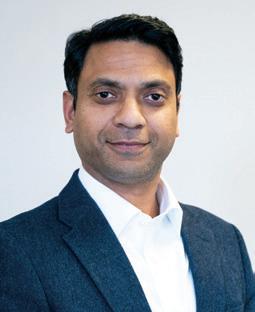
Most recently, Gupta held the position of Finance Director at JLL for almost four years contributing significantly to the growth and stability of his division. Before his tenure at JLL, Gupta was the Head of Finance for Interserve for more than three and half years, during which time he played a key role in the company’s financial planning and strategy. Prior to joining Interserve, Gupta served at Virgin Media, honing his financial expertise and leadership capabilities.
As CFO of Bidvest Noonan’s business in Great Britain, Gupta will be responsible for overseeing the company’s financial performance and driving Bidvest Noonan’s continued growth.

Carlisle Support Services has announced Richard Jenkins as the new Managing Director of its Cleaning and Facilities business.
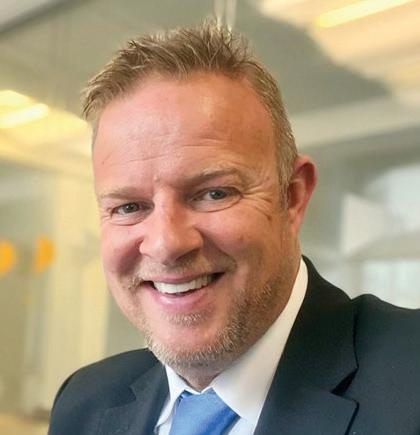
Having joined Carlisle Support Services at the beginning of 2022 as Head of Operations to lead the Cleaning and Facilities division within the UK transport sector, Jenkins has delivered exceptional results across numerous large contracts.
Jenkins has held several leadership positions in his career, including senior and contract management roles. In these roles, he oversaw the management of large commercial properties, o ice buildings and larger multi-building sites.
During his time at Carlisle Support Services, Jenkins has supported the growth of the Cleaning and Facilities division working with renowned clients such as Avanti West Coast, West Midlands Trains, Westminster City Council, Peel Ports, Arriva Rail London and Associated British Ports. In doing so, he has grown divisional service lines to optimise e iciencies and drive down costs across customer operations.

We understand the importance of facilities management and those that work within it. That’s why we place such emphasis on connecting leading FM professionals with top employers.






If you are looking to grow your facilities team across soft services, engineering or facilities management, our FM recruitment team have a rapidly expanding network of job seekers available for temporary, permanent or contract vacancies.
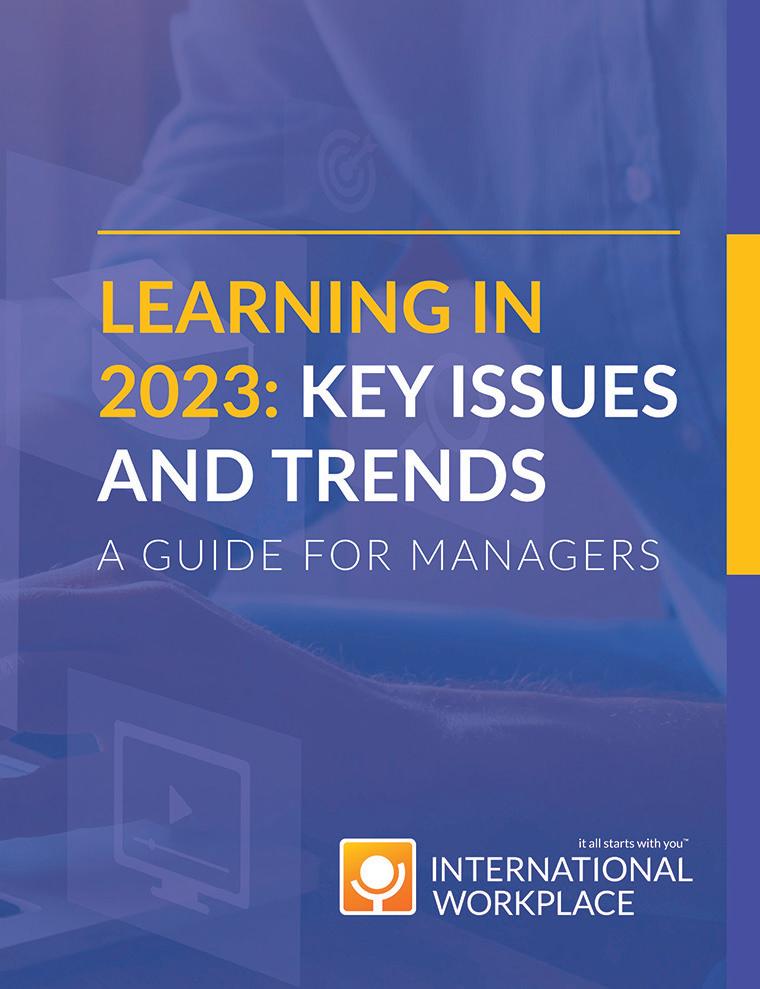
“The pandemic caused shockwaves, including talent disruption, inflation, skills shortages, and global tension,” advised LinkedIn in its 2023 report, Building the agile future. “But with more companies realising that daunting challenges demand new skills, L&D has never been better positioned to help.”
The world of work is unrecognisable from prepandemic days, with styles of work demanding new skills, so upskilling or reskilling will be essential in 2023. As the skills needed in the workplace change, skills attainment must continue.
Respondents to the 2021 Deloitte Global Human Capital Trends survey identified “the ability of their people to adapt, reskill, and assume new roles” as the top-ranked requirement to navigate future disruptions successfully. This includes acquiring not only new skills but as many as 10 per cent more skills year-onyear for a single job.
At the same time, employees must replace old skills with new ones. Over 30 per cent of the skills required three years ago will soon be obsolete, according to Gartner. Today’s employees must be agile and ready to constantly upskill in technical areas as well as in their specific functional roles and will get there through sustained, organisation-wide learning programmes and a culture that supports learning.
Playbook. Training managers have the opportunity to develop a strategic culture of hybrid learning. Before cra ing a successful training strategy, first you must understand the challenges your employees face when training, learning, and accessing the right information to do their jobs.
Many organisations grappled with unprecedented employee turnover in the wake of the pandemic. While some layo s have made headlines in recent months, talent development professionals continue to struggle with skills shortages and turnover risk for critical talent.
The main factors that people consider when pursuing new jobs reflect their desire to stretch, grow and develop new skills. But it’s also important to continue to attract existing sta , and providing learning opportunities is the number-one way organisations are working to achieve this.
To acquire the quickly evolving skill sets required for the workplace, employees can’t stop with the specific functions of a given role anymore, says Udemy’s report on workplace trends. “Learners are looking to boost their business capabilities and expand them across broader categories, including so skills, tech skills and operations. Key business skills matter for every employee, regardless of role or level of seniority.”

expression of decades of work that have been taking place in the background. Has L&D’s understanding of AI and data kept pace during all this? Or are we destined to play catch up with the powerful technologies that bewitch and bedazzle us?”
We can expect to see the growth of AI and the power of the use of data continue apace this year and beyond. The challenge for L&D is whether it can master it.
Those who support learning of essential skills as a foundational element of a stronger, more vibrant culture will see both higher employee engagement and a better-prepared workforce. With a comprehensive, integrated approach to learning that is fine-tuned to the needs of individual teams and learners, organisations will be poised for future growth and well-equipped to handle disruptive change from any source.
“Turns out, robots can’t do everything,” says Dani Johnson, Co-founder and Principal Analyst, RedThread Research. “The pandemic has taught us the importance of the humans that make up an organisation. L&D practitioners are in a unique situation to nurture those humans by meeting one of their fundamental needs – the need to grow and develop.”
The term ‘hybrid’ is ubiquitous these days – hybrid vehicles, hybrid working and now hybrid learning. The pandemic has made us realise how we can work di erently, and the same is true of L&D. “As hybrid work challenges long-held ideas and expectations around engagement, productivity and career development, L&D teams are uniquely positioned to reimagine how organisations tackle today’s toughest challenges and navigate the uncharted waters of tomorrow,” says the Panopto Essential Hybrid Training
Learners are focusing most on communication, underlining the importance of creating alignment, fostering collaboration and teamwork, mitigating conflict and enabling productivity. We’ve seen a growing overlap between personal and professional lives throughout the pandemic. While we call these personal skills, and they do matter for the personal lives of learners, most of these skills really position them for success in the workplace. Skills to help employees manage workplace stress, avoid burnout, and live fuller lives – in or out of the o ice – are pulling learners in. So are skills that empower them to navigate the workplace more e ectively and do their jobs more e iciently.
The results of 2023’s L&D Global Sentiment Survey were revealed in February 2023, showing AI and analytics as the number one trend in L&D.
Says Donald Taylor, Chair of the Learning Technologies Conference: “The power of AI and the ability to handle data have grown hugely more sophisticated. ChatGPT is only the latest, public
www.internationalworkplace.com/solutions/learningin-2023-key-issues-and-treands-a-guide-for-managers
A new report by interior design and fit-out business


Claremont has found UK workers are finding British o ices and places of work to be “uninspiring” and “uninviting”, with many blaming the pandemic for the shi in work attitudes. Claremont surveyed more than 1,000 o ice workers across a range of sectors to identify the impact of an o ice on a workforce’s behaviour and how sta need to feel in order to be happy, healthy and productive.
Dubbed ‘The Workplace Oooh’, the research revealed that almost half of employees – 52 per cent of hybrid workers and 48 per cent of full-time o ice-based workers – feel uninspired by their workplace, while 42 per cent say their o ice doesn’t make them feel valued. It also revealed that the vast majority of today’s employees (84 per cent) expect the o ice to deliver an “experience”, rather than it just being a place to complete tasks.
Workers revealed red flags that can put them o attending the o ice including poor kitchen facilities, poor & outdated o ice etiquette, lack of quiet spaces, no wellbeing spaces, concerns about cleanliness, no access to the outdoors and even bad co ee.
Organisations that lack explicit norms around hybrid work can increase the likelihood of an employee leaving by 12 per cent, according to Gartner, Inc.

“Today’s hybrid work models lack the informal channels for absorbing norms that are present in an o ice setting,” said Caitlin Du y, Director in the Gartner HR practice. “As organisations create more formalised hybrid work models, HR leaders can reduce work friction and increase engagement by establishing and communicating new norms more intentionally and explicitly.” Gartner research found that the most successful hybrid models encompass three main categories of explicit norms those that increase visibility, enable flexibility, and foster connections.
The jobs market showed early indications of recovery in March a er vacancies climbed to their highest levels since the start of 2023 last month, according to the data from jobs site Adzuna. There were 1.04 million advertised vacancies available across the UK this March, up 2.3 per cent month-on-month, and the highest number of jobs available this year. The uptick comes a er almost a year of falling vacancies and represents the biggest monthly growth in advertised vacancies since February 2022.

Sodexo has appointed workplace lenders, Salary Finance, to o er its UK employees a new financial wellbeing benefit. All Sodexo employees will have access to an online platform 24/7 hosted by Salary Finance which will provide free financial education including videos, life guides, webinars as well as tips and tools such as savings calculators, budgeting tools and access to credit scores.
The new benefit scheme will also o er Sodexo’s employees access to apply for a ordable loans repaid through their salary. Provided by Salary
Finance the low-cost loans are aimed at helping people to consolidate debt through a ordable lending as an alternative to credit cards, payday loans and overdra s. Once the application has been agreed the loans [which have a representative rate of 12.9 per cent APR (fixed)] are repaid directly from an employee’s salary.
Mark Goodyer, HR Director, Sodexo UK & Ireland said: “The health and wellbeing of our people is a top priority. The financial pressure of modern life and the increasing cost of living means many people are worrying about money. By o ering this new scheme we hope to provide a valuable service which we hope will go some way to reducing financial stress. There is no obligation for any of our people to use this scheme, we simply want to support our people the best way we can by making available a service which will help them manage their financial wellbeing.”
Over a third (34 per cent) of all employees have admitted they are actively looking for a new role now or are planning to start looking soon. According to the research by CareerWallet, 37 per cent say not being paid enough was a deciding factor in this decision.

A fi h of workers (20 per cent) also admitted they are currently working in a toxic environment with 17 per cent of men and even
more women (22 per cent) unhappy in their workplace. The results varied hugely across age groups with nearly a quarter (24 per cent) of those under 45 stating their working environment is toxic compared to only 15 per cent of those 45 and over.
Craig Bines, CEO of The CareerWallet Group, commented: “Our new workplace survey highlights how many employees are unhappy at work due to

toxic cultures and feeling undervalued. With a third of the workforce considering a new role, many employers need to address these issues as losing key members of sta by underpaying them can end up costing the firm much more in the long run.
"Recruitment is tough at the moment and finding the right employees can be hard, so businesses need to look a er employees more than ever."

Ostara brings clarity and innovation to the often complex world of maintenance and facilities management.
The Ostara CAFM System was designed by FM professionals with extensive experience of managing the maintenance of some of the UK’s largest blue-chip companies. Ostara was developed to improve the quality of your FM/maintenance activity, improve financial controls, reduce costs and ensure that your buildings are compliant and safe.
Ostara’s functionality includes:
� Helpdesk and work order management
� PPM planning tool
� Contractor performance management
� Invoice validation and financial management
� Auditing
880 2582
� Compliance and health and safety
� Extensive Reporting Suite with real time reporting
� Mobile App with offline functionality
� Asset Management
� Internal resource management
The Ostara system is intentionally flexible acknowledging that no two clients have the same requirements. Ostara prides itself on being a market leader in innovation and customer service.